Empowering students with language-based learning differences
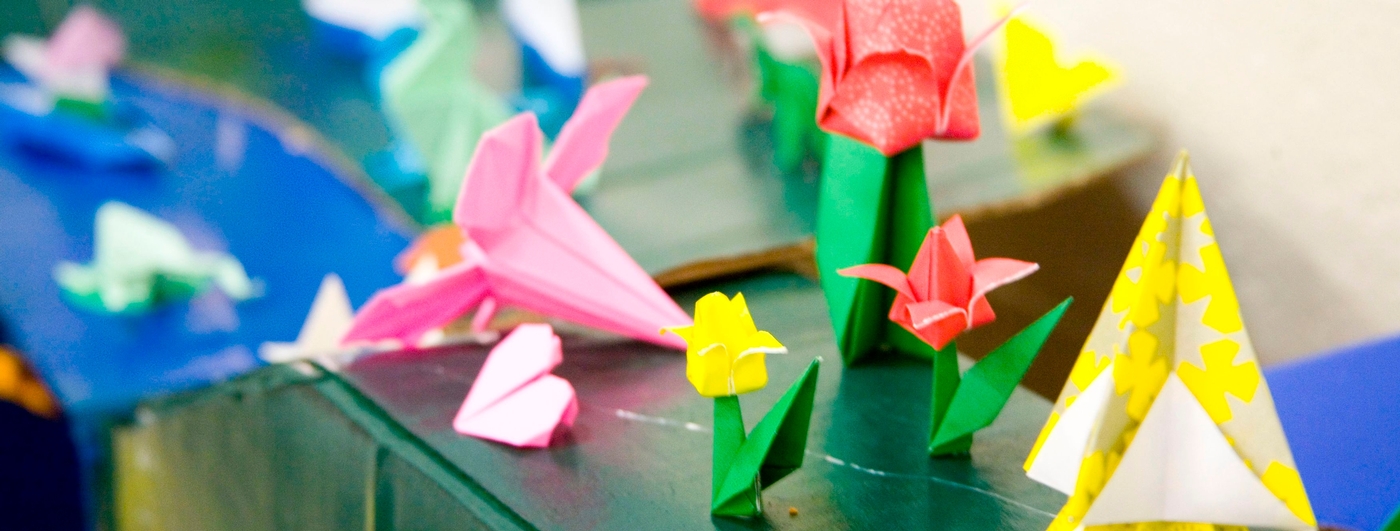
Siena Blog



The Siena School Blog
Discover, Learn, Celebrate, and Empower
Welcome to Siena's blog, your source for helpful, cutting-edge resources tailored to teachers, parents, and other advocates in the learning differences community. We are dedicated to providing a wealth of curated knowledge spanning various topics, ranging from dyslexia advocacy and awareness to classroom teaching strategies, heritage month profiles, and social and emotional health.
No Cap: Tech Detox Works
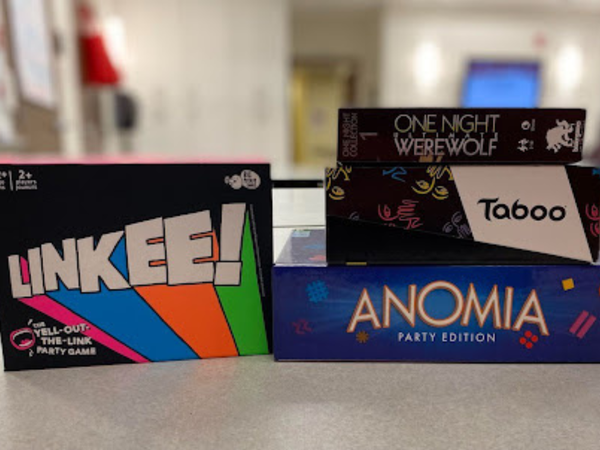
It's lunch time. All around the school, groups of high schoolers sit, lunch bags scattered about, chatting and making jokes. A gaggle of seniors sit at a picnic table by the carpool line, half on the benches, half on the table itself, their raucous laughter loud enough to hear inside. A group of juniors sit on the steps outside the building, food laid out and music playing from a laptop. In the gym, students from all grades shout and shoot baskets, sneaking sips of water and bites of lunches in between plays.
.jpg)
Meanwhile, in the school’s common area, a hodgepodge collection of high schoolers from various grades crowd around a table with a couple of teachers, a hilariously intense game of Taboo under way.
"Potato!" a high schooler shouts.
Ordinarily, this might seem a bit unusual, but this school year is different.
What brought about this wholesome series of images? Yondrs.
New High School Cell Phone Policy
This year, The Siena School launched a new cell phone usage policy that extended our existing policy for middle school up to the high school.
Students in grades 9 through 11 are now required to Yondr their cell phones and other smart devices (Apple Watch, Google Pixel Watch, etc.) from 8:30am to 3:10pm. Seniors are exempt from this policy as they work to self-monitor their tech usage in preparation for college and beyond.
As Head of School Katie Douglas shared in a communication to families at the start of the school year, "As there is not yet enough research to inform the impact of cell phone and social media access for young people at a crucial stage in their development, we are going to take a more proactive approach in our school policy."
The new cell phone policy has already made a noticeable difference this year.
Students and the New Cell Phone Policy

Unsurprisingly, this change was initially met with many complaints. Students objected to this separation from media they were accustomed to consuming during breaks. They insisted that leaving the phone in their pocket was sufficient. On the more serious side, they worried over their ability to contact family and friends in the event of an emergency.
Advisors, faculty, staff, and administrators provided reassurance and alternatives. Students can socialize face-to-face during breaks. They can still participate in TikTok dances; they simply can't record or scroll through TikTok itself during the school day. Regular daily contact with family can be handled through the Front Office, so students can reach their families when needed.
We're about a month into the school year now, and the vast majority of concerns have subsided. That said, not everyone is convinced.
"There are some days where I really need my phone during 8th period," one student shares. "I pick up my siblings and I have to coordinate times."
Another student nods: "I've always used my phone for reminders," he says. "Setting reminders on my computer is not the same."
Some students are noticing the culture shift, though, especially during study halls and lunch. Several students have gone outside to the playground during lunch for some fresh air and activity.
"Before, I would be on social media [during study hall]," “Not having my phone [...] has allowed me to finish my homework before I go home.”
And, for this 11th grader, waiting in the hallway for class to start: "I don't even bring my phone to school. It feels better."
Moreover, several Siena teachers and staff members have noticed students being more present when interacting. “They’re actually talking to each other and engaging in conversations,” said a high school teacher. “It’s refreshing to see.”
Research on Cell Phone and Social Media Use in Teens
Although the lasting effects of social media and frequent cell phone use on teens is ongoing, some recent research suggests benefits of such limits, for example:
- U.S. Department of Health and Human Services (May 2023), Surgeon General Issues New Advisory About Effects Social Media Use Has on Youth Mental Health
- Washington Post (August 2024), Cellphone Bans Spread in Schools Amid Growing Mental Health Worries
- New York Times (August 2024), Why Schools Are Racing to Ban Student Phones
- MoCo 360 (August 2024), Cell-Phone Restriction Pilot Program, Mandatory IDs Among New MCPS Safety Measures
Siena Blog and Resources
Want to know more about lunch games? Here's a list of the ones offered during High School lunch:
For additional relevant information from The Siena School blog, see our Parents and Community category, as well as previous posts about Mental Health Awareness for teens and the benefits of early intervention for LD students.
The Siena School, a national leader in dyslexia education, serves bright, college-bound students with language-based learning differences on campuses in Silver Spring, MD (grades 3-4 and 5-12) and Oakton, VA (grades 3-12).
National Hispanic Heritage Month 2024

The theme for National Hispanic Heritage Month 2024 is Pioneers of Change: Shaping the Future Together.
Siena is highlighting some artistic and cultural contributions to commemorate during this important month celebrating Hispanic history and culture. See below for books, podcasts, and other resources of interest to introduce you to some pioneers of change in the Hispanic community.
Reading Pioneers of Change
Here are some recent fiction and nonfiction books by Hispanic/Latino authors to explore:
- Elizabeth Acevedo — The Poet X and Family Lore
- Kali Fajardo-Anstine — Woman of Light
- Jamie Figueroa — Mother Island
- Lin-Manuel Miranda — In the Heights: Finding Home
- Dan-el Padilla Peralta — Undocumented
- Paola Ramos — Finding Latin X
- Erika Sánchez — I Am Not Your Perfect Mexican Daughter
- Jenny Torres Sanchez — We Are Not From Here
- Alexandra Villasante — The Grief Keeper
- Javier Zamora — Solito
See also Hispanic Executive’s 10 New Releases from Latino Authors and Penguin Random House’s Books to Read for Latine & Hispanic Heritage Month.
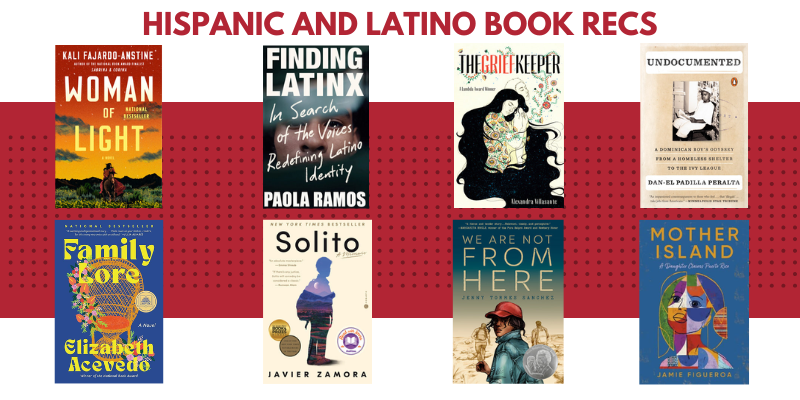
Listening to Pioneers of Change
Here are some podcast recommendation lists for various Hispanic, Latino, and other related topics to explore:
- 10 Latino Podcasts to Add to Your Queue
- 10 Podcasts for Hispanic and Latino/a Students
- 100 Best Latino Podcasts You Must Follow in 2024
- From Vegan Taqueros to a Political Scandal (NPR)

National Hispanic Heritage Month Resources
- See Hispanic, Latino, Latina, Latinx - Which is Best? from Duke School of Medicine and You Say Latino Mini Comic from Terry Blas to learn more about the evolving use of “Hispanic” and “Latino/-a/-x” terminology.
- Check the National Museum of the American Latino website for events and media coverage, and visit the Molina Family Latino Gallery at the National Museum of American History in Washington, DC.
- Explore Hispanic Heritage Month Resources from the National Museum of the American Latino and U.S. Department of Education.
Siena Resources
The Siena School blog has other Heritage Month spotlights related to innovative dyslexia education, including Native American book recommendations, Mexican writer and activist Victor Villaseñor, Chicano artist Ignacio Gomez, African American writers and dyslexia advocates LeDerick Horne and Marcia Brissett-Bailey, and others.
Learn more about Siena’s commitments and ongoing initiatives for Diversity, Equity, Inclusion, and Belonging.
The Siena School proudly serves students with dyslexia and other language-based learning differences in grades 3-12 on campuses in Silver Spring, Maryland, and Oakton, Virginia.
Siena Summer Reading 2024
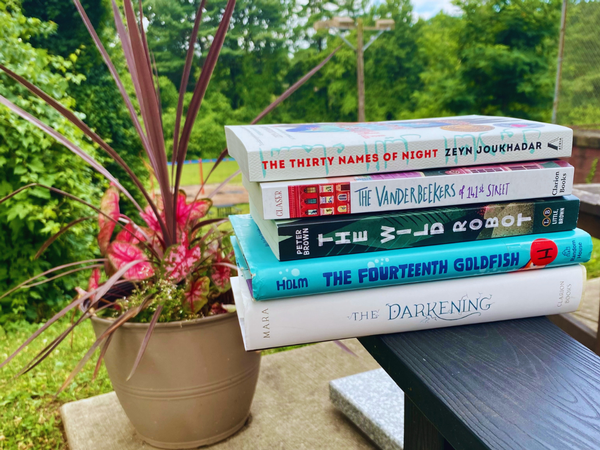
Summer reading is important for students’ overall development, so let Siena help your student(s) find some age-appropriate books that are also interesting, relatable, and social–emotionally beneficial. For students with dyslexia and other language-based learning differences, summer reading lets them practice their decoding, retention, and fluency skills.
Summer Reading Recommendations for Teens and Tweens
At the end of each school year, Siena teachers share summer reading packets, which include recommendations and class readings for students across all grade levels. Teachers assemble reading lists to share with students, always choosing a variety of books that reflect Siena’s diverse community and curriculum. Here are some of the books Siena’s students will be reading this summer:
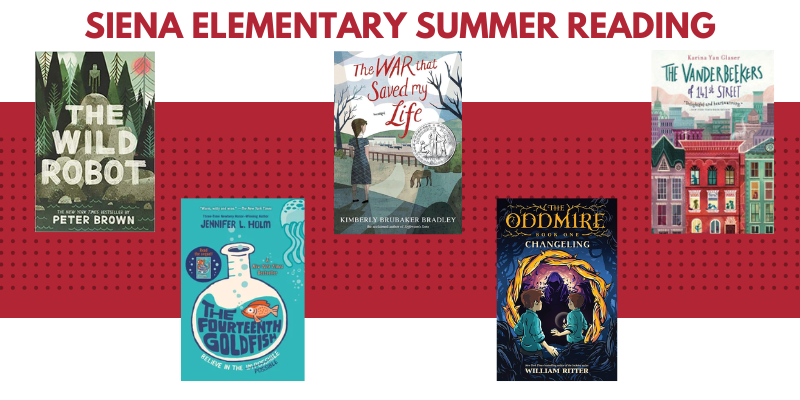
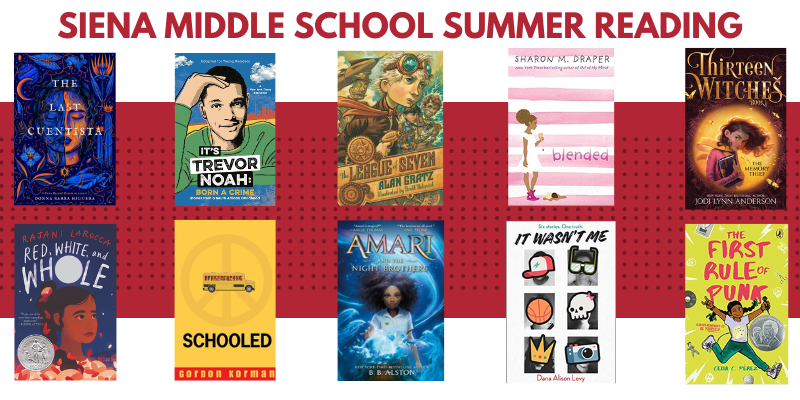
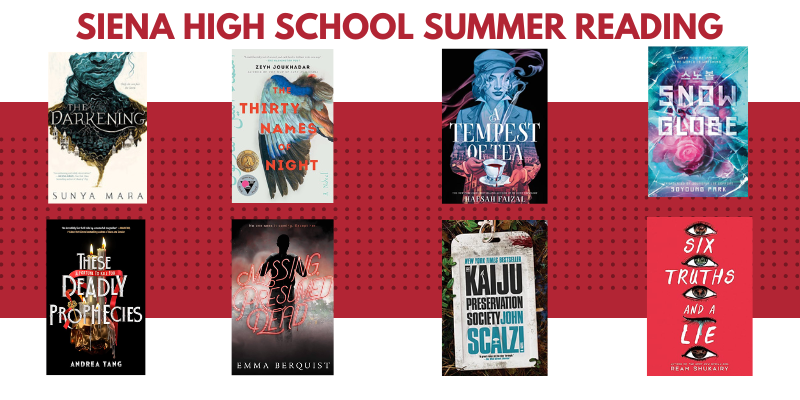
Additional Summer Reading Resources
General Resources
- Summer Reading Tips for Parents from the Learning Disabilities Association of America offers good advice to keep summer reading enjoyable.
- The National Education Association has ample resources, tips, and more for children to Get Serious About Summer Reading.
- The New York Public Library has Staff Picks for Teens and Staff Picks for Kids, including some in Spanish.
- Students who prefer to listen to books—or who perhaps want to read along while listening—should also explore the audiobook selections on Learning Ally, Audible, and AudioFile.
- Students who prefer more visual storytelling can see these 80 Best Graphic Novels for Kids.
Local Resources
- Maryland families can check the Montgomery County Public Library’s Summer Reading Challenge, which includes summer reading booklists by grade.
- Virginia families can check the Fairfax County Public Library’s Summer Reading Adventure and Recommended Reads.
- Washington, DC, families can check the DC Public Library’s Discover Summer for Kids.
- An additional option for summer reading work is Siena Tutors, which provides individual virtual instruction for students in grades 3-12. Learn more here.
Siena Resources
For more information from The Siena School blog, see previous posts about Summer Boredom Busters, successful Summer Academics and Camps, Summer Tech Skills, and Summer Reading 2022.
The Siena School, a national leader in dyslexia education, serves bright, college-bound students with language-based learning differences on campuses in Silver Spring, MD (grades 3-12) and Oakton, VA (grades 3-11).
Women’s History Month Spotlight: Sally Gardner and Laurie Halse Anderson

“Women from every background have long realized that an uneven playing field will never bring equality or justice. Many feel the critical need to speak up and work harder for fairness in our institutions and social interactions.” —National Women’s History Alliance
Women Writers with Dyslexia
The theme of Women’s History Month 2024 is Women Who Advocate for Equity, Diversity, and Inclusion. Siena celebrates Sally Gardner and Laurie Halse Anderson, two writers with dyslexia whose years of work in the arts have helped tell inclusive stories about diverse topics and characters.
As the National Women’s History Alliance reminds us,
During 2024, we recognize the example of women who are committed to embracing everyone and excluding no one in our common quest for freedom and opportunity. They know that people change with the help of families, teachers, and friends and that young people in particular need to learn the value of hearing from different voices with different points of view as they grow up.
Sally Gardner
Diagnosed with a learning difference at age 11, Gardner worked for many years in theatre set design and visual arts in her native England. She then pivoted to writing in her mid-40s. Her first book was The Strongest Girl in the World (1999), and her most recent is The Weather Woman (2023). Other notable Gardner books include I, Coriander, The Door That Led to Where, The Double Shadow, and Tinder. Her books include diverse character types and frequently overlap imaginative stories and historical or fairy tale settings.

See Sally Gardner’s website for a full list of her books for young readers. She’s also a participating artist with artist and dyslexia advocate Gil Gershoni’s Dyslexic Dictionary project.
Disobedience is a part of being dyslexic. A refusal to be classified, to adhere to rules without answers. A defiance against mediocrity. To disobey is to believe in the power of imagination to alter situations. To leave those behind who tell you things must be done the same as they were always done. —Sally Gardner
Laurie Halse Anderson
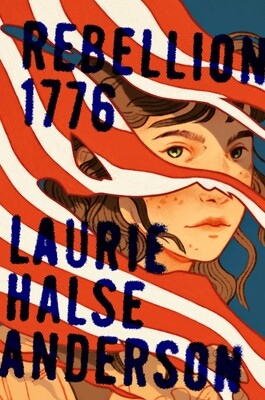
Diagnosed with dyslexia at a young age, Anderson received early intervention for reading and speech learning differences in school. To learn more about her background, see this series of short videos about her life and work from Reading Rockets, where Anderson discusses her schooling and use of haiku as her entry point into writing.
Anderson has written many picture books and young adult novels on a variety of historical and contemporary subjects, including censorship, sexual assault, and eating disorders. Her first book was Ndito Runs (1996), and her newest is Rebellion 1776 (forthcoming, October 2024). Other notable Anderson books include Chains, Shout, Speak (adapted into a movie in 2004), and The Hair of Zoe Fleefenbacher Goes to School.
See Laurie Halse Anderson's website for a full list of her young adult, historical fiction, and picture books, as well as a list of her many awards and honors. There are also educators’ guides and discussion questions for selected books.
I write about the things that teenagers have to deal with every day. Many of them have to cope with hard things, sadly. When they read books about similar experiences, they feel less alone. Those kids who are lucky enough to have wonderful, trauma-free lives can learn what it’s like to not be so lucky from my books. That helps them develop empathy and compassion. —Laurie Halse Anderson
Resources and Events for Women’s History Month
Here are some resources and local events commemorating Women’s History Month 2024:
- Women's History Month, American Women Writers—and Readers, Smithsonian American Women’s History Museum (includes information about their inaugural digital exhibition)
- Women’s History Month Events in Washington, DC
- Women's History Month Events | University of Maryland
- National Women's History Museum news, events, and resources
- On Sunday, March 3, the Military Women's Memorial is kicking off the month with a musical performance and program featuring the U.S. Army Band's chamber players.
Siena Resources
The Siena School blog has other Heritage Month spotlights related to innovative dyslexia education, including WNBA stars A’Ja Wilson and Jewell Loyd and Olympian Meryl Davis for past Women’s History Month posts.
See also our blog posts on Native American book recommendations, Mexican writer and activist Victor Villaseñor, Chicano artist Ignacio Gomez, and NFL star Rashan Gary, and others. Learn more about Siena’s commitments and ongoing initiatives for Diversity, Equity, Inclusion, and Belonging.
The Siena School, a national leader in dyslexia education, serves bright, college-bound students with language-based learning differences on campuses in Silver Spring, MD (grades 3-12) and Oakton, VA (grades 3-11).
Black History Month: Siena Community Playlist

The theme of Black History Month 2024 is African Americans and the Arts. Since the musical arts have been so culturally fundamental in Black American history, Siena is celebrating this rich musical tradition by highlighting the important work our community has done in generating shared playlists.
Music in Black Culture
As Steven Lewis wrote in Musical Crossroads: African American Influence on American Music,
The music of African Americans is one of the most poetic and inescapable examples of the importance of the African American experience to the cultural heritage of all Americans, regardless of race or origin. [...] Over the centuries, African American musicians have drawn on the ancestral connection to Africa as a source of pride and inspiration.
Recognizing this widespread historical importance of Black music, some Siena students created a playlist of songs meaningful to them in a weekly multicultural affinity group. For high school senior Ash, “We’re happy to talk about something as important to us as music in the group. The playlist is a fun new thing Siena did this year for Black History Month, and it’d be great to see it happen during other heritage months.”
Inspired by this group of students, Siena teachers and staff members collaborated on their own Black music playlist, recommending a mix of over 70 songs from the 20th and 21st centuries. Here are just a few songs from this diverse community playlist:
- Billie Holiday — Strange Fruit
- Black Eyed Peas — Pump It
- India.Arie — I Am Not My Hair
- Jon Batiste — Freedom
- Nina Simone — Feeling Good
- Sam Cooke — A Change is Gonna Come
- Scott Joplin — Maple Leaf Rag
- A Tribe Called Quest — Excursions
“We wanted to share our version back with the students about music that matters to us,” history teacher Warren Phenegar added. “We also shared why these songs are important to us, ranging from historical importance to specific personal or emotional reasons.” Both Ash and a classmate shared that they learned about many new songs from the teacher playlist and are seeing this as an ongoing learning experience.
See the Siena Faculty BHM Playlist on Spotify. (Note: some songs have an “E” rating for explicit content.)
Black Music Book and Podcast Recommendations
Those looking for recent books can try Kelefah Sanneh’s Major Labels and Questlove’s Music Is History to get started. For additional Black music book recommendations, see 15 Books About the Impact of Black Music on Pop Culture (Teen Vogue), Books for Black Music Appreciation Month (Penguin Random House), and Popular Black Music Books (Goodreads).
For Black music podcasts, see All Music Is Black Music (National Museum of African American History and Culture), Black Music Matters, Questlove Supreme, and Black Girl Songbook, among many others.
See also this very rich and useful piece on African American Music from Smithsonian Music, which includes some featured playlists, learning modules, and videos.
Siena Resources
See this Black History Month 2024 blog post about Black writers with dyslexia LeDerick Horne and Marcia Brissett-Bailey. Our blog has other heritage month spotlights related to innovative dyslexia education, including Native American book recommendations, Mexican writer and activist Victor Villaseñor, Chicano artist Ignacio Gomez, WNBA stars A’Ja Wilson and Jewell Loyd, NFL star Rashan Gary, and others.
Learn more about Siena’s commitments and ongoing initiatives for Diversity, Equity, Inclusion, and Belonging.
Siena’s mission-focused innovative dyslexia education is designed for students in grades 3-12 with language-based learning differences on campuses in Silver Spring, Maryland, and Oakton, Virginia.
Black History Month Spotlight: LeDerick Horne and Marcia Brissett-Bailey

The theme of Black History Month 2024 is African Americans and the Arts. The arts in all their forms have always been instrumental to Black culture. Since art has been one of our core values from the beginning, Siena is highlighting a pair of contemporary Black writers with dyslexia, as well as sharing some reading and other resources to commemorate this important month.
Writer and Poet LeDerick Horne

Poet, speaker, and advocate LeDerick Horne grew up in New Jersey and received an early dyslexia diagnosis (3rd grade). This laid the foundation for his decades of writing, speaking, and advocacy work on behalf of the LD community and Black identity.
Here are some key points in Horne’s career thus far:
- Horne did foundational work on the governing board of Eye to Eye, a nonprofit mentoring program for LD students. He’s on the advisory board for The National Resources for Access, Independence, Self-Determination, and Employment (RAISE), and he’s a member of the governing board for the New Jersey Coalition for Inclusive Education.
- Horne’s many honors and associations include LDA, Eye to Eye, NAACP, The White House, and the UN Convention on the Rights of Persons with Disabilities, as well as many presentations and media appearances.
- Horne coauthored Empowering Students with Hidden Disabilities: A Path to Pride and Success with Margo Izzo (2016), a guidebook collecting personal stories and strategies for teachers and families.
- He has also released two spoken word poetry collections, Black and Blue in 2011 and Rhyme, Reason, and Song in 2005 (both available on Apple Music). Horne has also been profiled on Poets List and in the short documentary Normal Isn’t Real, among many other platforms.
“What is funny—and ironic—for those of us who have learning disabilities is that the challenges that we were chastised for as children end up becoming these extremely valuable tools out here in the marketplace.” (LeDerick Horne)
Writer and Advocate Marcia Brissett-Bailey
Writer, speaker, and dedicated dyslexia and neurodiversity advocate Marcia Brissett-Bailey grew up in London and received her dyslexia diagnosis at age 16. “I no longer felt stupid” upon hearing about her learning difference, she has shared.
Here are some key points in Brissett-Bailey’s career thus far:
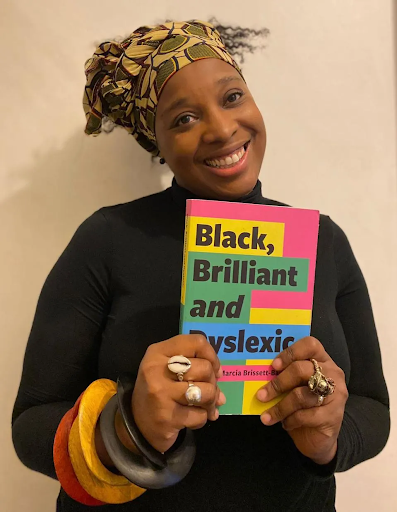
- She is currently Further Education Partnerships Lead at Diversity and Ability, leading their support and guidance for young people under 18, as well as their parents and caregivers, schools, and colleges.
- She edited Black, Brilliant and Dyslexic: Neurodivergent Heroes Tell their Stories (2023), a collection of first-person pieces from the Black dyslexic community from an international, intersectional perspective. In her words, “My book takes us on a journey to challenge structural racism and years of trauma on people who are marginalized by different forms of oppression and may only come forward when they feel safe to be their whole selves.”
- Brissett-Bailey edited a special issue of Contact magazine in October 2021 that highlights the important work of the British Dyslexia Association Cultural Perspective Committee.
- Among other places, Brissett-Bailey has been profiled in Forbes, Business Forums International, and British Dyslexia Association, as well as the Move Beyond Words podcast.
“Dyslexia is daily…but I wouldn’t be authentically me without dyslexia as it’s giving me so many advantages…in seeing the world through a creative lens. My high-level thinking, seeing the bigger picture visually, hyper-focus on my interests, seeing patterns others do not see and conceptual thinking.” (Marcia Brissett-Bailey)
Resources for African American Arts and Culture
See Arts Resources from the Smithsonian for a wealth of local events, spotlights, podcast recommendations, museum exhibits, and more commemorating Black History Month.
The Frederick Douglass National Historic Site in Anacostia has a series of events commemorating Black History Month and the 206th anniversary of Douglass’s birth. Those interested in books by Frederick Douglass can read his three autobiographies (Narrative of the Life, My Bondage and My Freedom, and Life and Times), as well as selected speeches and his only novel, The Heroic Slave.
In addition to the Douglass Historic Site, the Mary McLeod Bethune Council House National Historic Site and Carter G. Woodson Home National Historic Site in DC are also offering weekly programs and special events this month.
Lastly, some recent fiction, nonfiction, and poetry books by Black authors to look up include:
- Dr. Mariel Bruqué, Break the Cycle: A Guide to Healing Intergenerational Trauma
- Common, And Then We Rise: A Guide to Loving and Taking Care of Self
- Kia Corthron, Moon and the Mars
- Brianna Craft, Everything That Rises: A Climate Change Memoir
- Melania Luisa Marte, Plantains and Our Becoming
- Ayana Mathis, The Unsettled
- Ijeoma Oluo, Be a Revolution
- Clint Smith, Above Ground
- Jesmyn Ward, Let Us Descend
Fans of the recent Color Purple film can go back and read Alice Walker’s 1982 novel, as well as her foundational works In Search of Our Mothers’ Gardens (1982) and Possessing the Secret of Joy (1992).
Siena Resources
The Siena School blog has other heritage month spotlights related to innovative dyslexia education, including Native American book recommendations, Mexican writer and activist Victor Villaseñor, Chicano artist Ignacio Gomez, WNBA stars A’Ja Wilson and Jewell Loyd, NFL star Rashan Gary, and others. Learn more about Siena’s commitments and ongoing initiatives for Diversity, Equity, Inclusion, and Belonging.
The Siena School proudly serves students with dyslexia and other language-based learning differences in grades 3-12 on campuses in Silver Spring, Maryland, and Oakton, Virginia.
MLK Day Volunteering and Service Opportunities for Students

“Everybody can be great...because anybody can serve. You don’t have to have a college degree to serve. You don’t have to make your subject and verb agree to serve. You only need a heart full of grace. A soul generated by love.” —Dr. Martin Luther King Jr.
Martin Luther King Jr. Day is celebrated on Monday January 15th this year, and this provides students and their families with a great chance to give back to their local community on a national day of service.
Below are some options for students to volunteer time in the DC metropolitan area—either for the MLK holiday weekend or at other times this year.
Student Volunteering in the DC Area
- See these events for MLK Day at various Montgomery County parks. Volunteer Arlington and Volunteer Fairfax have a list of opportunities in Northern Virginia. In addition, Montgomery County Parks, Fairfax County Parks, Colvin Run Mill Historic Site, and local parks and recreational facilities often have options for park cleanup and more.
- Montgomery County also has information to register for the annual MLK Day of Service.
- Animal lovers could look into shelters and similar organizations such as Friends of Homeless Animals (Northern Virginia), Animal Welfare League of Montgomery County, Montgomery County Animal Services & Adoption Center, and Humane Rescue Alliance. The Montgomery County Humane Society has opportunities for group service projects to collect donations for animals. (Note: Animal rescue organizations usually require parent or guardian accompaniment for volunteers under 18. See their websites for specifics.)
- Food accessibility organizations such as DC Capital Area Food Bank, Shepherd’s Table, Martha’s Table, Meals on Wheels of Central Maryland, Manna Food Center, and Nourish Now always need volunteers to sort, pack, and distribute food to those experiencing food insecurity.
- Girls on the Run Montgomery County and Northern Virginia have opportunities for junior coaches, race volunteers, and more. Fill out the interest form on their website.
- Shepherd's Table also always needs volunteers to help sort clothing for their Clothing Closet.
- The Greater DC Diaper Bank has opportunities for families to volunteer in their Silver Spring warehouse. (Remember that Siena is also a drop-off location for the Greater DC Diaper Bank, which always needs baby supplies for local families.)
- A Wider Circle has year-round volunteer opportunities that help high school students to earn SSL hours, as well as ongoing opportunities for students ages 7-13. Small Things Matter also has year-round volunteering needs for food distribution, assembling personal hygiene kits, school supply drives, and much more.
Online Resources for Volunteering
Students and parents could also explore these online resources for additional volunteer opportunities in their area:
- Fairfax Youth & Family Volunteering
- Teen Volunteer Opportunities | Fairfax County Libraries
- Montgomery County Volunteer Center
- Volunteer Opportunities in Washington, DC | TeenLife
The Siena School proudly serves students with dyslexia and other language-based learning differences in grades 3-12 on campuses in Silver Spring, Maryland, and Oakton, Virginia.
Media and Technology Holiday Gift Ideas

With the holiday season here, families might need some technology and media gift ideas for their children (or themselves!). We’ve put together some good edutainment gift ideas that can help students and their families meet their evolving technology needs for living and learning.
Helpful Computer and Tech Accessories
Start with these desktop and laptop computer accessories:
- Logitech Brio Webcam
- Logitech G Powerplay System Wireless Charging Pad
- Logitech G Yeti Orb Microphone
- Logitech MX Anywhere 3 Mouse
- Logitech Wave Keyboard
You might also be interested in some fun portable technology for travel and at-home smart devices:
- Anker Nano Power Bank Portable Charger
- Twelve South AirFly Pro Deluxe Travel Wireless Headphone Adapter
- Twelve South HiRise 3 Deluxe Wireless Charging Station
- Meross Smart Wi-Fi Plug Mini
- HP Sprocket Portable Instant Photo Printer
Helpful Learning Accessories
Students often find it helpful to listen to music or white noise to help them focus, so headphones and earbuds are always good options:
- 1More SonoFlow Active Noise Canceling Headphones
- Apple AirPods (2nd Generation)
- Logitech Astro A30 Lightspeed Headset
- Puro Labs PuroQuiet Kids' Headphones (with built-in mic)
- See some more noise-canceling headphone recommendations from Sound Guys and CNET.
Here are some other assistive technology ideas for holiday gifts:
- OrCam shares 6 Gifts for Dyslexics That Your Friends & Family Will Love, including assistive reader pens for dyslexia.
- The Live Scribe smart pen and note tablet is another popular technology tool.
- Look at sunrise alarm clocks from brands like Philips and Jall to help students (and parents too!) ease into waking up each morning.
- Keep track of family technology with Apple Apple AirTag and Tile Mate 2.0.
Reading on Tech Topics
An 11th generation Kindle Paperwhite or similar e-reader could be good for dyslexic readers, as could an Audible or other audiobook library subscription.
Here are some recent books on technology and society that families might also find interesting:
- Tomas Chamorro-Premuzic — I, Human: AI, Automation, and the Quest to Reclaim What Makes Us Unique
- Claire L. Evans — Broad Band: The Untold Story of the Women Who Made the Internet
- Stephanie Hare — Technology Is Not Neutral: A Short Guide to Technology Ethics
- Gretchen McCulloch — Because Internet: Understanding the New Rules of Language
- Stephanie L. Woerner, Peter Weill, and Ina M. Sebastian — Future Ready: The Four Pathways to Capturing Digital Value
Additional Resources
See The Siena School blog for additional posts of interest, such as recommendations for winter break reading and winter break podcasts. For Dyslexia Awareness Month 2023, we shared a short guide of books and podcasts to help families in the LD community navigate their children’s specialized learning and social–emotional needs.
The Siena School, a national leader in dyslexia education, serves bright, college-bound students with language-based learning differences on campuses in Silver Spring, MD (grades 3-12) and Oakton, VA (grades 3-11).
Celebrating Native American Arts, Culture, and History
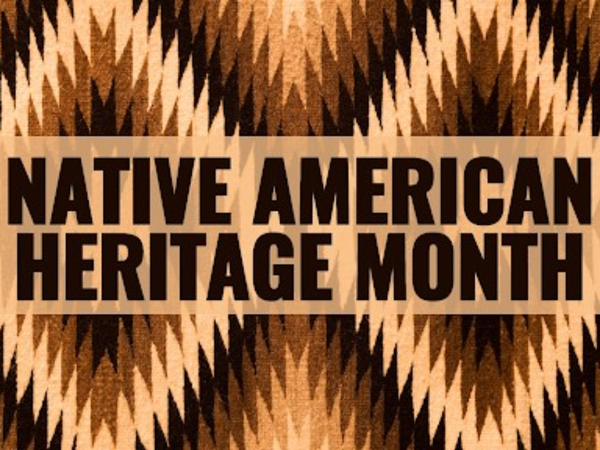
For Native American Heritage Month 2023, Siena is highlighting some artistic and cultural contributions to commemorate during this important month. See below for books, podcasts, and other resources of interest to guide you.
Native American and Indigenous Book Recommendations
Here are some recent fiction and nonfiction books by Native American and Indigenous authors to explore:
- Cherie Dimaline (Metis), Empire of Wild
- Tiara Doney (Gros Ventre and Cree), Poems of a Dyslexic Native American
- Louise Erdrich (Chippewa), The Sentence and The Night Watchman
- Ernestine Hayes (Kaagwaantaan), The Tao of Raven
- Tomson Highway (Cree), Permanent Astonishment
- Robin Wall Kimmerer (Citizen Potawatomi), Braiding Sweetgrass
- Tommy Orange (Cheyenne and Arapaho), There There
- Eden Robinson (Haisla), Son of a Trickster
- David Treuer (Ojibwe), The Heartbeat of Wounded Knee
- Diane Wilson (Mdewakanton), The Seed Keeper

Get more Native American and Indigenous book recommendations from Book Riot, USA Today, Good Housekeeping, and Penguin Random House.
Native American and Indigenous Podcast Recommendations
Here are some podcasts about various Native American and Indigenous topics to explore:
- All My Relations
- Let's Talk Native with John Kane
- Matriarch Movement
- Missing & Murdered
- Telling Our Twisted Histories
- The Henceforward
- This Land
- Unreserved with Rosanna Deerchild
Get more Native American and Indigenous podcast recommendations here:
- 8 Informative Indigenous Podcasts
- Listen to Indigenous Podcasts
- Indigenous Storytellers: Podcasts
- 5 Native-Led Podcasts for Media Literacy
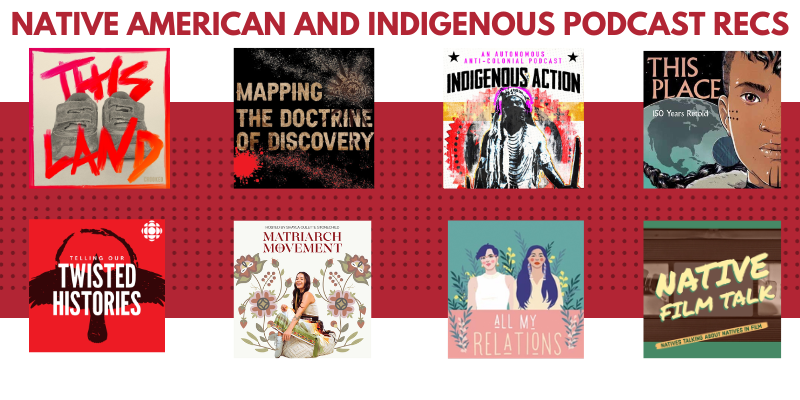
Resources for Native American Heritage Month
November is filled with events celebrating Native American history, culture, and heritage. Here are some resources to start with:
- The homepage of the National Museum of the American Indian has plenty of educational resources, exhibits, and more. See also their calendar for museum-sponsored events in Washington, DC, and New York, as well as online.
- The Smithsonian’s Native American Heritage Month page is full of events, links, and more. The National Archives has ample historical and archival information about Native American culture, including video resources and virtual exhibitions.
- The U.S. National Park Service shares information for educators and children, as well as a Rock Your Mocs photo gallery of Park Service staff wearing traditional Native American footwear in parks.
- PBS is celebrating Native American Heritage month by offering a lot of video content, such as A People’s History of Native America, What Does Electric Pow Wow Sound Like?, and Awesome Alaskan Kids.
- Mountain Time Arts in Bozeman, MT, is a nonprofit arts organization that highlights the arts, history, culture, and natural environment of the Rocky Mountain West and its Sovereign Nations. Learn more about their mission.
Siena Resources
The Siena School blog has other heritage month spotlights related to innovative dyslexia education, including Chicano muralist Ignacio Gomez, Mexican writer and activist Victor Villaseñor, WNBA stars A’Ja Wilson and Jewell Loyd, NFL star Rashan Gary, poet Amanda Gorman, and others. Learn more about Siena’s commitments and ongoing initiatives for Diversity, Equity, Inclusion, and Belonging.
Siena’s mission-focused innovative dyslexia education is designed for students in grades 3-12 with language-based learning differences on campuses in Silver Spring, Maryland, and Oakton, Virginia.
Dyslexia Reading and Podcast Recommendations
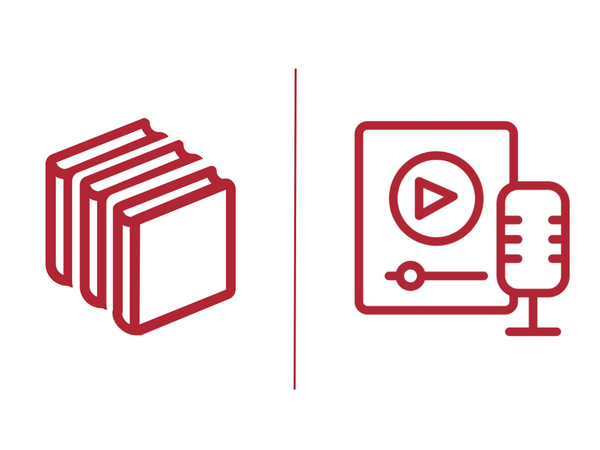
As part of Dyslexia Awareness Month 2023, Siena has put together this short guide of books and podcasts that can help families in the LD community navigate their children’s specialized learning and social–emotional needs.
Book Recommendations for Dyslexia Awareness Month
- Adventures of Everyday Geniuses series
- Fish in a Tree by Lynda Mullaly Hunt
- Gifted and Distractible by Julie Skolnick
- Make it Stick by Peter C. Brown, Henry L. Roediger III, and Mark A. McDaniel
- Overcoming Dyslexia by Dr. Sally Shaywitz
- The Dyslexic Advantage by Drs. Fernette and Brock Eide
- The Knowledge Gap by Natalie Wexler
See also Siena’s in-house parent resource library list, The Literacy Nest, National Education Association, and Yale Center for Dyslexia and Creativity for more reading recommendations.
Podcast Recommendations for Dyslexia Awareness Month
See The Siena School blog for these related resources for LD families:
- Black and Dyslexic
- Fish Don't Climb Trees
- Lessons in Dyslexic Thinking (Made By Dyslexia)
- Dyslexia Coffee Talk (The Dyslexia Initiative)
- Tell Me This episode featuring Siena’s Dr. Jilly Darefsky
- The Invisible Gift
- The Science of Reading episode featuring Dr. Sally Shaywitz
- The Truth About Dyslexia
Blog Post Recommendations for Dyslexia Awareness Month
See The Siena School blog for these related resources for LD families:
- Common Acronyms in LD Education
- Podcasts for Every Interest
- Summer Reading At Siena
- Winter Break Podcast Recommendations
- Winter Break Reading at Siena
The Siena School proudly serves students with dyslexia and other language-based learning differences in grades 3-12 on campuses in Silver Spring, Maryland, and Oakton, Virginia.
Common Acronyms in LD Education: Understanding the Language
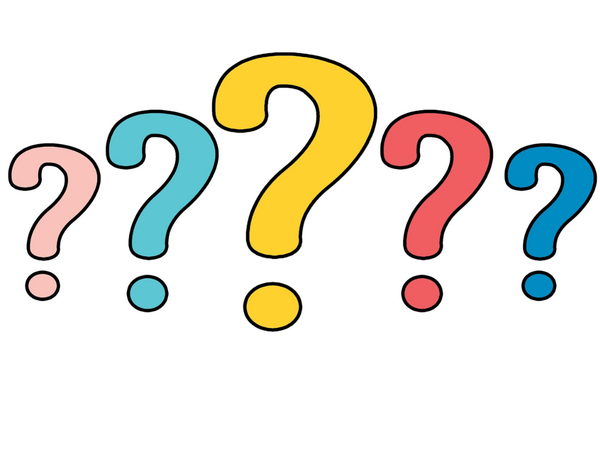
Every professional field has its own lingo, and special education is no exception. As part of Dyslexia Awareness Month 2023, Siena is pleased to offer a short, useful guide to terms that parents will read and hear often as they navigate their child’s education.
Terms such as LD (Learning Differences), IEP (Individualized Education Program), LBLD (Language-Based Learning Differences), and SLD (Specific Learning Disability/Disorder) are common. Parents could hear these often when first connecting with an admissions representative or learning specialist, as well as when going through testing, the IEP process, and discussions with friends and neighbors..
Parents new to the LD community might be wondering about understanding the process and language around an LD diagnosis as they take the appropriate next steps.
Common Terms in the LD Community
Acronyms in the LD community are a useful shorthand for frequently used terms that are integral to the process. This helps make conversations more fluid and understandable during key times, such as:
- neuropsychological evaluation,
- IEP consultation,
- meeting with teachers or administrators
- school admissions materials, and
- discovery call or tour with an admissions team member.
Parents might talk with various specialists, school administrators, advocates, and so on, and having a shared language means having a shared understanding during such an important time. Here are some commonly used acronyms in LD education:
Testing and Diagnosis
Twice Exceptional | |
504 Individual Education Plan | |
ADHD | Attention Deficit/Hyperactivity Disorder |
Auditory Processing Disorder | |
Children and Adults with Attention-Deficit/Hyperactivity Disorder | |
EF | Executive Functioning |
GT/LD | Gifted and Talented/Learning Difference |
LBLD | Language-Based Learning Differences |
Orton-Gillingham reading method | |
OHI | Other Health Impaired |
Multisensory Math | |
SLD | Specific Learning Disability |
SLI | Speech-Language Impairment |
SLP | Speech Language Pathologist or Structured Literacy Program |
Wechsler Individual Achievement Test | |
Wechsler Intelligence Scale for Children | |
Woodcock-Johnson Psychoeducational Battery |
Accommodations and Supports
AT | Assistive Technology |
DC Capital Area Branch of the International Dyslexia Association | |
ESY | Extended School Year Services |
International Dyslexia Association | |
Individualized Education Program | |
Learning Disabilities Association | |
OT | Occupational Therapy |
Washington Independent Services for Educational Resources |
Dyslexia Resources for Families
- Frequently Used Acronyms in Education — Great Schools
- Common Acronyms For Special Education — Plainfield (IN) Community School
- EDFacts Acronym List (downloadable PDF) — US Department of Education
- Parent Resource Center — Weinfeld Education Group
Families in the LD community can also visit Siena’s resources page, student profile, and glossary of terms for additional help. The Siena blog has several posts for parents and community, including ones about the importance of early dyslexia diagnosis and intervention and building confidence in LD students.
The Siena School, a national leader in dyslexia education, serves bright, college-bound students with language-based learning differences on campuses in Silver Spring, MD (grades 3-12) and Oakton, VA (grades 3-11).
Why Is Early Intervention Important?

Early Intervention for Learning Differences
When understanding students’ learning differences, the earlier a diagnosis comes, the better. There can be a lot to think about and research, so let Siena help you get started with the process of understanding why it’s crucial to address dyslexia, dysgraphia, and other language-based learning differences as soon as possible in a child’s life.
Ultimately, early adaptation and accommodation can lead to early attention for students who need it.
Learning Differences, Early Intervention, and Self-Confidence
If a specific LD diagnosis comes in a student’s early elementary years, for instance, then the ideal time to start finding a specialized program or school is right then. Early identification of dyslexia or another language-based learning difference helps families identify their students’ specialized learning needs and begin adopting strategies for success. According to the National Center for Learning Disabilities,
In young children, brain networks for information processing are still being formed, which means that early experiences, and interventions, can have a greater impact on students when they are young. Early screening can result in children receiving extra help sooner and prevent them from falling behind.
Early academic support typically accompanies early social-emotional awareness and self-confidence. As this Child Mind Institute blog post stresses,
[W]orking with children with learning disabilities should be as much about addressing self-concept and self-confidence as it is academics and learning strategies.
Assuming you have gotten your child an evaluation, seen that a plan of support and remediation has been set up for them at school, and checked in regularly to ensure it’s being implemented, you can focus on helping bolster their confidence both in and out of the classroom.
As specific learning needs are identified at kindergarten or early elementary ages, students will begin gaining the self-confidence, structure, and learning strategies that will carry them through their educational journeys.
Recognizing the importance of early diagnosis and prompted by the success of 3rd grade at Siena Northern Virginia, Siena will be adding a satellite campus in Silver Spring for grades 3-4 beginning with the 2024-25 school year. With this upcoming addition of Grade 3 as an option for families, Siena will continue to refine its students’ elementary experience with necessary early intervention, lessons in self-advocacy, and multisensory reading techniques.
“The earlier we can intervene and provide students with an appropriate and welcoming learning environment,” Siena Silver Spring Head of School Katie Douglas adds, “the more time they will have to let their passions and talents shine.”
Resources for Early Dyslexia Intervention
There are ample resources for families seeking early diagnosis and intervention for children with learning differences:
Recognizing and Diagnosing Learning Differences
- Early Signs of Learning Challenges and How To Help Kids With LD Build Confidence (Child Mind Institute)
- Early Childhood Intervention Makes a Difference (LDA)
- It Took Me Too Long to Decode My Daughter’s Dyslexia and Who Can Diagnose LD and/or ADHD (Reading Rockets)
- How to Recognize Signs of Potential Learning Disabilities in Preschool (Edutopia)
- What to Do If Your Child is Falling Behind in School and Learning Disabilities & Differences: What Parents Need To Know (Healthy Children from the American Academy of Pediatrics)
- The LD Checklist: Recognize and Respond and Why Early Screening (National Center for Learning Disabilities)
- Why is Early Intervention So Important for Kids with Dyslexia? (National Center on Improving Literacy)
National and Local Organizations
- Atlantic Seaboard Dyslexia Education Center
- International Dyslexia Association
- National Center for Learning Disabilities
- Learning Disabilities Association of Virginia
- Learning Disabilities Association of Montgomery County
See also Siena’s Resources page for additional organizations and links regarding dyslexia, ADHD, parent support, and much more. School counselor Haley Scranton wrote a blog post on confidence and learning differences as part of Mental Health Awareness Month 2023.
Overall, early diagnosis of dyslexia or another language-based learning difference can put students on a path to a supportive learning environment that meets their academic, social–emotional, and self-esteem needs.
Siena’s mission-focused innovative dyslexia education is designed for students in grades 3-12 with language-based learning differences on campuses in Silver Spring, Maryland, and Oakton, Virginia.
Ignacio Gomez: Chicano Visual Artist and Muralist

“When I was growing up there wasn't much literature or contemporary art images that reflected us. I hope that other Chicanos and Latinos surround themselves with a positive circle of friends and associates. Our peers can help us succeed in life.” —Ignacio Gomez
National Hispanic Heritage Month 2023
One of the themes for National Hispanic Heritage Month 2023 is Building Prosperous and Healthy Communities. For decades, Ignacio Gomez—a Chicano artist and muralist with dyslexia—has used his art on behalf of his culture and community. Siena celebrates Gomez for his dedication to positive representation of Chicano and Latino culture in his paintings, murals, and much more.
“I want Mexican American and Latino kids to continue the journey of learning throughout their lives,” Gomez reflected about the larger cultural influence of his art. “We are a people who love life, art, music, our families and our cultural identity.”
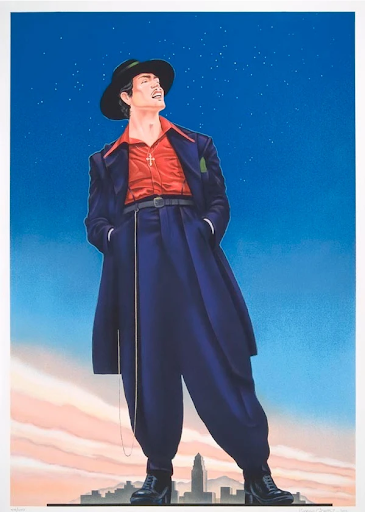
A Chicano Artist with Dyslexia
Born in Boyle Heights, California in 1941, Ignacio Gomez has had a long and important career as an artist and muralist. Gomez had early success in 1978 with his painting of the character El Pachuco, which was used as the poster for the first Chicano play on Broadway, Zoot Suit by Luis Valdez.
In a short autobiographical piece from 2002, Gomez talked about his early career doing technical illustrations, time in the Army Reserves, and education at Los Angeles Technical College and Art Center College of Design in Pasadena. “My uncle and my older brother were painters,” Gomez continued. “I was fortunate to have them as my art mentors. They showed me different murals of Diego Rivera and paintings of El Greco from Spain, and Norman Rockwell art.”
Some of Gomez’s famous recent works include the Cesar Chavez Memorial in San Fernando, California, honoring the late Chicano labor leader and founder of the United Farm Workers. As he reflected, “I hope [the Chavez Memorial] has the same impact on the new generations that Cesar had on us and that they learn about the struggles he fought for.”
Gomez also designed the statues for Mendez Tribute Monument Park in Westminster, CA, which opened in 2022. The monument commemorates the landmark Mendez v. Westminster civil rights case of 1947 about school segregation.
Earlier in 2023, Gomez’s work was part of the Estampas de la Raza exhibition of Mexican and Latino art at the Delaware Art Museum.
National Hispanic Heritage Month Resources
- See this alumni profile of Gomez from the Art Center in Pasadena, California.
- Visit the Mexican American Art archive to see a handful of Gomez’s works online, including a drawing of Chicano civil rights leader and cofounder of the National Farm Workers Association Dolores Huerta.
- Learn about the historical importance of Cesar Chavez, particularly his creation of the United Farm Workers of America and decades of labor activism and advocacy.
- Read this short overview of the historical and cultural importance of zoot suits as the background for Gomez’s famous painting for the 1978 play.
- See the National Museum of the American Latino website for updates and media coverage, and visit the Molina Family Latino Gallery at the National Museum of American History in Washington, DC.
- Explore Hispanic Heritage Month Resources from the National Museum of the American Latino and U.S. Department of Education.
Siena Resources
The Siena School blog has other heritage month spotlights related to innovative dyslexia education, including Mexican writer and activist Victor Villaseñor, WNBA stars A’Ja Wilson and Jewell Loyd, NFL star Rashan Gary, poet Amanda Gorman, and others. Learn more about Siena’s commitments and ongoing initiatives for Diversity, Equity, Inclusion, and Belonging.
The Siena School proudly serves students with dyslexia and other language-based learning differences in grades 3-12 on campuses in Silver Spring, Maryland, and Oakton, Virginia.
Summer Boredom Busters
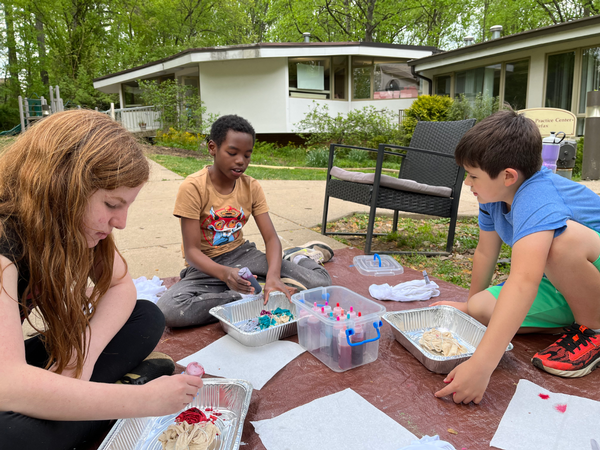
Fun Summer Activities for Students
Another summer is here, and parents might be looking for good activities to both engage their children and give a little bit of structure to the days and weeks ahead.
Ideal summer activities for school-age children often entail movement, creativity, and interactivity; they might also be multisensory and tactile to further engage children’s brains and alleviate boredom.
Scheduling some regular activities has the dual benefit of keeping children active and giving their summer days some structure. Many studies have shown the benefits of structure for children, especially those with ADHD. ADDitude has some good resources for daily schedules for parents and children to adapt for the summer.
Ideas for Indoor Activities
- Take a trip to your local library and get a bunch of books—mix in some old favorites with new ones to keep children reading
- Pick a book or two to write or imagine a prequel, sequel, or other extension of the story as a creative exercise
- Take on some Lego challenges inspired by Lego Masters builds (see also their Lego YouTube Channel)
- Make fidgets from Lego or other materials (these can also help with focus and anxiety management throughout the year)
- Try some fun DIY crafts, repurposing, and upcycling of various materials around the house
- Enjoy some age-appropriate baking or cooking projects and turn your kitchen into a Mini Master Chef
- Have a family dinner and a movie marathon—maybe with food from your Mini Master Chef kitchen
- Try some at-home science experiments, such as these suggestions from Good Housekeeping, Tinybeans, and SplashLearn
- Make slime or homemade play dough
- Create some DIY board games, paper airplanes, musical instruments, and more
- Design a puzzle scavenger hunt with clues to find certain pieces—parents and children can even take turns!
Ideas for Outdoor Activities
- Let children practice outdoor art with some sidewalk chalk, finger painting, fence painting, or tie-dyeing
- Plan a backyard camping night
- Cool off and engage the senses with outdoor water fun
- Experiment with some backyard science—see Steam Powered Family and Childhood 101 for good ideas
- Have children design a DIY scavenger hunt or obstacle course to exercise their creativity and their bodies
- Make (or expand) a backyard garden
- Build a birdhouse or bird feeder and keep a list of which kinds of birds visit
- Take regular walks and create nature collages based on what children see and find
Whether they’re happening indoors, outdoors, or in both places, hands-on activities like these provide opportunities for creativity, imagination, and exploration. They not only keep kids occupied but also allow them to develop various skills while having a great time with their families and/or friends.
Resources for Fun Summer Activities
See these resources for additional activities and ideas to keep school-age children engaged this summer:
- Ann Dolin of Educational Connections recently shared this post with 10 Writing Activities for Kids This Summer, which includes suggestions for elementary, middle, and high school ages.
- 100 Summer Fun Ideas for Kids and Parents (Very Well Family)
- 24 Low-Cost Summer Activities for Kids (Parents)
- 20 New Ideas and Activities to Try This Summer (PBS KIDS for Parents)
- Get Ready for Summer! Ideas for Teachers to Share with Families (Reading Rockets)
Last summer, Siena’s blog featured pieces on summer reading ideas for elementary, middle, and high school ages and tech skills to practice over summer break.
The Siena School proudly serves students with dyslexia and other language-based learning differences in grades 3-12 on campuses in Silver Spring, Maryland, and Oakton, Virginia.
Spotlight on WNBA Dyslexia Advocacy: A’ja Wilson and Jewell Loyd

Women’s History Month 2023
To commemorate Women’s History Month 2023, Siena is honoring WNBA stars Jewell Loyd and A’ja Wilson for their work and advocacy related to dyslexia.
The National Women’s History Alliance chose the theme of Women’s History Month 2023 as Celebrating Women Who Tell Our Stories, highlighting those “who have been active in all forms of media and storytelling including print, radio, TV, stage, screen, blogs, podcasts, news, and social media.” In telling their stories of dyslexia and advocacy off the court, Loyd and Wilson have worked for causes related to education, learning differences, girls’ and women’s basketball, and more.
WNBA Dyslexia Advocacy
Loyd’s and Wilson’s career paths have been quite parallel: both have played in NCAA Women’s Championship games, both were #1 overall WNBA draft picks, and both were Rookies of the Year (Loyd in 2015, Wilson in 2018). Between them, they have 3 WNBA championships (Loyd in 2018 and 2020, Wilson in 2022). They’ve also been teammates several times, winning gold at the 2020 Tokyo Olympics and at the FIBA Women's Basketball World Cup in 2018 and 2022.
A guard for the Seattle Storm since she was drafted first overall in 2015, Jewell Loyd has done a lot of strong advocacy and community work stemming from her learning differences. In 2015 right before the WNBA draft, Loyd wrote about her dyslexia journey for The Players' Tribune:
After being diagnosed [as an adolescent], it took time to figure out what worked for me, but I did. And if I close my eyes right now, I can see the back of my future jersey: Loyd. I won’t know what the front will say for another few hours, but the title I want to carry above all others? Role model.
Basketball was, for Loyd, a “sanctuary” while she was in school, and she applied the same determination and focus she needed on the court to her studies and adjustment to her learning needs.
Loyd’s dyslexia advocacy and role modeling were writ large—literally—in 2016. She was featured in an interactive, three-panel billboard in New York as an Honorary Diplomat for Eye to Eye, a nonprofit mentoring program in which elementary and middle school students with learning differences work with high school or college students with learning differences.
See the video of the billboard here.
During Women’s History Month 2022, Loyd partnered with 94 Feet of Game and We The Best Foundation for the Future of Basketball Is Female campaign, helping provide 1,000 scholarships for female basketball players, along with access to foundational basketball skills.
A fellow WNBA role model and dyslexia advocate, A’ja Wilson has been a forward for the Las Vegas Aces since being drafted in 2018. She wrote about her dyslexia journey for The Players’ Tribune in 2018, sharing that she actively sought accommodations when starting at the University of South Carolina:
Before school started I sat down with my parents and an academic advisor from South Carolina, and we decided that every professor should know about my dyslexia.
I never had to just go up to Coach [Dawn Staley] and tell her. But she knew, even before the recruiting process had ended. Freshman year, it was kept pretty quiet. I was doing all right in college thanks to having better resources—and honestly being able to record lectures instead of having to write everything down. That helped a lot.
Wilson later cofounded the A’ja Wilson Foundation with her parents. Through her foundation and public presence as a WNBA star, Wilson supports children with dyslexia and their families to, according to their mission statement, “empower them to reach their full potential through educational programming, workshops, camps and grant opportunities.”
Moreover, the A’ja Wilson Foundation does a lot of work to prevent bullying of students who learn differently through education and mentoring programs. Learn more about the A’Ja Wilson Foundation’s recent work on their Twitter, Instagram, and Facebook channels, especially under the hashtags #SpeakUp, #ChooseKindness, #DyslexiaAwareness, and #PowerToEmpower.
In using their public visibility as professional athletes and role models, Loyd and Wilson continue to advocate for dyslexia awareness and support to help students across the country.
Additional Links and Resources
Learn more about them here:
- “Jewell Loyd Talks about the WNBA Draft, Being Dyslexic and Finding Comfort in Basketball” (SB Nation, 2015)
- “Niles West Product and WNBA Champion Jewell Loyd Never Let Dyslexia Define Her” (Chicago Sun-Times, 2019)
- “The Incomparable Journey of Jewell Loyd” (Sports Illustrated, 2020)
- “How Jewell Loyd is Giving Back to Chicago and Inspiring the Next Generation of Female Hoopers” (Slam, 2022)
- “How Team USA's A'ja Wilson is Using Her Own Life Experiences to Support Others in Similar Situations” (IOC, 2021)
- “South Carolina’s A’ja Wilson Opens Up About Her Struggle with Dyslexia” (Slam, 2018)
See The Siena School blog for other heritage month spotlights related to our innovative dyslexia education, including NFL linebacker Rashan Gary, writer and activist Victor Villaseñor, poet Amanda Gorman, figure skater Meryl Davis, film director Ann Hu, and astrophysicist Dr. Maggie Aderin-Pocock. See also this 2021 blog post on dyslexia awareness and advocacy at Siena.
Siena’s mission-focused innovative dyslexia education is designed for students in grades 3-12 with language-based learning differences on campuses in Silver Spring, Maryland, and Oakton, Virginia.
Spotlight on the NFL's Rashan Gary

“I teamed up with Made By Dyslexia to advocate for those who think differently.” —Rashan Gary
Black History Month 2023
To commemorate Black History Month 2023 and the importance of strong advocacy and raising awareness of what dyslexia is, Siena is honoring Green Bay Packers linebacker Rashan Gary for his dedicated dyslexia advocacy.
Gary was born in northern New Jersey in 1997 and attended college at the University of Michigan from 2016 to 2018. He was diagnosed with dyslexia in middle school, sharing in 2021 that “it’s not going to affect me because it’s my superpower. So that’s why I challenge anybody with dyslexia to keep pushing forward and keep chipping away.”
Gary regularly uses his platform as a professional athlete to be the kind of role model he didn’t have growing up. He’s strongly dedicated to “raising awareness about dyslexia and advocating for educator awareness and the critical screening resources are important to me,” as he shared in a recent Instagram post.
Rashan Gary’s Dyslexia Advocacy
Since 2020, Gary has used the NFL’s My Cause My Cleats program to raise awareness for Made By Dyslexia. As the NFL shared in this press release, “Players combine forces with artists and cleat manufacturers each year to create these custom-designed cleats that showcase their causes in a way that resonates personally to the player, their fans and the cause.”

My Cause My Cleats enables players to support causes important to them through one-of-a-kind, hand-painted cleats to wear in a regular season game on a particular week. The cleats are later auctioned off for charity.
Laura Haas, who designed Gary’s cleats for 2022, shared that her own neurodivergent thinking is “kind of my superpower,” and she wanted to highlight “joy and individuality” in her design. (See here for the Instagram post.) Gary’s cleats from 2020 and 2021 likewise highlighted how his dyslexia is a strength for him, as well as how the dyslexic brain might see and process information.
- Watch the NFL’s 2022 ad featuring Rashan Gary here.
- See here for a photo gallery of Gary’s 2022 cleats.
- See here for Gary’s video from 2021 about his cleats.
Additional Links and Resources
Gary has been a visible public figure since he was a nationally recognized high school football player. He understands how important it is to use his platform to advocate for dyslexia awareness and support. Gary has also worked with the Michigan Dyslexia Institute to talk about his journey and inspire others to see superpowers, creativity, and perseverance within themselves.

Other NFL players with dyslexia have raised awareness through My Cause My Cleats, such as Spencer Drango of the Cleveland Browns, Lawrence Guy of the New England Patriots, and Max Scharping of the Cincinnati Bengals.
The Siena School blog has other heritage month spotlights related to innovative dyslexia education, including writer and activist Victor Villaseñor, poet Amanda Gorman, figure skater Meryl Davis, film director Ann Hu, and astrophysicist Dr. Maggie Aderin-Pocock. See also this 2021 blog post on dyslexia awareness and advocacy at Siena.
Learn more about Siena’s commitments and ongoing initiatives for Diversity, Equity, Inclusion, and Belonging.
The Siena School proudly serves students with dyslexia and other language-based learning differences in grades 3-12 on campuses in Silver Spring, Maryland, and Oakton, Virginia.
“Be the BEST version of you that you can be. No one will ever do it better. We have dyslexia, and we can accomplish ANYTHING we put our minds to.” —Rashan Gary
Winter Break Podcast Recommendations

Keep your high school and middle school students excited about learning and knowledge over winter break with these podcast recommendations from Siena students and faculty.
Podcast Recommendations for Teens
Check out these history, culture, and society podcasts for your teen:
- The Daily Show with Trevor Noah
- Footnoting History
- Forever Ago
- Let's Be Real with Sammy Jaye
- Outside Magazine Podcast
- Pop Culture Happy Hour
- Spilled Milk Podcast
- Stuff You Should Know
- Uncivil
Is your teen interested in science and related topics? Give these podcasts a listen:
- 60-Second Science
- Are We There Yet?
- Brains On!
- Hidden Brain
- How I Built This
- Invisibilia
- Radiolab
- Science Friday
- Science Rules!
- Wow in the World
Teens interested in books, music, and storytelling can try out these podcasts:
Give these family-friendly podcasts a listen:

More Podcast Resources
Common Sense Media lists these Great Podcasts for Tweens and Teens, and Parents magazine recommends 9 Great Podcasts for Teens. See Siena’s blog for winter break book recommendations and summer break book recommendations. See also this earlier blog post about podcasts from Siena Reading Teacher Leslie Holst.
Siena’s mission-focused innovative dyslexia education is designed for students in grades 3-12 with language-based learning differences on campuses in Silver Spring, Maryland, and Oakton, Virginia.
Winter Break Reading at Siena

Looking for book recommendations to support dyslexic readers heading into winter break? Let Siena’s elementary and middle school teams help.
With winter break approaching, it’s important for students—especially ones with language-based learning differences—to read for at least 20 minutes a day to keep their literacy, decoding, and related skills honed. Regular daily reading will help keep students engaged through winter break with a variety of enjoyable, teacher-recommended books, series, graphic novels, short story collections and more.
Elementary School Book Recommendations
Here are some of our elementary classes’ top book recommendations this year so far, as suggested by elementary teachers:
- City Spies by James Ponti
- Nick and Tesla’s High-Voltage Danger Lab by Bob Pflugfelder and Steve Hockensmith
- The Mystery of Black Hollow Lane by Julia Nobel
- The Greystone Secrets #1: The Strangers by Margaret Peterson Haddix
- Flunked: Fairy Tale Reform School #1 by Jen Calonita
Elementary student Ania recommends Flunked: “I thought it was really interesting, and I liked that I never knew what was going to happen next.” Ania’s classmate Grayer really enjoyed Nick and Tesla’s High-Voltage Danger Lab: “It was a good book. It was fun to read about the brother and sister making things with their uncle in his lab.”
.png)
Middle School Book Recommendations
Teachers from Siena’s middle school English and Reading teams recommend these books for readers in 6th to 8th grades:
- Miles Morales: Spider-Man by Jason Reynolds
- City of Ember: The Graphic Novel by Jeanne DuPrau (Adapted by Dallas Middaugh)
- Warcross by Marie Lu
- The Inheritance Games by Jennifer Lynn Barnes
- You Should See Me In a Crown by Leah Johnson
- The Hunger Games by Suzanne Collins
- Ungifted by Gordon Korman
- Scythe by Neil Shusterman
- Pumpkin Heads by Faith Erin Hicks
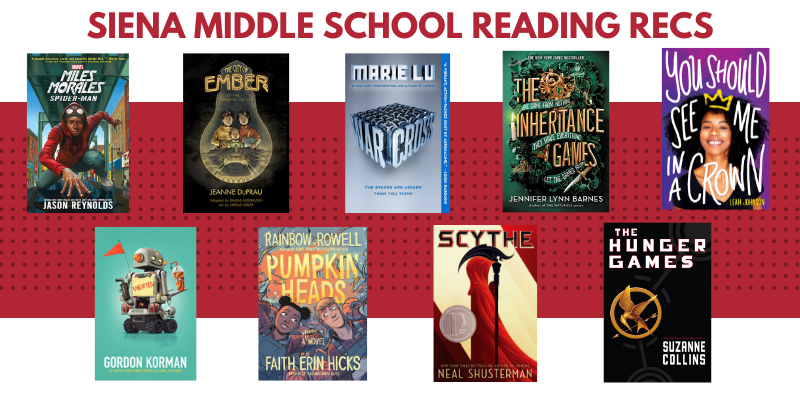
Resources for Book Recommendations
Young readers who prefer audiobooks can look for these and other books in the offerings from Learning Ally, Audible, and the Young Adult Library Services Association, among other resources.
Education consultant Ann Dolin wrote about engaging reluctant readers over summer break, including a handful of recommendations for different ages and suggestions for reading as a family. Although winter break is shorter than summer, parents could adapt some of Dolin’s ideas for their students—such as starting a book series to pique their interest in the next few weeks.
Whether it’s over winter or summer break, giving students some control over the process of selecting books when they’re not in school can motivate them to read for at least 20 minutes a day.
Here are some additional resources to help students with summer reading:
- Fairfax County Public Library Teen Events and Resources and Montgomery County Public Library For Teens offer recommendations, events, programs, and more. Check public libraries in your area for similar summer reading services for young people.
- The National Education Association offers ample resources, activity ideas, and links for families to find diverse books.
- The New York Public Library’s Staff Picks for Teen Readers goes back to Spring 2019 and lists English- and Spanish-language books. The NYPL blog also has expert-curated lists of books and other materials for school-aged readers.
See Siena’s blog for winter break podcast recommendations, summer reading recommendations, and posts about authentic assessments at Siena and about a handful of Siena alumni who’ve returned as staff members.
The Siena School, a national leader in dyslexia education, serves bright, college-bound students with language-based learning differences on campuses in Silver Spring, MD (grades 3-12) and Oakton, VA (grades 3-11).
Lessons in Dyslexia Advocacy from Siena Alumni

There are certain challenges that come with being a student with dyslexia. There are also challenges to being a new student. The reason I can relate to what current students are doing/thinking/feeling is because I did it/thought it/felt it all too. —Meribor Matusow (Siena ‘18), Events Coordinator
As part of Dyslexia Awareness Month, Siena is again reflecting on the strategies we regularly adopt to support our students’ different learning styles.
Students at both our Silver Spring and Northern Virginia campuses have access to models of success and resources every day to enhance their learning and dyslexia advocacy, such as daily slides highlighting notable people with dyslexia, assistive technology, and a regular emphasis on self-advocacy.
A relatively new model of success that Siena students have access to is Siena alumni who’ve returned to the community as paraeducators or staff. There are currently four alumni who work regularly at Siena: Perry Singletary (Class of 2011) and Ryan Salomon (Class of 2012) are paraeducators at Siena Silver Spring, Brandon Butsavage (Class of 2016) is Office Manager at Siena Northern Virginia, and Meribor Matusow (Class of 2018) is Events Coordinator at Siena Silver Spring.
In making the transition from Siena students to Siena staff, these alumni regularly model success for students while also providing an additional layer of understanding as former students.
Dyslexia Accommodations for Students
Siena is there to provide a mentor-mentee relationship where it’s tailored toward the needs of the student and their learning differences. I know that personally because it was 9 years as a student for me. —Brandon Butsavage (Siena ‘16), Office Manager
A particular benefit of alumni working at Siena is that they can see aspects of themselves in current students. “Every student reminds me either of a classmate or of myself,” Brandon Butsavage recently shared, underscoring the unique perspective that Siena alumni bring to their interactions with current students.
Paraeducator Ryan Salomon has applied his experience as a Siena student to his current work in the classroom and in after school. “I understand how Siena teaches and how our students learn best,” he shared. Salomon credits his awareness of how to keep students engaged and focused to his years as a Siena student who had to learn how to do the same. When helping elementary students with their homework during after school, for example, Salomon has applied some methods for spelling and sounding out words that he learned as a student.
Similarly, Perry Singletary recently gave elementary student Grayer a lesson in discovering how he learns best in math class. Having worked with elementary students in previous jobs, Singletary is now a paraeducator with Siena’s elementary team. When Grayer couldn’t quite figure out an addition problem in Prodigy, Singletary shared, “I realized how I could help him through the process because he was doing something similar to what I did as a student—and still do now.”
Instead of trying to do the math problem horizontally on the laptop screen, Singletary rewrote the problem vertically on a whiteboard to show Grayer a different way of seeing—and then solving—it that worked for him. Once they worked together to break down the problem on the whiteboard, Grayer went back to Prodigy to enter the solution.
Using a multisensory accommodation helped Singletary lead Grayer through the mathematical process because the same approach has worked for her in the past.
Dyslexia Advocacy for Students
Recently, Singletary also helped give 4th grader Sofia a lesson in self-advocacy. Sofia was hesitant to ask questions in class because she was worried about being wrong or being the only student who didn’t know the answer. “I reminded her that no question is a bad question—especially at a school like Siena,” Singletary noted.
In this video about his own dyslexia advocacy, alumnus Partha Roy (Siena ‘18) shares how he applied the tools he learned as a Siena student while he was in college. (Roy recently graduated magna cum laude from Eastern Mennonite University.)
Like Roy, Meribor Matusow has continued to apply the lessons in self-advocacy she learned as a student. “Modeling success as someone with dyslexia isn’t about how fast/well I can read and write now,” she shared. “It’s about being able to go into life as an adult and find or create accommodations that I need to be successful.”
Resources for Dyslexia Advocacy and Accommodations
As Siena staff members, these four Siena alumni regularly teach students lessons in accommodations and self-advocacy, as well as model success for life after graduation.
This blog post on dyslexia advocacy and accommodations from Dyslexia Awareness Month 2021 highlights the assistive tools, support networks, and principles of self-advocacy students have access to. Learn more about self-advocacy at Siena and Siena’s alumni community on our website.
Siena’s mission-focused innovative dyslexia education is designed for students in grades 3-12 with language-based learning differences on campuses in Silver Spring, Maryland, and Oakton, Virginia.
Spotlight on Victor Villaseñor

“I wanted my children to see examples of real Mexican heroes, since I grew up thinking Mexicans could only wash dishes and work in the fields.” —Victor Villaseñor, on his book Rain of Gold
National Hispanic Heritage Month 2022
As part of National Hispanic Heritage Month this year, Siena is honoring Victor Villaseñor for his decades of successful work as a writer, speaker, and activist with dyslexia.
The National Council of Hispanic Employment Program Managers (NCHEPM) chose Unidos: Inclusivity for a Stronger Nation as the theme for National Hispanic Heritage Month 2022. Since 1988, National Hispanic Heritage Month has spanned September 15–October 15 each year. The September 15 start date coincides with the independence day anniversaries for several Latin American countries, including Chile, Honduras, Mexico, and Costa Rica.

A Latin Writer with Dyslexia
Born in Carlsbad, California, in 1940, Villaseñor has been a prolific author of fiction, nonfiction, and children’s works since publishing his first books, Macho! and Rain of Gold, in 1991.
Perhaps unusually, Villaseñor was an avid reader and writer well into adulthood before he realized he’s dyslexic.
Villaseñor was diagnosed with dyslexia in his mid-40s, when his sons were also being tested. As he remembers his conversation with the learning specialist who diagnosed his sons and him,
“Do you see rivers between the words?” she asked.
“All the time,” I said. “I look at a page and I have to take a big breath to stop the rivers from coming down the page between the words from the left up high to the right down low. And you mean other people don’t see these rivers moving on the page?”
She shook her head, “No, they don’t. Oh, I’ve never had someone so far off the charts. It’s incredible, it’s a miracle that you ever learned to speak or read. And to write, to become a professional writer, is beyond my comprehension. How did you do it?”
I couldn’t talk anymore. Finally somebody understood what I’d gone through to become a writer.
Since then, Villaseñor has published numerous other books, including the memoirs Burro Genius and Crazy Loco Love and Mexican folktales for children such as The Stranger and the Red Rooster and Goodnight, Papito Dios. (See here for his bibliography.)
In addition to his prolific writing and public speaking, Villaseñor has also done a lot of advocacy and community building through such efforts as Snow Goose Global Thanksgiving, an annual music festival with shared food that takes place on the Sunday before Thanksgiving. Villaseñor also runs workshops for teacher training, Indigenous history, and biographical/autobiographical writing.
For more information about Villaseñor, see these videos on his website, as well as this profile from the Yale Center for Dyslexia & Creativity.
What makes me a special kind of author and public speaker is that I didn’t learn how to read until the age of 20. And because of that, I didn’t get educated into Western civilization and so I was able to retain my grandmother’s Indigenous Native American Sacred Knowledge. —Victor Villaseñor
National Hispanic Heritage Month Resources
There are ample online resources to learn more about National Hispanic Heritage Month and upcoming events and exhibitions commemorating it:
- Learn more here about National Hispanic Heritage Month from the Library of Congress and the National Endowment for the Humanities. The website includes resources for teachers and information about past and present exhibits of interest.
- See the United States Census Bureau’s overview of National Hispanic Heritage Month.
- Visit the National Archives website for a wealth of information about National Hispanic Heritage Month, including video resources, online exhibits, and digitized materials from Presidential Libraries.
- While the National Museum of the American Latino is still under construction, visit their website to learn more and watch a video message from Museum Director Jorge Zamanillo. In the meantime, the Molina Family Gallery at the National Museum of American History is open to the public and features multimedia storytelling and physical relics. Take a virtual tour here.
Resources from Siena’s Blog
Learn about Siena’s commitments and ongoing initiatives for Diversity, Equity, Inclusion, and Belonging. And, see Siena’s blog for related material from earlier this year, including spotlights on filmmaker Ann Hu from AAPI Heritage Month, poet Amanda Gorman from Black History Month, and Olympian and activist Meryl Davis from Women’s History Month.
The Siena School proudly serves students with dyslexia and other language-based learning differences in grades 3-12 on campuses in Silver Spring, Maryland, and Oakton, Virginia.
“The beginning of all wisdom is to understand that you don't know. To know is the enemy of all learning. To be sure is the enemy of wisdom.” —Victor Villaseñor, Burro Genius
Summer Reading at Siena
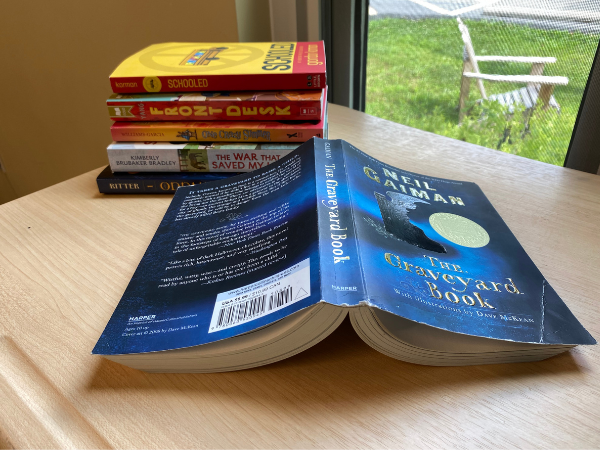
Benefits of Summer Reading
Summer reading is important for students’ academic and social-emotional development, but how can they find age-appropriate books that are also interesting and relatable to their experiences?
As this 2021 post from Scholastic points out, “Summer reading is critical, not only for helping kids maintain learning while school is out, but also for fostering social–emotional development, discovering the joy of stories, and elevating the importance of lifelong learning.”
Summer reading—even 15-20 minutes a day—helps students with dyslexia and other language-based learning differences: it will keep their reading, retention, and decoding skills sharp in preparation for the coming school year. Regular reading also helps students’ social–emotional skills by sharpening their awareness of the world, as well as increasing their empathy and ability to understand various points of view.
Getting students to read over the summer can be a challenge. But knowing what their peers have read and enjoyed can help, especially when students have diverse stories, characters, identities, and genres to choose from.
Summer Reading Recommendations for Teens and Tweens
At the end of the school year, Siena teachers shared summer reading packets, which included recommendations and class readings for students across all grade levels. Teachers typically assemble their own reading lists to share with students, and they always choose a variety of books that reflect Siena’s diverse community and curriculum. Here are some of the books Siena’s students have been reading this summer:

To further help students and parents, Siena Humanities chair and middle school English teacher Beth Fabijanic shared that the Young Adult Library Services Association (a division of ALA) offers ample recommendations for teen/tween readers, including:
- Quick Picks for Reluctant Young Adult Readers
- Best Fiction for Young Adults
- Great Graphic Novels for Teens
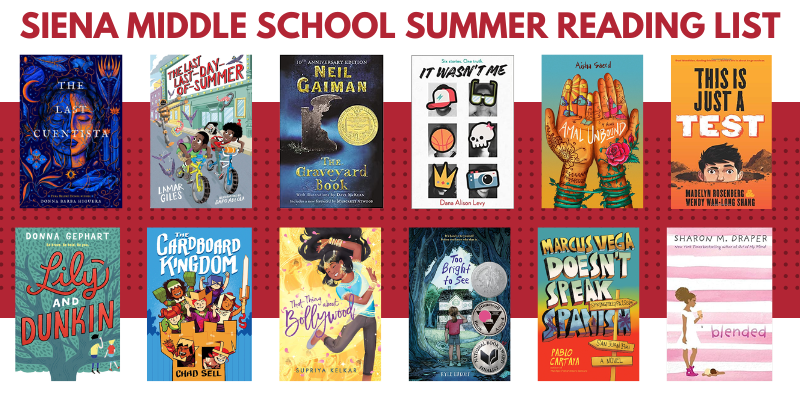
Students who prefer to listen to books—or who perhaps want to read along while listening—should also explore the audiobook selections on Amazing Audiobooks for Young Adults, Learning Ally, Audible, and Audiobook Sync (which updates free audiobooks for teens every week).
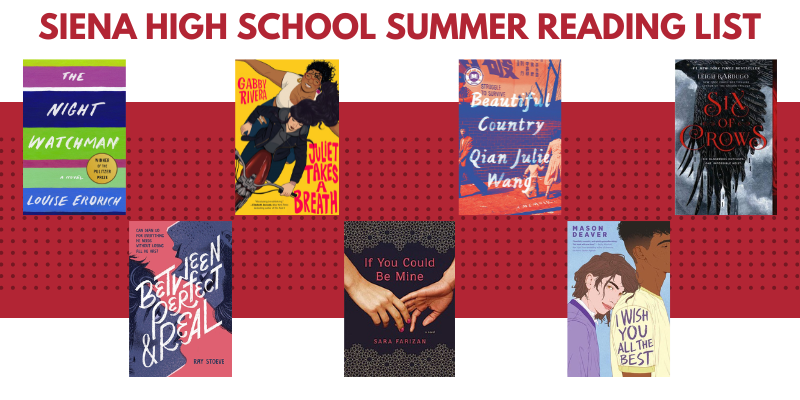
Resources for Summer Reading
“Children often react very differently when a parent or teacher tells them to do something compared to when they make a decision on their own,” this Dyslexia Resource post from 2020 observes. “When age-appropriate, encourage growing readers to develop their independence by allowing them to create their own summer reading schedule. While beginner readers should read around 20 minutes each day, leave the rest up to your student.”
Choosing their own daily reading time can give students a sense of control over the process, while the routine of summer reading can prepare them for the more structured days of the school year.
Here are some additional resources to help students with summer reading:
- Education consultant Ann Dolin recently wrote about engaging reluctant readers over the summer, including a handful of recommendations for different ages and suggestions for reading as a family.
- Fairfax County Public Library Teen Events and Resources and Montgomery County Public Library For Teens offer recommendations, events, programs, and more. Check public libraries in your area for similar summer reading services for young people.
- The National Education Association offers ample resources, activity ideas, and links for students to Get Serious About Summer Reading.
- The New York Public Library’s Staff Picks for Teen Readers goes back to Spring 2019 and lists English- and Spanish-language books.
Siena’s blog has more helpful resources for summer, including how students can improve their technology skills over the summer and how summer academics and camps can be beneficial.
2 Important Tech Skills Students Can Improve Over the Summer
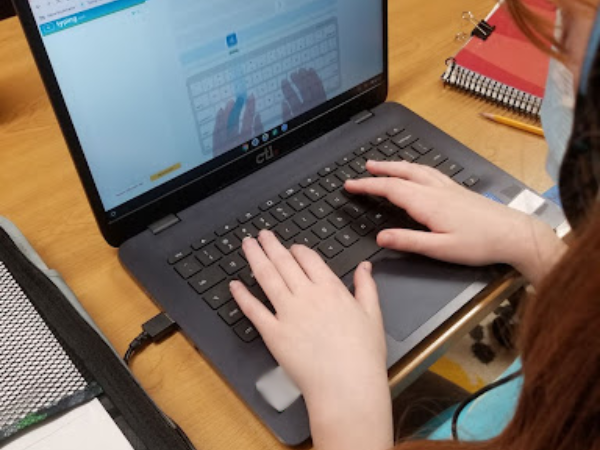
As students are reviewing their summer packets or doing other academic work, the summer is also a great time to reinforce tech skills. This needn’t be too complex or time-consuming: brushing up on students' tech skills can be an easy and fun part of their weekly summer routines.
Technology at Siena is integrated into the curriculum across all divisions and subjects. Students routinely use laptops, assistive technology, and a host of multimedia apps in classes to enhance their learning and equip themselves with 21st-century skills.
Likewise, summer tech work can be integrated into students’ other academic and social activities. Here are two key tech skills that students can easily learn—or improve—this summer while they’re getting some well-earned downtime after a long school year:
Touch Typing Skills
Touch typing is an important way for students to get their ideas onto paper (or a screen). As opposed to the hunt-and-peck approach of using their index fingers, touch typing can teach students to type via muscle memory so they can focus less on the how of expressing their ideas—and more on the ideas behind their writing.
For students with dyslexia and other language-based learning differences, touch typing is a multisensory approach that complements the assistive technology they might already be familiar with—such as Speech to Text—and helps develop a skill they can use throughout their time in and out of school.
Parents looking for ways their children can improve their typing skills this summer can look into Typing.com, which we use at Siena during the school year. There are also free apps that don't require an account to use, like TypingClub, as well as apps like Nitro Type that let students hone their skills by competing against other users through interactive, visual, and gamified learning.
As this Read and Spell blog post shares, “For dyslexic students, learning touch typing emphasizes spelling and phonics. Repeatedly encountering high frequency words also helps with training learners to recognize words by sight, which saves them from the decoding process that causes trouble in reading.”
Regardless of which typing app they use, students can hone their skills by practicing regularly each week of the summer.
Designing Basic Games
K-12 educators are increasingly using games and other interactive content in their classrooms, such as Kahoot! quizzes, WordFlight, and Prodigy. This 2021 article from Edutopia emphasizes games’ educational benefits, such as to “increase student participation, foster social and emotional learning, and motivate students to take risks.”
“It’s important to recognize the educational value of interactive games such as Minecraft,” adds Siena Director of Technology Simon Kanter, “insofar as they can develop students’ reasoning, problem solving skills, and social skills.”
Students who enjoy learning through games during the school year might enjoy spending some time over the summer creating their own through a platform such as Scratch. Originally developed at MIT, Scratch is a free service that lets students recreate classic games on their own while increasing their digital fluency and computational thinking. Siena students have used Scratch during the annual Hour of Code and during weekly Coding Club.
As Scratch’s website notes, “The ability to code computer programs is an important part of literacy in today’s society. When people learn to code in Scratch, they learn important strategies for solving problems, designing projects, and communicating ideas.” (See here for information and FAQs for parents about Scratch.)
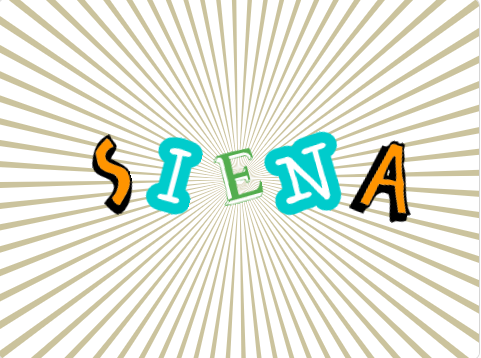
Coupled with regular work on touch typing, learning basic coding and game design through Scratch over the summer can help students sharpen their tech skills to prepare them for next school year.
Resources for Summer Technology
See Siena’s blog for more posts about having a rejuvenating and productive summer, including ones on the benefits of summer tutoring and on summer camps and academic programs.
For additional ideas, you could also look at this guide (primarily for older students) from the University of Toronto St. George, as well as these STEM Resources (for middle- and high-school students) from Texas Instruments. And, have a look at this iD Tech blog post on helping kids develop their tech learning and related skills.
Spotlight on Ann Hu

“The brains of some people are just wired differently. They just need a different system of teaching”—so says a character in Ann Hu’s independent film Confetti (2020), which tells the story of a mother and her daughter traveling from China to New York in search of a school that meets her learning needs.

To commemorate Asian American and Pacific Islander Heritage Month, Siena is spotlighting independent film Director Ann Hu. Her most recent film is the partly autobiographical Confetti, which combines issues surrounding dyslexia and immigration with the diverse identities and experiences related to Asian American and Pacific Islander Heritage Month.
Confetti continues the cultural contributions Hu has made through her other films, Shadow Magic (2000) and Beauty Remains (2005). Her work has gotten awards and nominations at film festivals in China, Taiwan, and Japan.
Here’s a short synopsis of Hu’s three films:
- Confetti has a contemporary setting and tells the story of a mother taking her dyslexic daughter from a small town in China to New York in search of a school that meets her learning needs. Based partly on Hu’s own experiences with her daughter Michelle, Confetti shows Meimei in school doing multisensory learning and other methods used in LD classrooms, as well as uses visuals to represent how Meimei sees words and letters.
- Shadow Magic is set in Beijing, China, in 1902 and tells the story of a Chinese photographer and British innovator trying to introduce the modern technology of film into a traditional Chinese society.
- Beauty Remains is set in Qingdao, China, in 1948 and follows the lives of two sisters as they deal with their late father’s will and legacy, as well as a common love interest that complicates their relationship.

As a 2021 article on the underdiagnosis of learning differences in Asian American community quotes Hu, “Seeing how Michelle struggled in the classroom and struggled to finish her homework after school between 3:00pm and 11:00pm every day was truly a heartbreaking experience for me. Often Michelle would pretend that she understood the question just to help me feel less stressed.”
Learn More About Ann Hu
- See Confetti’s official website and rundown of its cast and crew, as well as its official YouTube channel for related content and interviews.
- Read this profile in Deadline (from 2017) to learn more about Hu’s background, reception of her earlier films, and cultural and creative differences between China and the U.S.
- Listen to Hu on The Filmmakers Podcast discussing Confetti and her overall approach to independent filmmaking.
- Read Hu’s Interview with Medium, “5 Things Parents Can Do To Help Their Children Thrive and Excel In School.”
- See this review of Confetti and interview with Hu in Forbes.
Resources for AAPI Month
The theme for AAPI Heritage Month 2022 is “Advancing Leaders Through Collaboration.” Learn more about AAPI Heritage Month and why it’s in May here.
Hu gave an interview with Women in Hollywood in August 2021 about Confetti’s autobiographical roots, noting “In trying to figure out what to do, I ended up walking a long and hard journey to get to where I am today. In the process, my viewpoint changed, and I became a different person.”

Learn about Siena’s commitments and ongoing initiatives for Diversity, Equity, Inclusion, and Belonging. And, see Siena’s blog for related material, including a spotlight on poet Amanda Gorman from Black History Month and Olympian and activist Meryl Davis from Women’s History Month.
Spotlight on Girls in Science at Siena
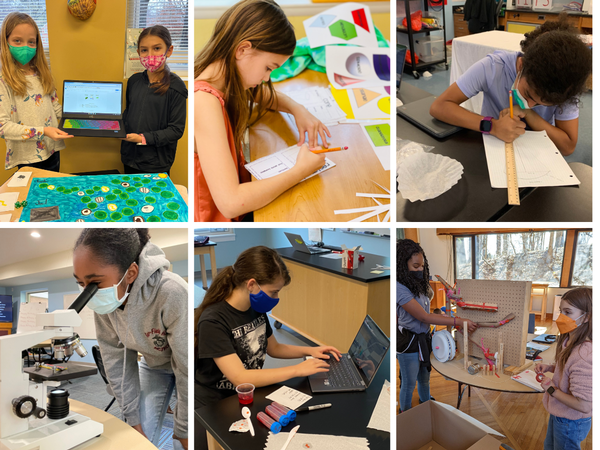
“I used to hate the thought of science. At Siena it’s a lot more fun, and I’ve learned a lot about how to become a scientist.” —Siena Middle School Student
It’s no secret that there’s a STEM Gap for girls and women ranging from K-12 and postsecondary education to the workforce. This overview from the American Association of University Women cites a few factors contributing to the gap—such as gender stereotypes, a lack of female role models for young girls in STEM, and struggles with math and science confidence.
It’s especially urgent, then, for K-12 teachers to ensure that all of their students feel supported in STEM classes. As Siena’s Middle and High School Science Teacher Kanika Staten stresses, “It’s important for teachers to cultivate an interest for girls in the sciences early—ideally in elementary school—and encourage them when they have an aptitude for the sciences.”
To further commemorate Women’s History Month 2022, Siena is highlighting some of our female student and teacher voices from science classes. Science is an integral part of Siena’s curriculum, first introducing students to foundational concepts in elementary school and eventually refining their focus, skills, and advanced interests in high school.
Siena’s Science Role Models
Like her STEM colleagues at Siena, Staten sees the importance of developing girls’ STEM successes, mindsets, and confidence: “Teachers have to show students meaningful examples of people doing work in the sciences who look like them and have had similar struggles.”
A Siena middle school student admires Judy Resnik (space shuttles Discovery and Challenger) and Haley Arceneaux (Inspiration4) as her predominant role models for women in the sciences. Resnik, who earned a PhD in Engineering from the University of Maryland, was the first American Jewish woman in space. A physician assistant at St. Jude Children's Research Hospital and childhood cancer survivor, Arcenaux was a medical officer on the recent all-civilian mission in 2021.
A Siena high school student feels inspired by Albert Einstein since he was also dyslexic. Another high schooler feels inspired not by a specific person but by a type of person: “I admire anyone who’s willing to speak up—especially if it’s against a corporation hurting the environment. I also admire people who are willing to have conversations and to change their views of things if they discover new facts.”
Assistant Head of School (and former Math and Science Department Chair) Jennifer Chambers cites women environmental scientists, such as Sylvia Earle and Rachel Carson, as her scientific role models as both a teacher and environmentalist.
Finding inspirational voices helps girls and young women to be passionate about the sciences, as well as to think early about STEM career paths. Chambers adds: “Siena helps develop girls’ scientific mindsets (such as taking risks, being curious, and learning from failures) from elementary grades all the way through high school.”
At all grade levels, writing is an important component of the sciences at Siena; students write reflections, science journal entries, lab reports, and more as they progress through the curriculum. Since starting at Siena in 8th grade, a high school student feels she’s “grown more willing to accept that my ideas can always improve and focus.” She’s also learned how important it is “to put scientific ideas into clear, basic words to make science accessible for a wide range of people so they become educated.”
Siena Girls’ Voices in the Sciences
Hear from Siena students about what motivates them in science classes:
“I like doing experiments. When we did the Magic Milk experiment, I liked how when the two mixtures were combined the reaction was different colors.” —Elementary Student
“I like science because I like learning about nature.” —Elementary Student
“Since starting at Siena in 6th grade, I have a better grasp and more confidence in writing about science and understanding how the world around me works.” —Middle School Student
“I’ve always liked science—it’s very engaging and hands-on. The fun thing about science is failing—and then learning and improving from the failure.” —Middle School Student
“I like how our teachers let us explore and give us cool topics to investigate.” —Siena Middle School Student
“It’s been interesting learning about the different types of sciences since elementary school at Siena. I’ve always enjoyed it.” —High School Student
“Debating about science topics is very fun. Looking at both sides of an argument and having to research a position is engaging for me.” —High School Student
A high school student appreciates learning about scientific concepts that extend beyond the classroom and overlap with social and political issues. She points to environmental science and sustainability, which “affects me most as a human.” Regardless of where her career path takes her, she feels ready for it to involve the sciences, as well as for “being that advocate who people go to for change.”
Resources for Girls and Women in STEM
See these science-themed podcasts:
- 60-Second Science
- Are We There Yet?
- How I Built This
- Invisibilia
- Radiolab
- Science Friday podcasts
- Science Rules!
- Wow in the World
See also these recent books from and about women in the sciences:
- Maggie Aderin-Pocock, Dr. Maggie’s Grand Tour of the Solar System and Book of the Moon: A Guide to Our Closest Neighbor
- Eileen M. Collins, Through the Glass Ceiling to the Stars
- Hope Jahren, Lab Girl
- Sarah Stewart Johnson, The Sirens of Mars: Searching for Life on Another World
- Katie Mack, The End of Everything (Astrophysically Speaking)
- Liza Mundy, Code Girls
- Lauren Mwale, The Shuri Effect: Bridging the Gap for Young Black Women in STEM
- Annie Murphy Paul, The Extended Mind: The Power of Thinking Outside the Brain
Learn more about Siena’s STEM curriculum:
- Elementary Science and Math
- Middle School Science and Math
- High School Science, Math, Robotics, and Engineering
Lastly, see Siena’s blog for related material on successful women:
- Spotlights on astrophysicist Maggie Aderin-Pocock, poet and activist Amanda Gorman, and Olympian and activist Meryl Davis.
- Posts from Assistant Head of School Jennifer Chambers on the virtual science classroom and creating an authentic learning experience.
Spotlight on Meryl Davis
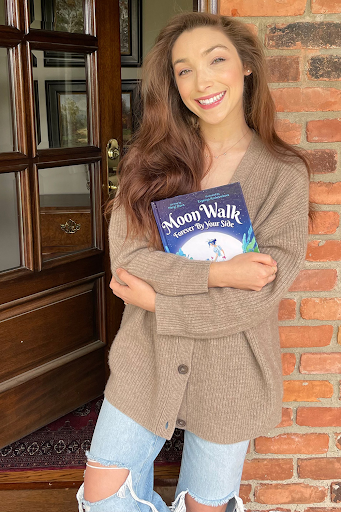
“I learned how I learned and how my brain worked. It helped me adjust and compensate for my differences…. It opened me up to problem solving, seeing things differently, and how I can help myself overcome things.” —Olympian Meryl Davis on her dyslexia
Even before she won Olympic gold in 2014, Meryl Davis knew the importance of advocating for herself and others. A competitive skater and ice dancer since age 5, Davis has used both her public presence and her community dedication to help young people achieve their goals.
As part of Women's History Month this year, Siena is honoring Davis for her successes in inspiring women and girls both on and off the ice, in part through her perseverance in adjusting to her own learning differences.
Davis’s dyslexia diagnosis came in 3rd grade. At first, she felt less-than and inadequate, and she eventually figured out how to learn in her own way, finishing high school as a member of the National Honor Society. She attended the University of Michigan, majoring in Cultural Anthropology (Class of 2020) while also training full-time on the ice rink.
Davis also lacks depth perception and has trouble seeing out of her right eye, which was another adjustment she made successfully. As she did in the classroom, Davis developed accommodations for her vision issues on the ice, such as by memorizing markings on the ice to situate herself when skating and trusting her partner to stay safe and avoid collisions with other skaters.

A profile from the Yale Center for Dyslexia and Creativity quotes Davis on her professional path: “With skating I could feel it more than see it.” Moreover, “I fell in love with it because it made sense to me, partly because I see things differently. I learned to enjoy it, worry free, in terms of moving with the music. It’s been a really beautiful part of my life.”
At the 2014 Winter Olympics in Sochi, Russia, Davis and her partner Charlie White became the first American team to win the gold medal in ice dancing. Davis and White had won medals in other competitions since 2006, and their Olympic victory capped their great run as skating partners. In 2020, they were named to the U.S. Figure Skating Hall of Fame. Learn more here about Davis’s accomplishments on the ice.
.png)
Since winning Olympic gold, Davis has been dedicated to supporting young people and advocating for access to figure skating, education, and social–emotional wellness—particularly in underserved communities. Among her post-Olympics accomplishments are:
- In 2015, she wrote for Team USA about the importance of sports and community advocacy. “[S]port is about the kind of success that brings you one step closer to being the best version of yourself,” she wrote in helping define “success” more broadly than international competitions, medals, or other accolades.
- She’s worked with Classroom Champions, an organization that partners with elite athletes to help children’s academic and social–emotional wellness.
- A Michigan native, Davis is a founding co-chair of the organization Figure Skating in Detroit as well as an ambassador for the Women's Sport Foundation. Figure Skating in Detroit combines figure skating, tutoring, STEM coursework, and leadership training to give Detroit-area girls access to a supportive, mentoring community. “Figure skating is an expensive sport,” notes Davis, who’s part of the program’s leadership committee and a member of its champions committee. “It hasn't been a particularly diverse sport historically, so we focus on giving access to girls of color in the city of Detroit.” (Learn more here about Figure Skating in Detroit.)
- In April 2021, Davis added children’s book author to her professional accomplishments, publishing the picture book Moon Walk: Forever by Your Side, about a parent and a child bonding.
“Patience with oneself is the key to learning how to be your best self in any case. Just because things come differently to you doesn’t make you any less. You have to rely on the people who are there for you.” —Olympian Meryl Davis on using available supports
See Siena’s blog for related material on successful women, including a spotlight on astrophysicist Maggie Aderin-Pocock from Women’s History Month 2021 and one on poet and activist Amanda Gorman from Black History Month 2022.
Spotlight on Amanda Gorman

Photo by Patrick Semansky, Getty Images
We seek harm to none and harmony for all.
Let the globe, if nothing else, say this is true,
that even as we grieved, we grew,
that even as we hurt, we hoped,
that even as we tired, we tried,
that we'll forever be tied together, victorious.—"The Hill We Climb" (2021)
So writes poet and activist Amanda Gorman in her Inaugural Poem, “The Hill We Climb.” When she recited this powerful poem at President Biden’s inauguration on January 20, 2021, Gorman became the youngest poet (age 22) to read at a Presidential Inauguration in American history.
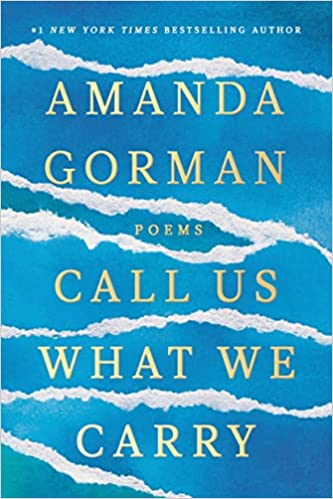
As part of Black History Month this year, Siena is honoring writer, activist, speaker, and the nation's first-ever youth poet laureate, Amanda Gorman. Now at age 23, Gorman has had a prolific year since the Inauguration, publishing an illustrated book for children (Change Sings) in September 2021 and a collection of poems (Call Us What We Carry) in December 2021, in addition to other work.
“Now more than ever, the United States needs an inaugural poem,” Gorman said after Inauguration Day. “Poetry is typically the touchstone that we go back to when we have to remind ourselves of the history that we stand on, and the future that we stand for.”
Since being diagnosed with speech and auditory learning differences when she was young, Gorman has used poetry (particularly reciting it) as means of both self-expression and adapting to her speech difference. She graduated from Harvard with a B.A. in Sociology and has made many media appearances as a writer and speaker, as well as winning a Genius Award from OZY Media in 2017 when she was still in college and being honored as the first-ever youth poet laureate from Urban Word.
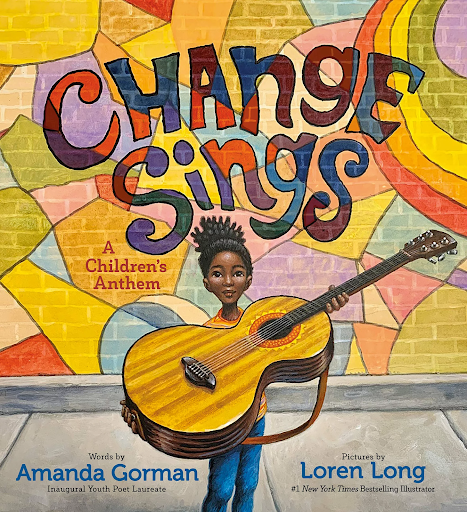
Gorman has always written poetry with a strong sense of social justice and an equally strong awareness of diversity and identity. Her work resonates with Siena students and faculty: in 2021, 8th grade English students discussed her work in class after Inauguration Day, and an elementary student is currently researching Gorman for a project and presentation for Black History Month.
Read more on her website, and watch Gorman read “The Hill We Climb” on Inauguration Day here.
Learn about Siena’s commitments and ongoing initiatives for Diversity, Equity, Inclusion, and Belonging. And, see Siena’s blog for related material, including a spotlight on astrophysicist Maggie Aderin-Pocock and an overview of Siena’s Black History Month activities from last year.
We the people are brave enough to love this country’s creed
We the people love this country enough to question its misdeeds
We the people question enough to build upon this foundation
We the people erect an improved hilltop of a nation
Indivisible by where we come from, or who we are born
We the people are those who let freedom ring
So that no matter how we love, talk, pray, or mourn
This America too is ours to build and ours to sing.
—“We the People” (2017)
Summer Programs and Camps: 4 Keys to Success

Both Camp Wildcat and my summer class were amazing. I don’t usually look forward to summer camps, but Camp Wildcat made me look forward to waking up and going to camp. —Siena Elementary Student
When the days are cold and the school year is in full swing, summer might feel like a long time away. But a successful summer plan starts in the winter. Parents with elementary and middle school–aged students might be wondering how summer school or camp can be beneficial.
Provided that there is the right balance of structure, recreation, and flexibility, summer academic programs and camps help students in terms of their academic performance and social–emotional wellness.
Benefits of Summer Academic Programs and Camps
Here are four keys for students to have a successful summer experience in summer school and/or a school-sponsored camp:
1. Summer academic programs give students a test drive of the school.
Learning about a new school over the summer can be a great trial run for students before the year starts. Maybe the new building is bigger or harder to navigate than a student’s old school, or classes use technology more regularly than students are used to. Or, a student just needs some extra time to get oriented to a new learning environment and school community.
Whether it’s one or all of these, think of summer school as a dress rehearsal for incoming students to start learning the tools, technology, and other systems that could be part of the norm at the new school. This is especially important for students with language-based learning differences, because they might want to start developing the accommodations and self-advocacy practices that a school like Siena has integrated into their curriculum, including our multisensory strategies.
As a Siena summer school teacher notes, “It’s great for new students to be around other new students before they’re around returning students once the school year starts. This makes the transition easier for new students because they’ve experienced a new school with their peers first.” Meeting some students and teachers over the summer gives incoming students a degree of familiarity with the community that will be such an important part of their daily lives once the year starts.
2. Summer academic programs help assess students' learning needs.
When students take summer classes, their teachers can start to identify their individual learning styles and executive functioning skills; this helps teachers develop learning profiles for their students to prepare for the coming year.
“Our summer classrooms provide the same individualized and research-based multisensory learning environments as during the regular school year,” notes Carolyn Bottelier, Science Department Chair and Director of Summer Programs. “Siena students can get help from teachers in a pressure-free environment to complete assigned summer work.”
Research shows that a summer academic program helps with retention, especially for students with dyslexia or other language-based learning differences. For Dr. Sally Shaywitz of the Yale Center for Dyslexia & Creativity, “If a child has been practicing a given set of words and word families during the school year, representatives of the word are beginning to find a permanent home within the [brain’s] word form area.” (See the article that quotes Shaywitz here.)
Students with dyslexia typically need more time and repetition to effectively store information within the automatic reading system; summer programs provide that needed time and repetition in a flexible, personalized environment.
3. Summer camps and academic programs support social and emotional wellness.
I was nervous at first, but the teachers and students were really nice. They made me feel like I was part of the school community. —Siena Elementary Student
Attending a summer program or summer camp as an incoming student could be especially good for anxious learners to get a microexperience of the school, their peers, and teachers. Programs and camps allow students to socialize and form community bonds to lead them into the new school year, in addition to being gradually introduced to the school’s teaching methods and overall learning environment.
As the Yale Center for Dyslexia and Creativity article notes about camps in particular, “Summer camps can also be important for dyslexic students who have deep interests that get sidelined or shortchanged because of academic demands during the school year,” which succeeds in “connecting [them] with other students who share [their] learning profile.”
4. Summer camps and academic programs prepare students for the school year.
“The key to a successful summer for students with dyslexia,” reiterates Director of Summer Programs Carolyn Bottelier, “is balance. Summer at Siena provides that balance for students.” Providing opportunities for both exploration of strengths and interests, as well as providing academic support, helps create a well-rounded summer.
An added benefit of attending summer programs or camps is getting students more comfortable navigating the school, learning the teachers’ expectations, or allowing for exposure to the school to see if it is a good fit for the student and if they will thrive in that setting.
Regardless of whether a student will attend the school hosting the summer program or return to another school, summer academic programs give them community connections, content knowledge, and awareness of their study skills and executive functioning needs. A summer program or camp could also highlight areas of improvement academically or social–emotionally for students as the new year approaches.
Summer downtime after a long school year is important, but so too is (some) summer work time to keep students’ skills sharp and—particularly for students with dyslexia—word retention active.
Need more resources for parents and community? See The Siena School blog for ideas on ensuring a successful school visit or how summer academics or tutoring can each be beneficial.
Resources for Students with Learning Differences
- Learn more here about Siena’s summer programs at its Silver Spring and Northern Virginia campuses.
- Siena Tutors provides individual instruction with experienced teachers to students throughout the United States in grades 3-12. Reading Rockets also has good information for finding a tutor for children with dyslexia.
- Education Consultant Ann Dolin’s website and YouTube Channel offer more resources and tips for avoiding the summer slide.
- LD Online and the Atlantic Seaboard Dyslexia Education Center (ASDEC) have a wealth of resources for families navigating academics and tutoring needs.
Preparing For Your School Visit

“At first I was sad about leaving my old school, but I felt happy and excited later when I met new friends. It was also good to meet my new teachers and get to know them better.”
—Siena Elementary Student
Visiting a potential new school is an important step in deciding on the right school. It’s the first in-person, real-time encounter with a school’s students, faculty, staff, and leadership.
Preparing to see a new school is important and entails addressing material and emotional needs. Here are 3 keys for parents to assist in a successful school visit for their child:
1. Be prepared and ask questions.
A successful school visit requires pre-planning. Think about all the things your students need during a regular school day, such as:
- A bag or backpack
- Classroom supplies
- Lunch and snack foods
- A refillable water bottle
- Extra clothes for outdoor recess and/or P.E.
Depending on the school being visited, students might need some or all of the above materials. Having the necessary materials can help a visitor both be prepared for the day and—particularly for an anxious child—feel a sense of comfort and familiarity in a new environment. Parents could help build more excitement for the visit by having their child pick a favorite outfit, folder, pen/pencil, or snack to get ready for the day.
When preparing for your child’s school visit, parents could ask their admissions point of contact questions like these:
- What do I need to know about dropoff and pickup procedures? Can my child carpool with a current student?
- What emergency contact information should I provide?
- How will I find out about weather-related decisions that could delay the start of the school day?
- What do I need to do if my child has a food or other allergy? What if my child takes medication during the school day?
- What (if any) technology does my child need to bring—or not bring?
- Can my child bring a fidget or similar comfort object?
- Is there a dress code?
- What protocols are in place for COVID screening and in-school safety?
Knowing the answers to these questions gets the visit off to a strong start and helps show parents how well the school communicates with families.
“When my mom dropped me off, I was nervous. But then I made friends at lunch and felt more comfortable.” —Siena Elementary Student
2. Be aware of social and emotional needs.
After knowing what to bring and what to do for the school visit, parents should remember how important social and emotional wellness is for their child. Parental support is key to the school visit. Start by recognizing that it’s very common and understandable to be nervous about visiting a new school—similar to how adults could be nervous about the unknowns of starting a new job.
If possible, parents should request a schedule for how their child’s day will be structured, and then review it with their child in advance of the visit. This can provide some predictability for classes and breaks, as well as generate excitement for any activities or clubs in the visitor’s day. Knowing something as simple as what time they’ll eat lunch or where they’ll put their things can help a child feel a sense of control.
It might help assuage some anxieties by working with the school’s admissions office to arrange a short pre-visit to see the school building at off-peak times. Even a short walk around the school building and grounds with a staff member beforehand can help ease a student into their visit.
3. Be curious and open-minded.
Just like a new neighborhood or new social activity, a new school has a lot to offer for students. Being open to diverse experiences and opportunities—such as different teaching styles or extracurricular offerings—can help a child see if the school is a good fit for them.
An openness to possibility and newness is important for student visitors at all grade levels (but especially high schoolers). Being flexible and welcoming of change helps visitors learn about a school. The older a student is, the more likely they are to have preconceived notions or rigid expectations about what they want from a school. Parents might need to remind students that each school has its own way of doing things, so an open-minded approach can help students genuinely learn what the school can offer them.
Here are some questions students can ask when visiting a potential new school:
- What kinds of homework and class projects will I do?
- Can I meet with my teachers outside class to discuss my work?
- What are the major all-school events that happen?
- What extracurricular clubs, activities, groups and/or sports teams can I join?
“I was happy to be visiting a new school because there were a lot of kids like me. I didn’t feel left out.” —Siena Elementary Student
When parents prepare for a school visit by asking relevant questions and knowing what to bring, they can ensure that their child gets the most out of the experience. Having the materials, support, and mindset they need will maximize the opportunity for students to both learn about the school and help the school learn about them.
See The Siena School blog for more relevant information about student life, such as about how students learn to self-advocate and how parents and students can connect with their new school communities.
Connecting With Your New School Community

Note: This post contains updated information from earlier blog posts (2018, 2020).
Whether you’re brand-new to a school or a returning family looking to welcome new students and their families, late summer is the perfect time to start building connections for the upcoming school year.
Since last school year began virtually for many districts, the beginning of the 2021-2022 school year might also feel new, even for returning students. It’s especially important, then, to get students in touch with each other soon so they can start building the relationships that they’ll bring into the new school year.
Making Connections: Before School Starts
- Review the Parents page on the school website for resources, supply lists, the school year calendar, and more.
- Learn about your school’s Parents Association. Remember that student grade representatives are great for welcoming new families. Once they have contact information for new families, grade representatives can reach out and arrange various activities. This is a wonderful way to meet families who have been at the school for years, as well as learn about grade-specific events.
- Check to see if your school has a private social media group for families to share information and resources. This could be a great way to connect with families across grade levels. You might need a moderator to give you access to the group, but this is usually a simple process.
- See if parents already have access to the school directory to contact other families in your child’s grade and arrange a time and place to meet (such as a local park or other outdoor space). Parents could also trade ideas for small-group social activities like hiking or biking in locales with adjacent trails (such as Brookside Gardens, Lake Needwood trails, Lake Frank, or Meadowbrook Park in Montgomery County, MD). Parents could end such activities with a potluck picnic to give everyone a chance to learn more about each other.
- Check your school’s website or blog for any resources geared toward parents and the community.
Making Connections: The New School Year
- Attend school-based meetings: often, schools will kick off the transition to the new year by hosting a grade-level event to allow the families to become involved.
- Attend Back to School Night, which is typically the first major school event of the year. While you’re waiting to enter the classroom and meet your child’s teachers, why not introduce yourself to a nearby parent? There is a chance that their child is a classmate and might be a great resource for homework help.
- Go to a Family Picnic or similar gathering if your school offers one. This is a wonderful way to meet families who have been at the school for years. If you are a returning family, you remember how important this event was to help with the transition to a new environment. Make sure you introduce yourself to the new families and help them get engaged with the school’s community.
- Consider attending parent association meetings as a way to meet new school members. There is always time to network before and after the meeting. You will also gain valuable insight from the shared topic of the evening.
- Plan a regular biweekly or monthly meetup of parents after drop off at a local park or café.
- Remember that you can volunteer to be a Grade Representative. This will definitely get you connected with every parent in your child’s grade. Grade Reps are a great resource to help you learn about activities related just to your grade.
Helping new families get acclimated to the school community is mutually beneficial—particularly as students continue to adjust to changing guidelines for social interactions.
Whether you’re just joining The Siena School or returning for another year, don’t hesitate to find a way to get involved and stay connected with the community.
Siena's Head of School Challenge, 2020-2021
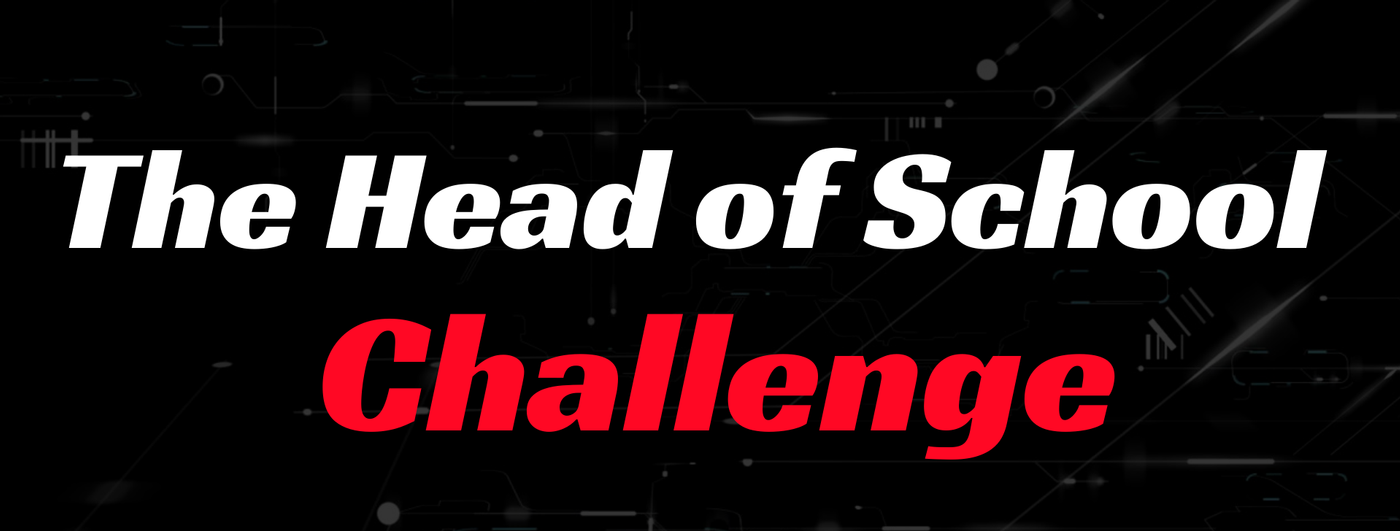
I liked the Head of School Challenge because it gave me some goals to set during distance learning. —Middle School Student
This year, Siena introduced a new initiative to keep students active and gamify the school year: the Head of School Challenge.

In celebration of Siena’s 15th anniversary, we designed 15 challenges around the arts, athletics, reading, social and emotional health, and more to energize the school community. Many of the challenges incorporated the 15 theme to mark the school’s anniversary year.
We introduced the Head of School Challenge at an all-school virtual assembly in the fall (complete with a video overview). Students then started completing the tasks, all of which could be done virtually. Some especially popular challenges were:
- Find a 15: Find the number 15 somewhere (and take a selfie with it)
- 15 Acts of Kindness: Perform 15 acts of kindness for friends or family and then reflect on your acts
- Coding: Show off your creativity and animate SIENA by code
- Design and Creativity: Make something to show what Siena means to you (see video example below)
- Read 1,500 Pages: Read for at least 20 minutes a day and see how it adds up
- Thank 15 Teachers: Show gratitude for teachers who’ve been especially helpful and supportive this year
- Sports and Exercise: Play your favorite sport or exercise 3 times per week (for at least 15 minutes) for a month
- Learn Something New: Choose a sport, hobby, activity, or skill you’ve always wanted to try
I really liked doing the Head of School Challenge because I could get House points. I also had a lot of fun doing the activities, and it gave me something to do outside. —Middle School Student
For every challenge completed, students earned points for their Houses, with bonus House points, gift cards and school merchandise waiting for the top finishers.
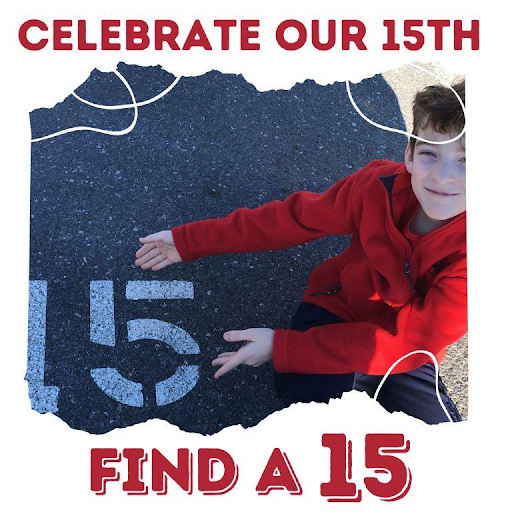
All of Siena’s students and faculty are sorted into four Houses, which are modeled after the seventeen Contrade of Siena, Italy. Siena’s Houses (Drago, Leocorno, Pantera, and Aquila) are composed of a mixture of 4th-12th grade students who compete over the year for house points in athletic and academic challenges. This year, the Head of School Challenge upped the ante, as it were, by giving students the chance to help both themselves and their Houses. The winning student will earn almost 400 points for their House.
Since students were still learning from home at the beginning of the year, the Head of School Challenge helped them feel connected to the school community and varied their routines. In a time of limited social activity, the Head of School Challenge enabled students to boost their physical and mental health, strengthen community connections, and have a fun, school-wide activity to break up the routine of distance learning.
I really love doing the House challenges. It helps me learn new things. My favorite House challenge was finding a 15 because I made Rice Krispies Treats and used the sprinkles to make a 15! —Middle School Student
Students have experienced a lot of change—which was outside their control—in the past year. The Head of School Challenge gave some control back to our students through positive, community-building activities that supported themselves and their Houses as a constant in a variable year.
Enjoy this middle schooler's Design and Creativity challenge about science:
Teacher Appreciation Week: How Students, Parents, and Staff Can Help
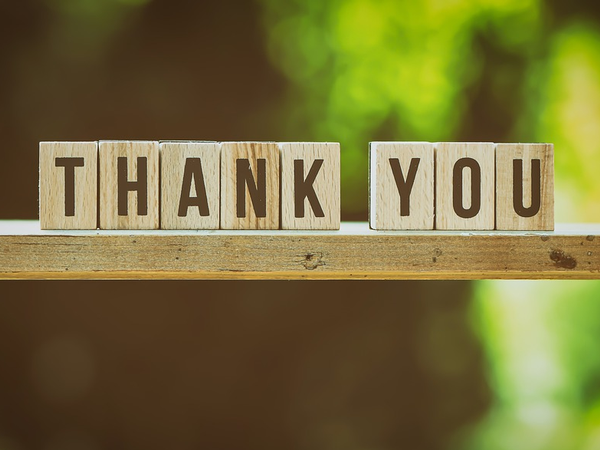
Teacher Appreciation Week 2021 runs from Monday, May 3, through Friday, May 7. Regardless of the grade level or type of school, teachers across the country have done a lot of commendable work in the past year.
Showing teachers how much we value their work is important. They don’t necessarily expect gifts, but sometimes even the smallest acknowledgement makes a huge difference in a teacher’s day.
Traditionally, celebration is a week-long event at Siena. Faculty and staff have received flowers, food, and thank-you messages as a show of gratitude. With the shift to virtual or hybrid learning last year, schools and families had to introduce new ways of showing their gratitude virtually: video messages, gift cards, and e-flower delivery among them.
PTO Today has some ideas (arranged by budget) for celebrating teachers from a distance, such as student photo collages. Many businesses are offering educator deals and discounts, such as Barnes & Noble, Headspace, and Bonobos. See Edmentum for more ideas.
Here are some ideas for how the school community can show its support for teachers this year, whether virtual or in-person:
How Students Can Support Teachers
- Write a personalized note to a favorite teacher sharing a fun memory and saying why they’re thankful for them. It might reach them at a time when they could use a simple show of kindness.
- Chalk messages in the parking lot or walkways around the school building (with approval and supervision).
- Put your newly learned tech skills to practice and create a personalized video, Flipgrid, or WeVideo.
- Make a sign for your teacher’s classroom door that says Thank You or We Care About You.
- Collaborate with your class to say thank you in a creative way that teachers will appreciate (such as a group dance or images of their favorite sports team, celebrity, and more).
How Parents Can Support Teachers
- Email a virtual card and/or short video message from their child to the teacher.
- Write a personalized message about changes they’ve seen in their child thanks to the teacher’s work and dedication.
- Arrange for e-bouquets of flowers to arrive in teachers’ inboxes.
- Work with class/grade-level parents to purchase gift cards for food, self-care, and more.
- Have the class sign up to bring in items according to a theme. For example, a summer vacation theme could include sunscreen, a beach towel, sunglasses, a book, and beach snacks to create a gift box.
- Create a fun gift basket of various coffees and/or teas for teachers.
- Ask the teachers if there’s anything parents can do to help between now and the end of the year—it could be as simple as crowdfunding some items for the classroom.
How Staff Can Support Teachers
- Give the gift of time. Could staff offer to cover part of a class, read to students, or do something else to give teachers a break? Or, could school leadership surprise teachers with a day/half-day off (schedule permitting)?
- Record students reciting “What [School] Means to Me” and share the video with teachers and on social media.
- Offer gift baskets with treats, personal care items, and more. Etsy and Pinterest have many good ideas.
- Provide gift cards for food and other items that can be delivered.
- Put up a banner in the hallway and allow students to write thank you reflections.
- Stencil You are Appreciated on classroom windows in liquid chalk or other erasable markers.
- Create Word Clouds for each teacher, highlighting words from the students to describe them.
- Design a t-shirt for them to wear and have a dress-down day (jeans and t-shirt).
- Choose a superhero-themed day, where the teachers dress up as the heroes they are! (Go one step further: have a DC vs Marvel battle during the day and see who has the better team.)
- Give stickers and pins to the teachers to wear during the day.
Heartfelt messages, gifts, games, and other acts of kindness during Teacher Appreciation Week 2021 won’t magically make teaching any less challenging. But they will remind our teachers that they are appreciated every day for continuing to support our students throughout this extraordinary year.
Have another idea for showing your appreciation for teachers this year? Leave a comment below.
See the parents and community section of The Siena School blog for additional resources for families.
Service Learning and Volunteering during the Pandemic

Siena students have always been dedicated to community service and other kinds of volunteering. Given the many pressing needs of frontline workers, small business owners, and more during the COVID-19 pandemic, Siena’s students have been especially active in the past year.

In the words of one high school student who used his spare time to make 3D printed face shields for frontline workers last year, “I wanted to do my part to help medical professionals who are working to save lives.” Many in our community have felt similarly compelled to do what they can to help others.
Siena Student Volunteers and Community Service
Siena students participate in school–based community service programs while earning service-learning credit through independent work and internships. Students continue to be good citizens and stewards of their communities in various ways:
- In November 2020, one middle schooler prepared food bags for Small Things Matter, and two others cleaned up a stretch of Little Falls Parkway.
- Also in November 2020, Siena families generously donated food (228 pounds of it!) to Nourish Now to help members of our greater community who were experiencing food insecurity during the holiday season. Another food drive is planned for the spring.
- In January 2021, Siena’s Help Club helped raise over $1,000 for the Holy Cross Silver Spring Health Clinic.
- A middle schooler continued Siena’s tradition of volunteering for MLK Day by making chew toys for service dogs.

As part of service learning this school year, Siena students have also helped out many organizations in the DC area, including:
- Anacostia Watershed Society
- Bretton Woods Recreation Center
- Empowering the Ages
- Link Generations
- Montgomery County Board of Elections
- Rockville Weed Warrior Project
- St. Martin of Tours Food Pantry
- Temple Sinai
- A Wider Circle
When submitting their service learning hours, students include a written reflection on these questions:
- What need did your service address?
- How did your action benefit individuals in the community?
- What did you learn about yourself as a result of your actions?
Volunteering and Service Opportunities for Students
Anyone wanting to impact Siena’s local community can explore options through Montgomery County’s volunteer center. Siena is also a drop-off location for DC Diaper Bank, which always needs baby supplies for local families.

Students could further expand their volunteering with these virtual opportunities:
The past year has reaffirmed how important community bonds and service are. While handling their academic and extracurricular responsibilities, Siena students have also maintained close connections to their communities through a wide variety of volunteering and community-building experiences.
Spotlight on Dr. Maggie Aderin-Pocock

“I was lucky because I got inspired by science, and I had an aptitude for it,” Dr. Maggie Aderin-Pocock shared in a 2014 interview for The Yale Center for Dyslexia & Creativity. As part of Women's History Month this year, Siena is featuring a woman who is currently making history.

Since being diagnosed with dyslexia at age 8 and attending 13 different schools in England before going to college, Dr. Aderin-Pocock has made many contributions to space science and science education more broadly in the past 25 years.
Dr. Aderin-Pocock, who was born to Nigerian parents in London and lives in England with her family, is currently an honorary research associate of University College London's Department of Physics and Astronomy. She has a Bachelor of Science in Physics and a Doctor of Philosophy in Mechanical Engineering. In 2009, she was awarded the Most Excellent Order of the British Empire (MBE) for her many achievements in science education.
For her entire career, Dr. Aderin-Pocock has worked to engage children and adults around the world about space, the stars, planets, and more. For a glimpse into Dr. Aderin-Pocock’s science-educational work (and her infectious enthusiasm), have a look at these:
- “How come you’re so interested in space?” See her answer (and more) in this interview with British Royal Society from 2014.
- “Science saved me from the doldrums and actually gave me an opportunity.” Listen to her share her science journey with The Female Lead in 2017, including being the only girl in an evening class on making telescopes.
- “From that, we were able to work out what chemical reactions are happening in the heart of a star.” Hear more about the spectrograph she built for the Gemini telescope in Chile to help analyze the light from stars.

Due to her expertise, Dr. Aderin-Pocock has been an integral part of the BBC shows “Do We Really Need the Moon?” and “The Sky At Night.” She’s also written Dr. Maggie's Grand Tour of the Solar System (2019), Book of the Moon: A Guide to Our Closest Neighbor (2018), and The Knowledge: Stargazing (2015), among other publications.
“Imagine a dyslexic from London meeting the Queen of England,” she said after receiving the MBE. “It’s mind-boggling stuff, but that shows how much potential you have.”
For more STEM-related content from Siena’s blog, see these posts from Math & Science Department Chair Jennifer Chambers on the virtual science classroom and creating an authentic learning experience.
Siena Celebrates Black History Month

A key element of The Siena School’s mission is teaching students about the world inside and outside their classrooms. This year for Black History Month, Siena continued the work of integrating social and racial justice issues into students’ learning. This work is year-round, but in honor of Black History Month, the students and faculty worked together to celebrate with a number of activities.
Black History Month Activities at Siena
Students and faculty worked together to mark Black History Month at Siena:
- The Cultural and Activities Committees organized resources and discussion topics and then focused on a different theme each week, such as allyship, addressing past injustices, and influential black athletes, intellectuals, and more.
- The Daily Slide for students featured a successful individual, discussion topic, or resource, such as Wilma Rudolph, Stacey Abrams, or ways to address racism and injustice.


- A school-wide activity encouraged students to build a Black History timeline by moving the historical event to its appropriate year.
- The Student Council Speaker Series arranged for Professor Adrienne Cain from Baylor University’s Institute for Oral History to talk to the students about oral history, black women and intersectionality, and the continued fight for progress and rights.
- This year, Siena implemented an Anti-Racism Curriculum, which meets every two weeks. Using the Teaching Tolerance Standards to guide our classes, the Anti-Racism Curriculum consists of group discussions, community projects, and personal reflections on what it means to be a part of an anti-racist community.
Siena Reading List for Black History Month
Siena faculty and students worked together to create a suggested books reading list (broken down by grade level), including:
High School
- The Autobiography of Malcolm X, Malcolm X and Alex Haley
- The Mis-Education of the Negro, Carter G. Woodson
- Black Boy, Richard Wright
- Homegoing, Yaa Gyasi
- Hidden Figures, Margot Lee Shetterly
- “How It Feels To Be Colored Me,” Zora Neale Hurston (essay)
- Incidents in the Life of a Slave Girl, Harriet Jacobs
- The Color Purple, Alice Walker
- I Know Why the Caged Bird Sings, Maya Angelou
- The Immortal Life of Henrietta Lacks, Rebecca Skloot
- The Underground Railroad, Colson Whitehead
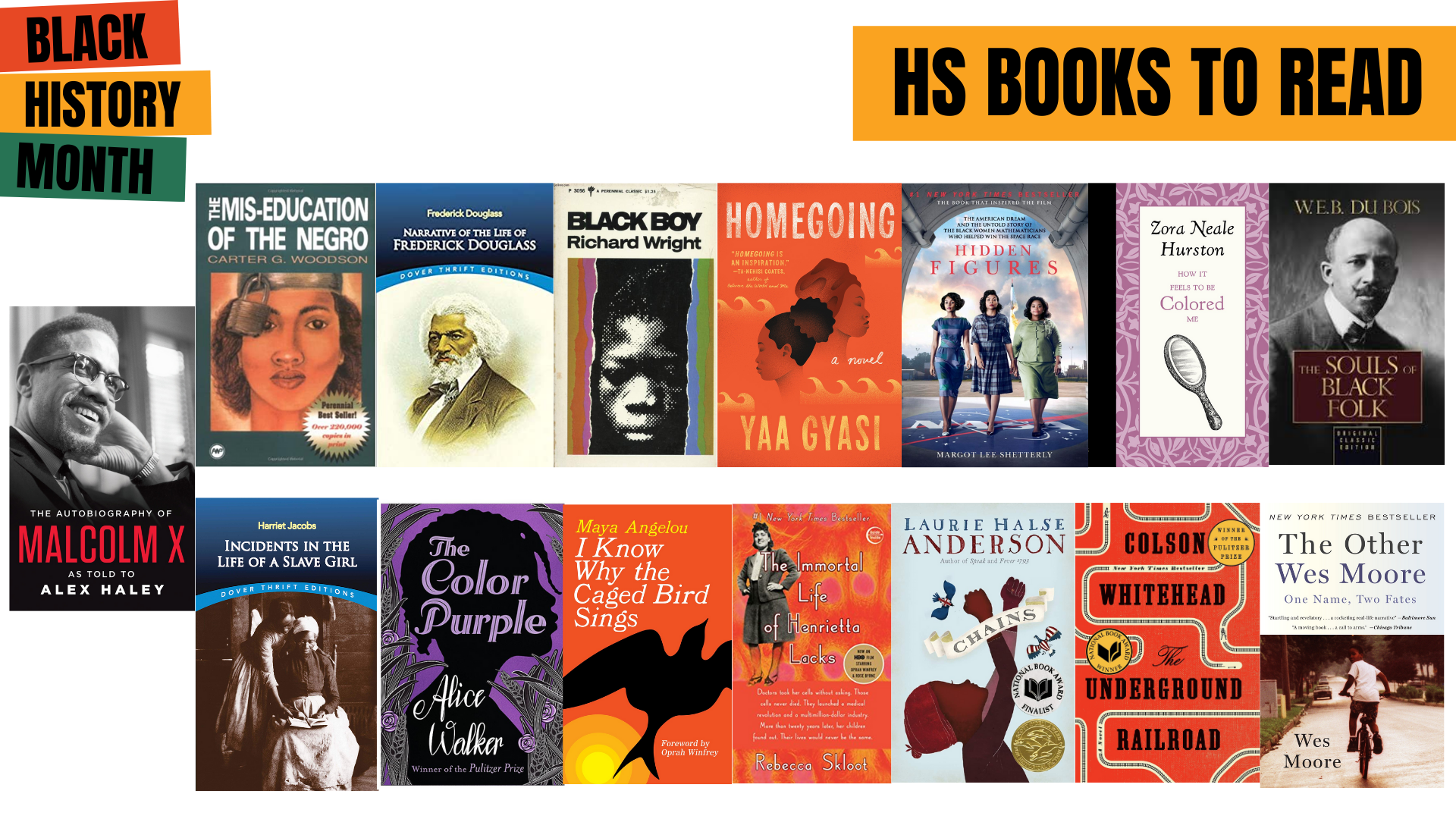
Middle School
- The Hate U Give, Angie Thomas
- March, John Lewis and Nate Powell (trilogy)
- Narrative of the Life of Frederick Douglass, Frederick Douglass
- The Watsons Go To Birmingham—1963, Christopher Paul Curtis
- The Kidnapped Prince, Ann Cameron
- A Good Kind of Trouble, Lisa Moore Ramée
- Brown Girl Dreaming, Jacqueline Woodson
- Genesis Begins Again, Alicia D. Williams
- Black Women in Science, Kimberly Brown Pellum, PhD

Elementary
- The Boy Who Harnessed the Wind, William Kamkwamba and Bryan Mealer
- Talkin' About Bessie, Nikki Grimes
- The Sweet Smell of Roses, Angela Johnson
- The Patchwork Path, Bettye Stroud
- Henry’s Freedom Box, Ellen Levine & Kadir Nelson
- The Undefeated, Kwame Alexander & Kadir Nelson
- Sit-In: How Four Friends Stood Up by Sitting Down, Andrea Davis Pinkney
- Lift as You Climb: The Story of Ella Baker, Patricia Hruby Powell & R. Gregory Christie
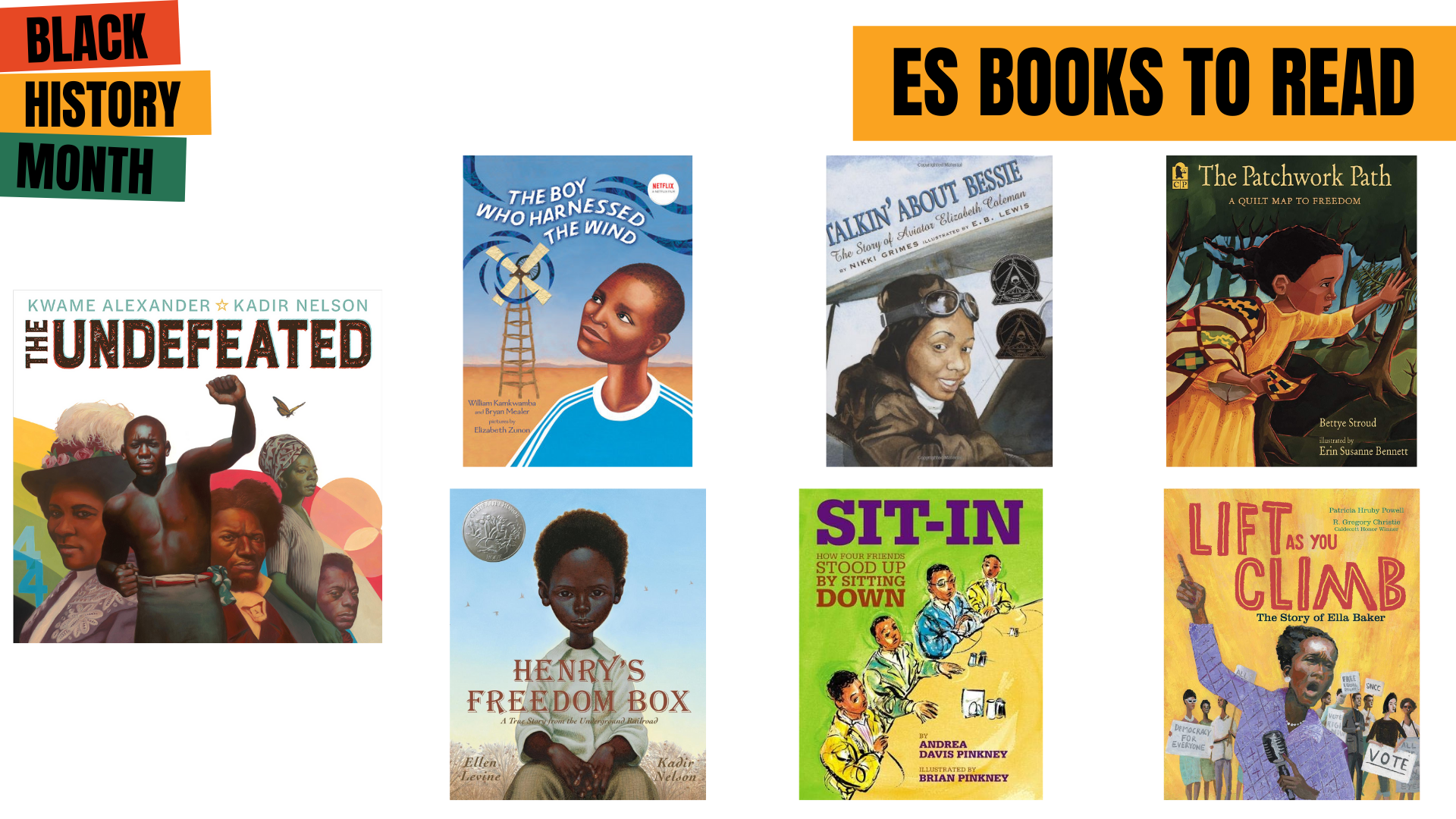
Consider checking for local BIPOC-owned bookstores near you for these and other titles. Local to Siena, for instance, is Loyalty Bookstores, which has a number of great virtual events, suggested reading lists, themed bundles, and more for readers of all ages.
Of course, no single month or set of books or curricular activities can encompass the complexity of black history, so Siena students will continue to enhance their awareness of racial justice issues. For more, read about Siena’s anti-racism resources and statement on equity and inclusion.
How Parents Can Maintain Support Networks

It’s been quite a year, hasn’t it?
Given how much has changed in terms of parenting, schooling, work–life balance, and more, parents should remember that they’re not alone. A few months ago, Siena counselor Holly Rothrock wrote an excellent blog post on experiential self-care lessons. While originally written for students, these lessons are relevant for parents in caring for their mental health and feeling connected.
Online Resources for Support and Community
Siena’s website has a number of resources for parents about learning differences, college applications, and more. Here’s a list of books we have in our parent resources library that you might also find helpful. Parents needing to feel connected as more schools are reopening could check some of these educational resources:
- Parents’ Place of Maryland includes access to links, podcasts, and more about schooling, mental health, and COVID.
- The Parent Encouragement Program (PEP) has some resources specific to COVID and telework, as well as parenting classes, a blog, and resource library.
- Hey Sigmund has plenty of good material about anxiety management and sleep habits for kids.
- Child Mind Institute, while not a support group per se, has a lot of great information to complement the above resources.
Parents could also check if their children’s schools have any online groups for sharing resources, advice, and support.
Resources for Parents of Children with Learning Differences
- Community Connections for Parents is a support group for parents of children with learning differences, ADHD, and anxiety.
- The Study Pro (Virginia) hosts a learning series for parents. The topics range from executive functioning and anxiety to writing coaching for various grade levels.
- ADDitude has ample information for ADHD and a discussion forum.
- On Facebook, parents can consider joining Dyslexia Support and/or Decoding Dyslexia MD. Dyslexia Support is a private group that offers practical advice, book recommendations, and emotional support. Decoding Dyslexia MD is a public group with posts on where to find a tutor, where to get your child assessed, questions about schools, and more.
- WISER has events, webinars, experts, and more for parents of children with learning differences.
- Understood has plenty of information for families, including the Understood Community.
See more of The Siena School blog’s resources for parents, including how new families can connect with the parent community.
Do you have any favorite or particularly helpful online resources to share? Comment below or email me. You can be anonymous if you wish.
Note: We do not endorse any of these websites or resources. Always check the privacy and appropriateness for your child.
Healthy Lunches and Snacks for School Reopening

With more schools planning to begin in-building instruction in the coming weeks, are you wondering how to adapt to rules about social distancing and lunch routines?
Lunches and snacks that are healthy, convenient, and don’t need to be reheated or refrigerated at school are especially important, since many students won’t be able to use microwaves or other shared equipment. What are good options for lunches, snacks, and food containers when students return to the school building?
Food and Snack Ideas for School
To maintain a healthy school environment, students’ meal needs should (1) be self-contained, (2) require minimal touching, and (3) not need refrigeration or reheating.
Although you’ll probably continue sending some of the same lunch and snack foods as before, there are some additional options (including ideas for touchless meals) to limit foods that need to be eaten by hand:
- The Sweet Potato Chronicles gives many ideas for touchless lunches and snacks that can be reheated before school, stored in thermoses or similar containers, and eaten with utensils. Watch writer Laura Keogh demo some recipes.
- This clip from Breakfast Television (Canada) shares recipes and other ideas from two work-from-home mothers.
- UC Davis Health has several healthy lunch and snack ideas that parents could adapt based on their kids’ tastes and dietary needs.
- A personal favorite are peanut butter and banana energy bites; they’re healthy and easy to make—even for kids! (Almond or cashew butter could be substituted for peanut butter.)
- There are many healthy options for homemade Chex Mix or trail mix: cereals, nuts, dried fruit, yogurt raisins, and more all go well together and are easy to dole out into individual servings.
- Prepackaged, nonperishable snacks like cereal bars, newtons, and granola bars are portable and durable.
- See some nut-free options from Momables and A Mindful Mom, including a DIY pizza, mini ham-and-cheese bites, and lunch wraps.
Meal options such as these are healthy and portable; they can also be eaten with a fork or spoon to be touchless. Kids can help choose or put them together days in advance and then be ready for the week.
Lunch Containers and Other Supplies for School
Since students won’t be able to use microwaves or refrigerators at school, they’ll need portable lunch equipment to keep food at the right temperature, such as:
- A food thermos or soup container for meals they can warm up before coming to school;
- Lunch containers with either freezable lids or built-in ice packs in lieu of using a refrigerator;
- Reusable cutlery with its own carrying pouch;
- Durable and insulated water bottles for cold or warm drinks;
- A CrunchCup for cereal on the go;
- Durable lunch boxes and bags—Good Housekeeping has a list of the 15 best lunch boxes and bags (including some insulated ones); and
- An extra sealable bag for students to put their mask in while eating. (Note: there are many options for reusable sealable bags.)
Clip-on hand sanitizer is especially important as well; many parents have gotten good deals on large containers of hand sanitizer for refilling portable ones. Travel-sized antibacterial hand wipes are also useful, and students could maintain cleanliness by putting the used wipe in the foil pouch for later disposal.
Have a favorite snack idea or supply? Let us know in the comments.
If you need more ideas and resources for parents, see The Siena School Blog, including helping left-handed students and ensuring self-care.
*Note: We do not actively endorse any of the above sites, recipes, or resources. Please check them for allergens and other food sensitivities for your child.
Decision Time: Summer School or Summer Tutoring?

Believe it or not, the school year is fast approaching the halfway point. For some parents, it’s time to start weighing options for the summer. Once summer camps and other traditional activities resume, families may feel students need more individual attention on academics to make up for any gaps in learning this past year.
Finding Appropriate Academic Programs and Local Tutoring Options
Education consultant Ann Dolin has written about parents’ summer anxiety regarding how to find the right amount of academic practice and intellectual rigor over the summer. After almost a year of online learning for many children, parents might not be seeing the typical gains in reading, math, and other skills. “You certainly don’t want a summer where kids aren’t involved in any learning at all, and that’s because they can lose up to two months of progress,” Dolin observed in 2019, “But you don’t want to go overboard, either.”
While summer school may have negative connotations for students, finding the right balance of rigor and relaxation to help parents keep their children learning is key. Summer academic programs and tutoring that adopt both approaches have significant benefits. Continued academic practice and specialized training throughout the summer are especially important for students with language-based learning differences to prevent summer slide regression in reading and writing skills.
The Siena School offers both summer academics and tutoring programs for area students (not just current enrollees) to offer a continuity of education between school years.
Summer Academics for Students with Learning Differences
Siena Silver Spring’s summer academic program provides students in grades 4–9 with a positive instructional experience that works on review, reinforcement, and enhancement of academic skills. Small classes and a nurturing environment provide fun and creative learning opportunities in reading, writing, and math skills and concepts. Students who participate in summer academic courses get the opportunity to experience the school on a smaller scale and ease into the school community. Seeing Siena’s curriculum, faculty, and strategies before the school year starts smooths students’ transition to a new school after they’ve gained comfort in a new learning environment.
Siena’s summer academic program provides the same individualized, multisensory approach practiced throughout the school year in a relaxed but rigorous setting. (See Siena’s academics page for more curriculum information.) Students learn and practice using assistive technologies, specific executive functioning techniques, and writing and reading skills that are applied in each class. It’s been consistently beneficial for our new students to attend summer academic sessions to start creating a community with other students who have similar learning differences.
By first learning new skills, technology, and strategies and then practicing them in class without the added pressure of grades, homework, tests, or quizzes, students can best prepare for the coming school year during the summer. Attending a summer academic session allows students an opportunity to build and practice using a toolkit of skills to carry with them into the fall.
Summer Tutoring for Students with Learning Differences
Another good option to prepare for the new school year is tutoring in specific subjects. Summer tutoring offers consistency of learning, new skill development, one-on-one instruction, and individualized learning—all at a pace structured for the child. Tutoring can give some structure to a student’s summer day and exposes them to healthy learning practices that they can then continue once the school year starts.
Siena Tutors, Siena’s virtual tutoring program, provides students in grades K-12 with a positive instructional experience focused on each individual’s growth in core academic subjects including reading, writing, math, science, and Spanish. We additionally offer tutoring services with a focus on executive functioning, which includes scheduling, prioritizing tasks, managing workloads, organization, and goal setting. See Siena’s tutoring page for more details about our program and tutors.
These individualized virtual tutoring sessions—which can be tailored to their needs—equip students with various skills applicable to both their virtual and traditional schooling. The tutors are educational professionals extensively trained in multisensory instruction and accustomed to individualizing lessons. By using the same multisensory approach that Siena does, these tutors offer students new strategies and tools while delivering important educational continuity.
Summer tutoring sessions can offer students an opportunity to preview next year’s curriculum if they struggle with information processing or executive functioning. This preview will help when a student accesses that curriculum the next school year. One-on-one time with a tutor enables solid review time for students to build on their skills and start a solid foundation for the next school year.
While summer school may sound scary for students, trying the approach of summer academics or summer tutoring might be a great compromise. Offering either option to your child this summer can still give you the desired end results of knowing the learning process will continue through those dreaded summer slide months.
Resources for Students with Learning Differences
- See The Siena School blog for posts about our multisensory and movement-based curriculum, as well as ideas for at-home work and free time over the summer.
- See Ann Dolin’s website and YouTube Channel for more resources and tips for avoiding the summer slide.
- LD Online and the Atlantic Seaboard Dyslexia Education Center (ASDEC) have a wealth of resources for families navigating academics and tutoring needs.
- Reading Rockets also has good information for finding a tutor for children with dyslexia.
Colleges Want Strong Applicants: What are They Looking For?

As high school students adapt their admissions profiles to what colleges are looking for in 21st century learners, it’s increasingly important for them to adopt appropriate work habits now. A recent piece in The Harvard Gazette examines some key traits—such as “self-awareness, curiosity, diligence, perspective-taking, social awareness, and collaborative skills”—that admissions offices are privileging over grades and test scores. How can high school start developing habits that prepare them for college?
Developing Skills and Independence for College
Schools that integrate college and career prep into their high school curricula can help students develop important organization, executive functioning, and independent work skills. The Siena School helps prepare high school students for college work habits through its internship program. Siena’s internship program enables students to choose a new internship annually to explore various career interests, allowing for direct experience to develop these important 21st-century skills that colleges look for, among them:
- Collaboration and acting on feedback
- Communication and professionalism
- Time management
- Self-advocacy and independence
- Problem-solving
Internships enhance high school students’ college and career readiness by giving them hands-on experience in various job roles and tasks. Siena also teaches students to self-advocate and use all available tools and strategies, so high school students have plenty of practice advocating for themselves, prior to earning their independence in college.
A few key parts of self-advocacy are self-awareness, resiliency, and diligence, skills that can carry students through high school and college. Watch this recent Siena graduate share some of his experiences in writing at the collegiate level:
Using tools and strategies such as paragraph planners and highlighting key information when reading aided in his successful transition to college.
“College admission professionals recognize the value of empathy, resilience, honesty, and other attributes in assessing applicants and shaping their classes”
A key part of high school at Siena is teaching students to find the balance between homework, independence, leadership, college counseling, internships, service learning, electives, and athletics. Students will have to balance multiple responsibilities in college independently. Important executive functioning skills need to be honed and practiced to deal with deadlines, setting office hours, problem solving, self-management, and focus. It is best to practice exploring strategies that will work in high school to then carry to the next level.
“More colleges are moving away from accepting students who did the most ‘stuff’ to looking for those who focus their energy in specific areas that they’re passionate about.”
Siena’s senior independent project is designed to simulate the experiences that students will face after graduation. They research a topic that they are passionate about and then they write drafts of a final paper. This allows teachers to provide feedback on students' writing and see how well they use the tools and strategies (color-coded planners, editing checklists, etc.) they have learned at Siena. Students practice creativity, brainstorming, and self-reflection during the process, meeting deadlines, attending office hours, and calendar planning.
The main goal of the reflection is to clarify students’ strengths and weaknesses in preparation for work and school while they still have time to practice and gain support and feedback from teachers. It is also a chance for students to build their learning around their own interests and incorporate their strengths and creativity into their work. For some, it has led to the creation of side businesses and/or the development of lifelong hobbies and creative projects.
“What you do outside the classroom reveals a lot about you. Admission officers want to know what you’ve learned and how you’ve grown from participating in these activities.”
A decade or more ago, accumulating tasks, extracurriculars, or accomplishments for a college application might have been enough to be accepted. Now, though, admissions offices are valuing both character and meaningful extracurriculars for new applicants. Have students shown leadership potential and initiative? A willingness to take risks? A sense of social responsibility and commitment to service?
Siena’s curricular and extracurricular programs highlight character development, helping others, peer leadership, and more. In the Peer Mediator program, high school students—after teacher recommendation and training to develop active listening and problem-solving skills—meet with other students who have an individual problem and help them brainstorm solutions and ultimately a solution that works for all parties involved. As well, in the Siena Ambassador program high school students volunteer to mentor new students and help these students transition to the Siena community.
Admissions and campus visits continue to adapt to 21st century learning styles and needs. For more on how high school students can enhance their college readiness now, see The Siena School blog for posts about virtual college tours and tips for writing in high school and in college.
Learn more about tools and strategies that Siena employs to address executive functioning, organization, and independent work for students at the Twice Exceptional (2e) educators’ conference on January 25, 2021.
Resources for College Admissions in 2020-2021
- U.S. News and World Report, “What Colleges Look For” (2020)
- National Association for College Admission Counseling, “Colleges Consider Student Character Traits in Admissions Decisions” (2020)
- College Choice, “What Colleges are Looking For in a Successful Applicant” (2020)
- Harvard Gazette, “Will Coronavirus Change College Admissions?” (2020)
- CNBC, “315 College Deans Detail What They Are Looking For from Applicants during the Pandemic” (2020)
- College Board, “Extracurriculars Matter — To You and To Colleges” and “Character Counts: What Are Colleges Looking For?”
- College Board, “Applying 101”
- Times Higher Education, “Top 7 Qualities Universities Look for in Student Applicants” (2017)
Left-Handers Learning from Home

We’ve noticed a trend in our school population: many of our students are left-handed, but they’re not always aware of how to adjust to a right-dominant world.
In the U.S., there’s approximately an 89-10-1% breakdown between right-handed, left-handed, and mixed-handed people, respectively. Researchers tend to agree that there’s at least a correlation between left-handedness, brain lateralization, and language-based learning differences like dyslexia.
Although there is not yet a definitive genetic link between dyslexia left-handedness, handedness is linked to brain hemispheres. When the hemispheres don’t “speak” to each other effectively, children can develop language- and communication-based issues, since the left brain hemisphere is the seat of language and communication and responsible for the evolution of language understanding.
Resources for Left-Handed Students
In appreciation of left-handed learners within our language-based learning differences community, here are some resources, ideas, and links to help.
 Home Workspaces
Home Workspaces
- Siena’s Math & Science Department Chair Jennifer Chambers recently wrote about valuing students’ input when setting up virtual learning environments, which parents can make lefty-friendly with a little extra feedback from their children. This could be as simple as having students work on the left side of their desks, as one of Siena’s students does. Another student puts her computer directly in front of her and leaves space on the left for writing. She also uses left-handed pencils, which prohibit smudging because they’re different from typical pencils.
- Independent School Parent has more useful advice for parents to help their left-handed children adjust to right-dominant environments, such as “facing your child when demonstrating a new technique...to create a mirror image of the actions.”
- Parents.com offers several great tips for virtual learning spaces, such as putting a lamp on the opposite side of the child’s dominant hand to avoid shadows while they write or draw. It also suggests having multiple spaces (if possible) for focused work, reading, and other tasks; if children are working in more than one space at home, parents can make sure each one is lefty-friendly.
 Supplies and Technology
Supplies and Technology
- Learning Without Tears goes over how to help left-handed children write by hand more effectively. Parents can help by ordering left-handed pencils, pencil grips, scissors, notebooks, planners, and other school supplies. This piece from September 2020 shares 15 school supplies for left-handed students. See other recommendations here and here.
- Students can also reconfigure their computer’s mouse or touchpad to be left-handed, whether they have a Chromebook (video here), iMac, or MacBook.
 Online Resources
Online Resources
- The website for Left Handers Day (August 13) always has good material and resources.
- Facebook has groups like Everything Left-Handed and The Left Handers Club to meet other left-handers and share information.
- Pinterest has a lot of great left-handed ideas, like “Why it's awesome to be left-handed,” “Left-handed crocheting and knitting tutorials,” and other content.
- Anything Left Handed is a great news and research digest; it also has Facebook and Twitter communities.
- Read some recent news articles about a global study of handedness and neuroscience studying left-handers.
- Take a deeper dive in scholarly articles about brain lateralization, handedness and developmental coordination, and lateralization in humans and some animal species.
In a distance learning environment, left-handed students have more freedom to optimize their workspaces than they might in a classroom. This could be an especially good time for left-handed students to adjust their learning environments and supplies so they’re better prepared when in-person learning resumes.
Do you have any ideas or tips for optimizing left-handed workspaces for children or adults? Let us know in the comments.
Distance Learning Space Setup: Value Your Student’s Input

Preparing for your student’s first day of school and year looks very different than past years. Instead of looking for a new backpack and lunch box, you are searching for an optimal space for your child to learn at home, in addition to gathering supplies that not only will help them learn but also make their learning environment inviting and fun.
Preparing Home Learning Spaces
As you prepare your student’s more permanent learning space in your home, are you considering what this looks and feels like for them? Have students reflect on what worked well for them this past spring; it will be meaningful to check in with them about possible changes to their learning spaces that can help them both academically and emotionally.
Depending on your child's age, you may use all or some of these questions and conversation starters:
- How do you best learn?
- Where in the house do you want to do school daily?
- What would be most comfortable for you?
- Do you need to have a variety of different positions and locations to learn? How could you help create a flexible learning space?
- Do you need to move all or part of your body during school?
- Do you want to be by yourself or with another person when in school?
- What will be distracting for you? What will help you focus during school?
- What supplies/materials do you need and want for your learning space?
- How do you want to organize those supplies?
- What rules or boundaries should we have for computer usage, beyond your school’s rules?
- Is your child left-handed? If so, read this Siena School blog post on left-handers learning from home.
- What will remind you daily to smile?
- Something from school?
- A family picture?
- A childhood memento or knickknack?
- A stuffed animal?
Distance Learning Ideas
When you have this conversation with your child, enter it with a mindset of collaboration, with each of you a member of a team working towards an outcome of establishing the best learning space for them this year. Most importantly, have fun working on this project together.
For ideas to engage with your child in this conversation, read this New York Times article by Melanie Pinola. She not only gives great ideas for establishing this space and its boundaries but also provides links to possible supplies that may help set up your child's learning environment. For a refresher on distance learning tools and tips, read Ms. Darefsky's March blog post on distance learning ideas and tools.
Creating a Virtual Community for New Families

Connecting To Your School Community Online
Joining the community at a new school has always been important for families: whether it is finding new friends for children, exchanging contact information, arranging meet & greets to get children and parents together, or sharing information on where to find school supplies.
It’s become extra-important this year with so much of our socializing and community formation becoming virtual. But, there are still plenty of options for new school families to meet current ones and get the kids acquainted before the school year starts.
Families can start connecting with each other now to ease the transition from summer to the new school year. There are also plenty of ideas out there for art projects, games, and more to help families get acquainted and grow the school community.
Resources for Online School Communities
 Making Connections
Making Connections
- Look at our recent blog post about virtual summer vacation, which offers ideas for having a virtual book club or movie night, among other ways to keep kids connected.
- Remember that student grade representatives are especially important now for welcoming new families into the school community virtually. Once they have contact information for new families, grade representatives can reach out and arrange a virtual activity. This is a wonderful way to meet families who have been at the school for years and learn about grade-specific events.
- Attend school-based meetings: often schools will kick off the transition to the school year by hosting a grade-level event to allow the families to become involved.
- Check to see if your school has a private social media group for families at the school for sharing information and resources. This could be a great way to connect with families across grade levels. You might need a moderator to give you access to the group, but this is usually a simple process.
- While ensuring that you adhere to state and local guidelines, parents could also trade ideas for small-group social activities like hiking or biking in outdoor, socially distanced spaces with adjacent trails (such as Brookside Gardens, Lake Needwood trails, or Meadowbrook Park in Montgomery County, MD).
 Online Resources, Games, and Activities
Online Resources, Games, and Activities
- The Kids’ Table offers virtual cooking classes for kids to learn cooking and baking skills with each other and their families.
- There are plenty of online board game options from Parents.com that school families can build a virtual game night around: Monopoly, Clue, and more. Remember also that Jackbox offers family-friendly games.
- Happy Hooligans has plenty of virtual science activities for kids to learn and try out with each other.
- STEAM Powered Family has some at-home science ideas and “Summer Boredom Busters” that families can work on together for socializing and community building.
With a different kind of school year approaching, virtual socializing will help families and kids stay connected throughout the summer. Expanding friendship and community circles now will not only give kids and families something else to do in the dog days of summer; it will also help expand the support network everyone will need in the coming school year.
No Summer Camp? Ideas for Summer Fun at Home

With a different kind of summer this year, parents might be looking for resources to not only structure their kids’ time but also give them some (fun) intellectual work to ready them to thrive next school year.
Sara Weiser, an occupational therapist in Northern Virginia, noted in a recent webinar that, “As parents, we sometimes forget that kids really thrive on structure and routine.” In the same webinar, Maria Zimmitti, a psychologist and clinical director in the DC area, added: “Summer is not the time to make up everything that was lost in the last ten weeks of school. Keep it simple.”
Thankfully, parents looking for a manageable, flexible structure this summer have options for balancing their work needs with family time, children’s learning and leisure needs, and their own self-care. Many of the ideas for trips, tours, and social activities that we shared for virtual spring break could also work for the summer.
Here are some more ideas and resources for families that can get kids moving, keep activities multisensory, and allow for some independent and some social time:
 Planning and Scheduling
Planning and Scheduling
- Have a visual schedule that allows for some flexibility and input from the whole family, so everyone in the family feels heard and paid attention to. What kinds of options can give kids some control and choice, while still ensuring an appropriate level of structure? (See below for a sample schedule.)
- Ann Dolin, owner of Educational Connections, suggests asking kids, “What do you want to learn or do this summer?” From there, each family member can brainstorm around their interests and write their answers on Post-its (each family member gets their own color). Sharing and discussing options as a family helps identify a few activities to build summer plans around, which can then turn into a chart with multiple columns for each person.
- For talking to high school kids, Zimmitti suggested that parents schedule a meeting to discuss important topics so everyone has mental prep time. Sending a calendar invite and letting kids pick the time and day avoids springing important discussions on teenagers, who might not be flexible or amenable to ideas if they feel blindsided. As well, she advocated giving teens daily and weekly tasks but letting them decide when to do them; this potentially gives high schoolers a nice balance of responsibility and flexibility.
- Regardless of whether kids are internal or external processors, allowing lead-in time for the discussion helps parents process along with their kids, provided that they follow the R.U.L.E. approach (Resist the urge to tell them what to do, Understand what they want to do, Listen with empathy, and Encourage them).
 Indoor Activities
Indoor Activities
- Reading-based games and activities, such as virtual book clubs and read-alouds, are encouraged. Parents could coordinate a virtual read-aloud to give kids some social time, as well as help each other get some work or down time. Older readers might even like leading the read-alouds for younger kids.
- Kids can both listen to stories read and see some animations at Storyline Online: it’s primarily for younger readers (K–4) but could also be good for older kids’ nostalgia and seeing celebrities they might already know read old favorites. Audible is another fantastic resource for readers of all ages, including their free audiobooks for kids.
- Some parents are rereading and sharing old favorites with their children. Have your old copy of The Hobbit, Tales of a Fourth Grade Nothing, or the original Choose Your Own Adventure series? This is a good time to introduce them to your kids, who could then share them with their friends. Parents can either co-read these with younger children or have older children read them on their own and report back in a fun book report or reaction list. Parents could also choose one dinnertime and make it a book discussion—or even get a special to-go meal when they can then have a book discussion and one-on-one time with their child about a book they both read.
- Parents could do the same with movies they enjoyed in their youth to give kids a quasi-educational activity and sneak in some learning (e.g., watching a film adaptation of a favorite book and then steering the kids to the book, or vice versa). Arranging a virtual movie night around parents’ old favorites could be a fun (and repeatable!) social activity too.
- Kids ages 9–14 interested in video editing can attend Virtual Video Production Camp from Zack Wilson, a teacher at Takoma Park Middle School in Takoma Park, Maryland.
- Preteens and teens might enjoy the Virtual Music Production Songwriting Camp from Dudley’s B Sharp Academy. There are 5 sets of dates in July and August; email info@bsharpworld for information and registration.
- Kids of various ages can leverage their creativity into sharing and/or volunteering opportunities. Have a child who likes to cook or bake? Look into how they can teach others their skills virtually (such as a younger relative). Parents could also help kids figure out how to cook or bake things for front-line workers, as well as donate items to a local food pantry. For example, Montgomery County, Maryland, has a full list of volunteering opportunities; check for other opportunities in your area.
- Enjoy some family game time with Scrabble, Word Witt, or other games that merge fun and language learning.
- Additional creative/learning options include John Spencer Writing Prompts on YouTube, BrainPOP, and BrainPOP Jr.
- Check out Virtual Field Trips, which has many options sortable by age.
 Social and Outdoors Time
Social and Outdoors Time
- We Are Teachers shares some great Fourth of July (and after!) activities for families, multisensory water activities for STEM and other kinds of learning, and imaginary vacations that parents can take to Paris and elsewhere with these 21 books.
- Many of Parade’s 125 things to do with kids at home can still be done over the summer, such as setting up a treasure hunt, playing Read-at-Home bingo, taking virtual museum or aquarium trips, and more.
- Connecticut Children’s has ideas for geocaching, exploring science at home, virtual museum trips, and more.
- Moving and working on team-based sports skills can be quite difficult when leagues aren’t in session. Without team activities and practice settings, young athletes can still keep themselves in shape and develop good habits. Some parents could involve coaches and other mentors for virtual meetings and training sessions.
- To both leverage technology and gamify learning, parents could introduce friendly competitions between kids (or whole families!). Number of steps? Skills building? Successful gardening or flower growing? Scavenger hunts? Cell phone photography? Lego builds and challenges? Parents could agree on a prize for the winner to further incentivize the competition.
 Resources
Resources
- Siena counselor Holly Rothrock wrote about self-care and anxiety management, which remain important as the pandemic and related closures and other social restrictions continue.
- American Camp Association’s Resource Library has ideas for parents, and a page full of organizations offering virtual resources for mindfulness and mental health.
- Documentary filmmaker Delaney Ruston’s Screenagers continues to be a useful support for parents dealing with teens and screens. See their resources and information about online events.
- Parents can also learn more about high- and low-dopamine screen activities to manage screen time (which can sometimes be good).
- Dyslexia Help from the University of Michigan has a lot of information for parents about finding kids’ interests over the summer and improving reading and writing.
- Allison Sibley of The Sibley Group offers “Summer Ideas during COVID” and a family communication plan about continuing to deal with the pandemic and related closures, as well as preparing for limited social activities outside the house.
- Sara Weiser offers resources on her website, including Flexible Structure Tips for making a visual schedule.
- My Learning Springboard has a blog and other resources, including “How To Avoid the Summer Slide.”
- Ann Dolin offers her “Homeschooling During COVID-19” e-book, among other resources.
Managing kids’ energy and boredom while engaging their minds, bodies, and social needs might take a whole-family effort, so communicating and exploring options is especially important. Summer break doesn’t have to be broken this year. It can, in fact, be more connected and constructive than it might seem at first.
*Note: We do not endorse any of the above sites or resources. Please check the privacy and appropriateness for your child.

Juneteenth: Celebrate Freedom

As part of Siena’s continuing mission of community outreach, diversity, and education, we’re joining many educators and others across the country in commemorating Juneteenth (Freedom Day). June 19, 2020, is the 155th anniversary of the day in 1865 when the last enslaved persons in Texas were emancipated. This was two-and-half years after President Lincoln emancipated enslaved people in Washington, DC, on April 16, 1862.
We recognize that, although this is an historically significant day, the work that Juneteenth represents must continue each day. Here are some resources for all of us to engage with and discover ways to celebrate:
- An original order of emancipation in the National Archives from June 19, 1865.
- A list of commemorations, protests, vigils, and other events in the DC area for today, as well as this brief history of Juneteenth’s extra historical significance in light of recent events.
- See the “Juneteenth: A Celebration of Resilience” from the African American History and Culture Museum
- Locally, the Frederick Douglass National Historic Site in southeast DC, where Douglass lived late in his life and, among other work, finished his final autobiography, Life and Times of Frederick Douglass. Douglass also attended the dedication of Lincoln Park in northeast DC. As of 1974, Lincoln Park also features a statue of famed educator and civil rights activist Dr. Mary McLeod Bethune.
- Look at these resources and material from Ashleigh Lawrence-Sanders of the University of Dayton and Cheryl Hicks of the University of Delaware.
- Read this editorial from Dr. Tera Hunter from Princeton about Juneteenth.
- DC’s Loyalty Books has a fantastic list of Antiracist Reading Recommendations, as well as a virtual book club about antiracist works. Also check this Juneteenth Reading List from Random House and this one from Colours of Us for children’s books.
- Juneteenth Book Fest on YouTube will continue sharing material related to this important day—and everything it entails. They also have an online bookstore.
See this message to our community from our Head of School and Founder, as well as our growing list of anti-racism resources.
College-Level Writing Tips

It’s always important for high school students to think about the skills, mindsets, and habits they’ll need as their academic careers advance. With many activities and events still canceled, this summer presents a good learning opportunity: high school students can take the time to build their writing and related skills to carry them through next fall.
Learning How To Write in College
Before coming to Siena, I was an English and First-Year Writing professor in the Washington, DC, area for 15 years, so I’ve worked with a lot of students on their approaches to writing and research. The most important thing that new college students can do is this: be open to learning the new and, sometimes, unlearning the old. I always reminded students on the first day of class that what worked well in high school wouldn’t necessarily work as well in college. This learning/unlearning ranges from time management and working independently, to structuring papers and performing online research.
In The Siena School's summer writing workshops for rising 9th–11th graders, Siena’s English teacher Maya Furukawa will focus on learning the steps in writing through multisensory strategies, graphic organizing, and assistive technology to compose persuasive writing while applying feedback to proofread and edit one’s own work. This summer could be an excellent opportunity to learn without the pressure of a grade, as this workshop will focus on skill building.
Developing Writing Skills in High School
Here are some more tips for writing in college, although it’s never too early for high school students to start developing their writing skills and work habits, as well as hone their skills in preparation for the next level:
![]() Embrace the processes of writing and research: note taking, outlining, planning, scheduling, brainstorming, drafting, reviewing, and revising. These are all important steps in the journey from idea to a finished project, and they can’t be done in a day. Always give the process time to develop. If an assignment is due in three weeks, use the three weeks to plan and draft it. Taking breaks in the course of a day, weekend, or week helps ensure quality writing. Bookmark these resources from the University of Chicago, Psychology Today, and Oregon State University to learn about how breaks help writers process information and improve their writing output.
Embrace the processes of writing and research: note taking, outlining, planning, scheduling, brainstorming, drafting, reviewing, and revising. These are all important steps in the journey from idea to a finished project, and they can’t be done in a day. Always give the process time to develop. If an assignment is due in three weeks, use the three weeks to plan and draft it. Taking breaks in the course of a day, weekend, or week helps ensure quality writing. Bookmark these resources from the University of Chicago, Psychology Today, and Oregon State University to learn about how breaks help writers process information and improve their writing output.
![]() Remember that A’s and other consistent successes in high school will not easily translate to A’s in college. Even if, for example, an assignment can be done all in one sitting the night before it’s due, there are no guarantees about its quality or fit for the rubric. Rushed writing also leads to avoidable errors (e.g., spelling, overlong paragraphs, wrong details, and missing citations) that affect assignment grades.
Remember that A’s and other consistent successes in high school will not easily translate to A’s in college. Even if, for example, an assignment can be done all in one sitting the night before it’s due, there are no guarantees about its quality or fit for the rubric. Rushed writing also leads to avoidable errors (e.g., spelling, overlong paragraphs, wrong details, and missing citations) that affect assignment grades.
![]() For students who’ve been taught the AP Essay format, be prepared to leave it in high school and upgrade your writing approaches. It’s designed as something to write all in one sitting without books or notes to consult, which is virtually the opposite of a college paper or other assignment. Think about it like an app that isn’t compatible with a new phone—the app worked well when it needed to, but now it’s time for something more advanced.
For students who’ve been taught the AP Essay format, be prepared to leave it in high school and upgrade your writing approaches. It’s designed as something to write all in one sitting without books or notes to consult, which is virtually the opposite of a college paper or other assignment. Think about it like an app that isn’t compatible with a new phone—the app worked well when it needed to, but now it’s time for something more advanced.
![]() Read the syllabus and assignment handouts closely, and then reread and review them when working. Professors sometimes give specific instructions on them that they don’t fully explain in class about the assignment length, number and type of sources to use, and format. Remember that professors still hold students responsible for following instructions even if they weren’t explicitly addressed in class.
Read the syllabus and assignment handouts closely, and then reread and review them when working. Professors sometimes give specific instructions on them that they don’t fully explain in class about the assignment length, number and type of sources to use, and format. Remember that professors still hold students responsible for following instructions even if they weren’t explicitly addressed in class.
![]() Always make sure to have whatever notes or book(s) needed for a writing assignment close by—preferably close enough to grab easily. Avoid trying to quote from memory or generally describing something from a book when a quote or something else concrete is better. Notes and books are especially great tools when they’re reread, so don’t hesitate to review a passage or chapter before writing about it.
Always make sure to have whatever notes or book(s) needed for a writing assignment close by—preferably close enough to grab easily. Avoid trying to quote from memory or generally describing something from a book when a quote or something else concrete is better. Notes and books are especially great tools when they’re reread, so don’t hesitate to review a passage or chapter before writing about it.
![]() Don’t hesitate to ask questions, but remember that professors might not give all the guidance or answers. They might ultimately expect students to figure out most of a problem independently after giving some advice. If students have questions about an assignment on Day 1 of working on it, they should ask them on Day 1.
Don’t hesitate to ask questions, but remember that professors might not give all the guidance or answers. They might ultimately expect students to figure out most of a problem independently after giving some advice. If students have questions about an assignment on Day 1 of working on it, they should ask them on Day 1.
![]() Use professors’ office hours—and not just during the week an assignment is due. In general, professors—especially first-year writing ones—like seeing students plan and outline their work, so meeting with one to talk through ideas and drafts can be helpful. It also shows good motivation and self-advocacy.
Use professors’ office hours—and not just during the week an assignment is due. In general, professors—especially first-year writing ones—like seeing students plan and outline their work, so meeting with one to talk through ideas and drafts can be helpful. It also shows good motivation and self-advocacy.
![]() Use all the available resources the college or university offers, such as the Writing Center and Disability Support Services. It’s always a good idea to look into academic support options as early as possible to avoid the beginning-of-semester rush.
Use all the available resources the college or university offers, such as the Writing Center and Disability Support Services. It’s always a good idea to look into academic support options as early as possible to avoid the beginning-of-semester rush.
![]() Understand that writing and editing are two discrete processes, so avoid the trap of trying to self-edit while writing. Scheduling your work is a great way to keep your writing and editing separate since it gives you ample time to do them. Write first to express thoughts, and then go back to edit, expand, and clean up. Reading papers out loud when editing is a great way to notice errors, SpellCheck misses (e.g., “defiantly” instead of “definitely”), long and awkward sentences or paragraphs, and other issues that affect an assignment’s grade. Using assistive technology like Read & Write and NaturalReader to have documents read aloud can also help students catch errors or awkward writing. (See this resources page from the University of Michigan for more options.)
Understand that writing and editing are two discrete processes, so avoid the trap of trying to self-edit while writing. Scheduling your work is a great way to keep your writing and editing separate since it gives you ample time to do them. Write first to express thoughts, and then go back to edit, expand, and clean up. Reading papers out loud when editing is a great way to notice errors, SpellCheck misses (e.g., “defiantly” instead of “definitely”), long and awkward sentences or paragraphs, and other issues that affect an assignment’s grade. Using assistive technology like Read & Write and NaturalReader to have documents read aloud can also help students catch errors or awkward writing. (See this resources page from the University of Michigan for more options.)
Learning to write well is a lifelong process. Teachers, professors, and tutors are continually developing their approaches to writing, research, and revision. Remember, too, that no parental communication with professors might be a big adjustment in college, so be prepared to self-advocate and be independent.
The more that students can start preparing themselves for writing and managing their time in college now, the more likely they are to succeed once the first assignment is due.
Virtual Broadway
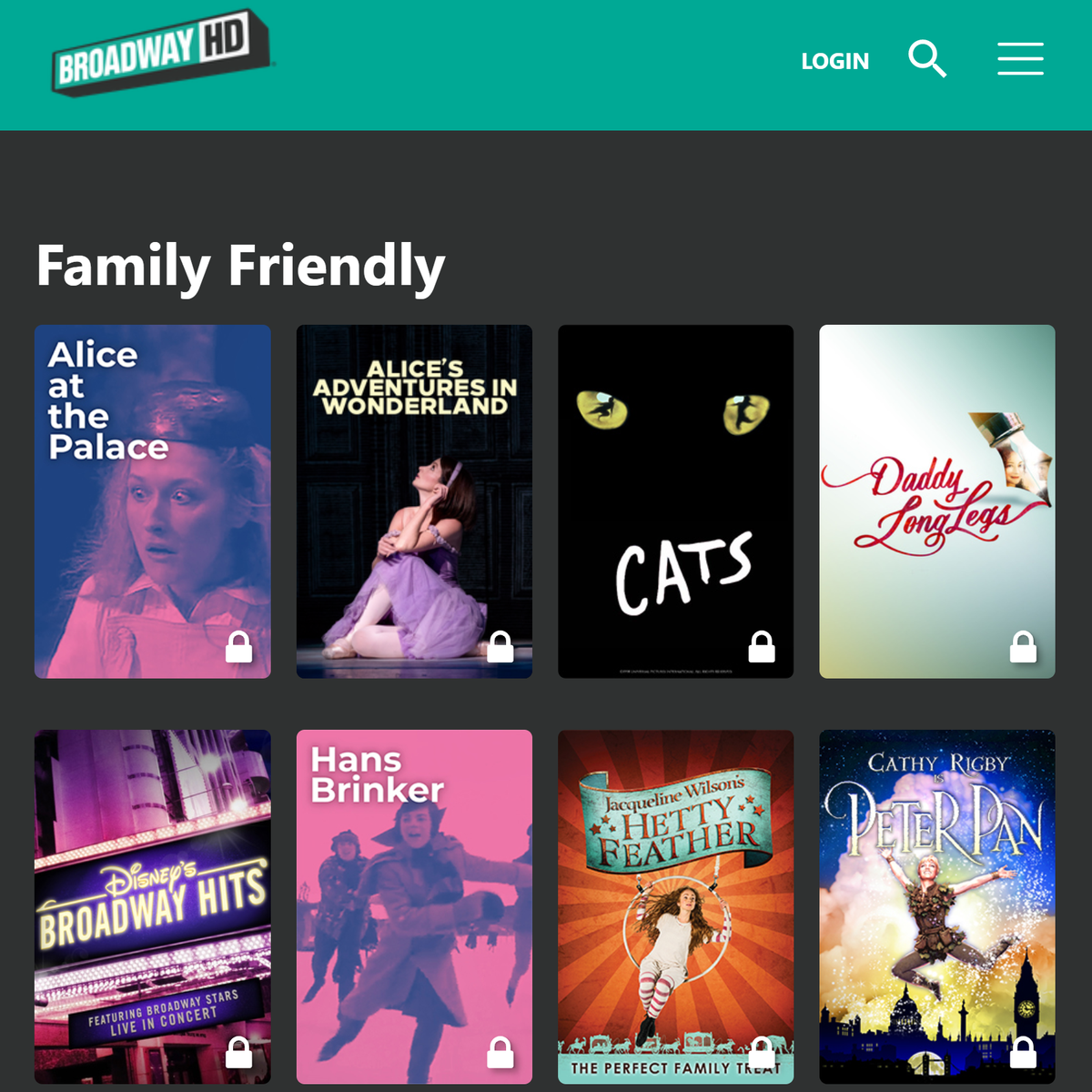
Whether you need to liven up your queue or want to take a virtual trip to Broadway over spring break, Siena's Performing Arts teacher Stephanie Wendell recommends these must-sees currently available online through Broadway HD (free content for a week then a monthly subscription is available):
- Swan Lake
- She Loves Me
- Stars In Concert: Sutton Foster
- An American in Paris
- 42nd Street
- Memphis (recommended for high school and up)
- Putting It Together
- Joseph and the Amazing Technicolor Dreamcoat
- Gypsy (with Bette Midler)
- Peter Pan
Ms. Wendell suggests these other performances and sites for more virtual Broadway options:
- Hamilton: One Shot to Broadway (Amazon Prime)
- Newsies: The Broadway Musical (Disney+, Amazon Prime)
- Ballet Now (Hulu) (Note: one scene has adult language, might only be appropriate for high school and up.)
- Alvin Ailey's Revelations (YouTube channel) and Alvin Ailey All Access are posting their most famous works for free!
Watching some of these with the family—and maybe encouraging the kids to reenact scenes or learn to sing and play their favorite songs—could be a musical way to spend some time over spring break.
Spring Break: Tips and Virtual Trips
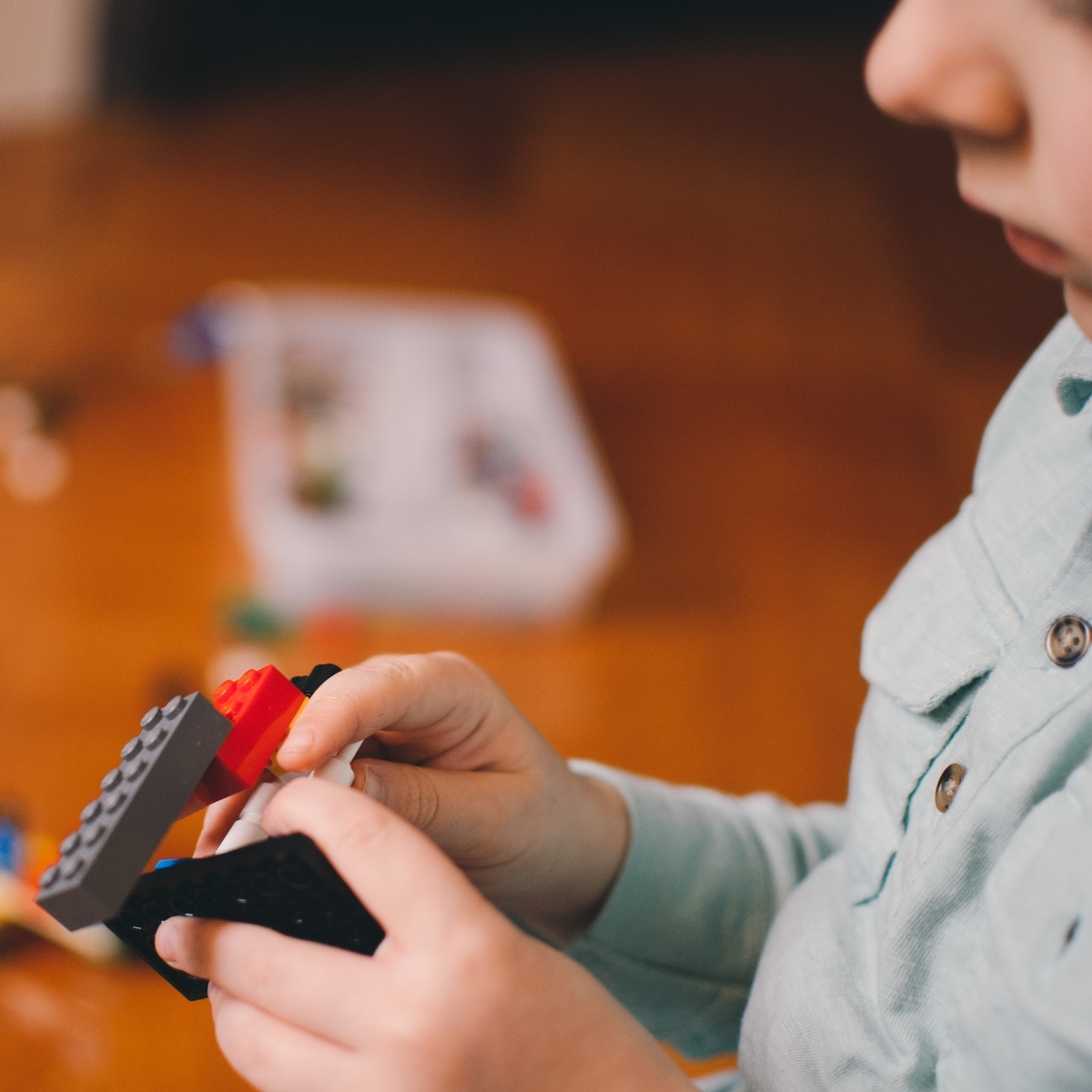
Spring break will look a little different this year. Thankfully, there’s a lot that families can do inside and outside their homes in lieu of a traditional spring break trip.
Social time is especially important now. Consider setting up a Zoom, Google Hangout, Skype, Duo, or FaceTime meeting space for kids and parents. As we all keep finding new ways to stay connected and create communities online, remember that there are a lot of individual and virtual group activities to do with friends, classmates, teammates, and extended family members.
Here are some options for indoor and outdoor fun:
Virtual Trips
- Take a virtual cruise with Viking or Riviera, or take a trip to Florida and many other beaches.
- Ride the virtual roller coaster from Canada’s Wonderland amusement park. Kids can then create their own roller coasters.
- Visit our school’s namesake city.
- Go to Yellowstone National Park.
- Visit Chicago’s Shedd Aquarium and see their penguins.
- Visit the Cincinnati Zoo and live stream with a different animal every day at 3:00 pm.
- More virtual field trips can be found on Siena’s distance learning resources page.
Virtual Groups: Activities
- Read-alouds let kids hear from the authors themselves. Parents could also take turns reading recent books and favorite classics to their kids and friends.
- Group cooking and baking: choose a specific ingredient or recipe and compare the results.
- Have a virtual picnic (indoors or outdoors).
- Learn to sew or knit in a virtual crafts circle. One of Siena’s students suggests reusing old t-shirts and turning them into a blanket! To start knitting with yarn, there are various videos on YouTube about how to cast on (getting the t-shirt yarn on the needle), how to knit, and how to cast off (getting the knitted t-shirts off the needle).
- Host a movie night using Netflix Party app (Chrome) or TwoSeven.
- Make music with friends using Incredibox.
- Host a virtual dance party or play Name That Tune.
- Karaoke Night! Select songs from YouTube, Spotify, or Plug.DJ, and perform them. There are two ways you can do karaoke with remote groups:
- Assign a song to each person or let them choose their own. Everyone records an individual session singing —using something like WeVideo or Screencastify. After, each person sends the clip to the organizer, run a virtual award ceremony that includes showing the best songs and awarding prizes.
- Another way to do virtual karaoke is to do a mashup harmony. Each team member sings the same song and records the session. Then, a video-editing master mashes the clips together into one song. You can then watch this video together, post it on social media, or share with family and friends.
Virtual Groups: Games and Challenges
- Do a backyard camping trip—tent, sleeping bags, ghost stories, and s’mores.
- Play some backyard games with friends (e.g., HORSE, soccer goals from increasingly difficult angles, beanbag toss/corn hole, and other sports challenges).
- Gardening: For a one-month competition, team members can plant and cultivate a garden from scratch. The competitors can sow seeds from fruit or propagate vegetables. By the end of the month, two things happen: (1) you see who’s got gardening skills; (2) you’ve made participants’ lives a little greener.
- DIY Craft Challenge is a 30-minute surprise activity you can play with family or friends. Bring everyone on a virtual call, share the rules and theme, and then start a timer. Each person has 30 minutes to build something from materials available at home. You could make pasta art, construct an epic pillow fort, or doodle a poetic harmony. The goal is to spark creativity.
- Typing speed races can be fun (and educational!). To begin, kids can take a typing test using typingtest.com. Then, they can share their results with family and friends. The more competitive members will reply with results quickly, and others will follow. Kids can then up the challenge by hosting a typing speed relay, even forming teams and adding up the cumulative scores to see which team wins.
- Virtual Jeopardy! lets you either play pre-built online games or do the research to build your own. As you put your scoreboard together, remember to include fun elements like Daily Doubles.
- See if you can adapt Werewolf and Can You Hear Me Now? for families or kids to play together over Zoom or Google Hangouts. For example, in Can You Hear Me Now? one person is the speaker and the rest are artists. The speaker uses a random image generator; the goal is to describe that image in such a way that the artists can draw it successfully. Without saying exactly what the image is, come up with your own rules to make it easier or more difficult.
- Have kids work on the same puzzle virtually through videos or pictures. Some have timers so you can compete against others.
- Remember these apps that kids can play either on their own or with family and friends: Words with Friends, Bingo, Origami Zoo, UNO!, Monopoly, Houseparty, Scattergories, and Mario Kart Tour.
Indoor Fun & Projects
- Have kids (especially younger students) pick an activity from a jar each day.
- See these Printable Lego Challenges for kids.
- Try some of your own Lego builds, challenges, or activities:
- Have kids create a scene from a movie or show and then have friends guess what it’s from. They could also challenge each other to build what they can only from a set number of pieces or colors.
- Kids could make something to use in their home workspaces, such as a pencil holder, paper organizer, or cord tamer. They could also Lego-ize their family, house, or favorite room and share pictures with friends and family.
- Play chess (vs. human or computer) or Sudoku.
- Repurpose household materials.
- Create cards or postcards for family, friends, grandparents, and others to mail. Send ecards too—such as through Punchbowl or Greetings Island.
- Set up a family scavenger hunt in the house with clues.
- Organize that box of photographs that’s on your to-do list.
- Do some Virtual Volunteering in your area (see Montgomery County’s site for an example).
STEM and Other Learning At Home
- Can’t go to the beach? Make your own sand.
- NASA has some great at-home STEM activities (sorted by grade level).
- The STEM Laboratory has some great Lego Challenge Cards.
- EYE (Educating Young Engineers) also has Lego Club Activities.
- Have kids take part in a coding program.
- See what free resources and daily schedules (broken down by grade level) the Khan Academy has for parents and teachers.
- See the KID Museum: Make It! Plus for live and interactive programming to create at home.
- Check out PBS Kids Full-Time Kid for DIY projects.
Arts
- Listen to free Audible stories for kids. Rediscover old favorites or find new ones.
- Attend one of these virtual concerts that NPR has shared.
- Pick a series like Harry Potter to read (or reread!) and then engage with podcasts about it.
- Encourage kids to be theatrical and write their own one-act play, perform it, record it...and then share with family and friends. They can do the same with making their own live- or stop-action movies.
- Enable kids’ creativity by having them make a comic, write a short story, or compose and record an original song using GarageBand or other software.
- Create a photo slideshow and put it to music. Kids could also create slideshows of fun times with their friends to share with each other and reminisce.
- Check out Round House at Your House from Round House Theatre. Their education department has a Theatre Education Challenges for Students: a weekly series of age-appropriate activities to encourage acting, movement, design, and playmaking. They’ll also have videos released by age group; see their website for more details.
- Imagination Stage’s blog hosts weekly 3-minute movie challenges and other performing arts options.
Staying active and connected while at home is a great way for families to enjoy spring break. Keep sharing ideas with fellow parents and others in your networks.
Virtual College Tours and Other Resources
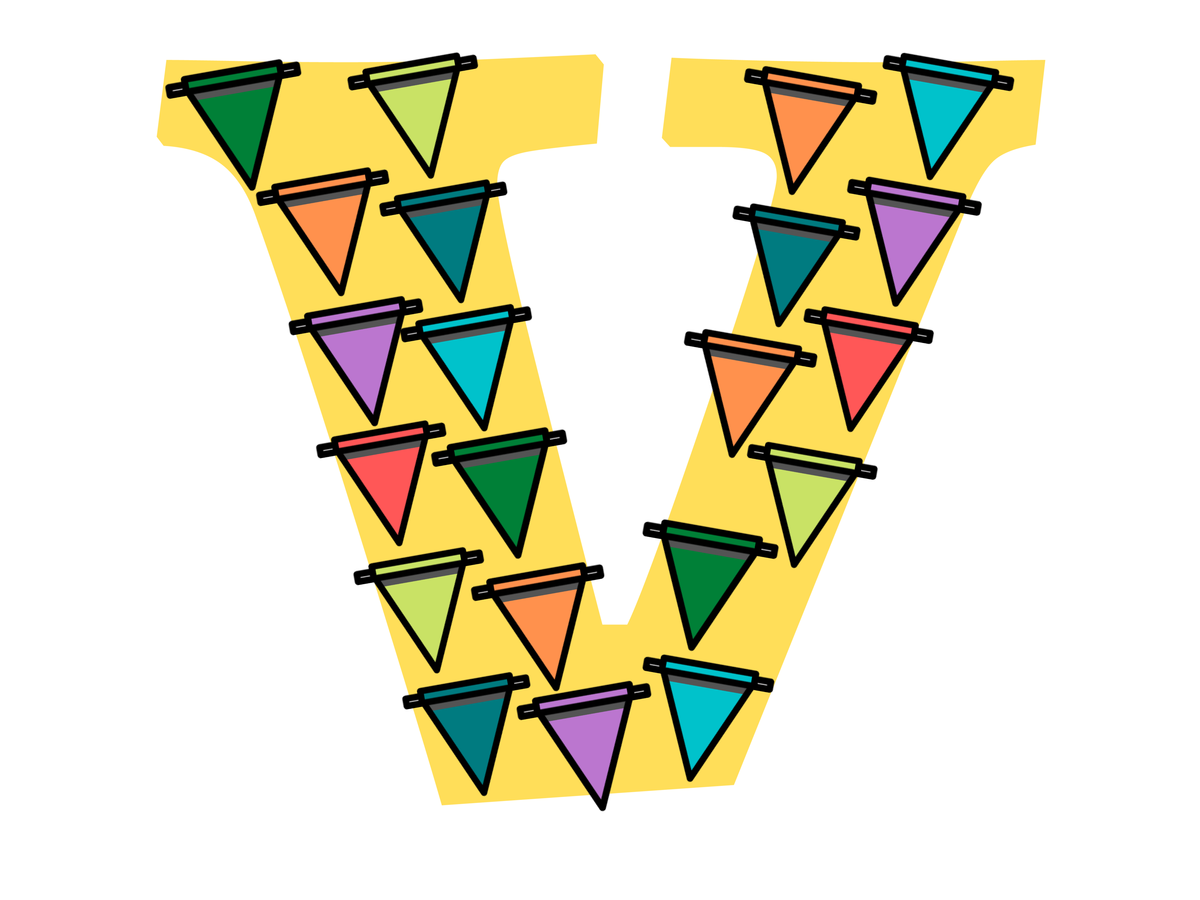
While distance learning is the new normal in K–12 education, college-bound high schoolers have an additional task: college research and tours. Seniors might be wondering how they may tour and then choose a college for next year without actually visiting campus.
Many colleges are closed as a result of COVID-19 and are canceling admissions tours and other events. College visits and open houses are still happening, though, and resources continue to become available to learn about campus life and academics virtually. Here are a few ways to do so:
 1. Understand how much the admissions process has changed as a result of COVID-19.
1. Understand how much the admissions process has changed as a result of COVID-19.
Usually, May 1st is the deadline for seniors to decide which college they'll attend. But, with COVID-19 making it impossible for seniors to attend accepted students’ days or overnight visits, many colleges are extending their deadline to enroll until June 1st. Students may reach out to the colleges they’ve been accepted to for more information. Here’s a list by ACCEPT of many colleges that have adopted the new deadline.
Seniors can make the most of this postponement by reaching out to colleges for more information as they weigh their options. Forbes has published “The COVID College Choice: How to Pick a College During a Global Pandemic”; it offers some helpful tips and a useful acronym to help college-bound students and their families keep things in perspective.
And, although the ACT and SAT have canceled their April and May test dates, students may still register to take the June test. Some colleges are considering going test-optional for the entire class of 2021 in light of COVID-19; check the websites of any colleges you’re interested in for their policies.
 2. Take virtual tours of the colleges you’re interested in.
2. Take virtual tours of the colleges you’re interested in.
Many colleges offer remote 360° tours and virtual reality experiences of their campuses, as well as basic information about the schools.
Rebecca Chabrow, director of enrollment management at Gratz College, has assembled a detailed list of over 900 colleges that offer some kind of virtual tour; there’s also data on location and student population.
 3. Reach out by phone or email to admissions representatives. It’s a good idea to prepare a list of questions in advance.
3. Reach out by phone or email to admissions representatives. It’s a good idea to prepare a list of questions in advance.
Katherine Daley-Bailey, an advisor in the College of Arts & Sciences at the University of Georgia, suggests a few questions based on those she’s received at orientations and other open-house events:
- What resources does the school have on setting expectations and time management? What can students start doing now to prepare themselves for college life? (See this example from Southern Methodist University.)
- What scholarships and other opportunities are available for tuition reduction?
- Do freshmen have to live in a dorm in their first year? And, can freshmen have a car on campus?
- How can students learn about the courses offered to freshmen? How does the registration process work?
- What does a typical workload, average credit hour disbursement, and first semester look like?
This is also a good time to ask prospective colleges about what kinds of learning support they offer students: e.g., the writing center, assistive technology, tutoring services, and workshops on study skills and library research. See here for some of the college-prep resources The Siena School offers its students.
 4. Ask the admissions office to connect you with students at their school who share your interests. Get in contact with alumni.
4. Ask the admissions office to connect you with students at their school who share your interests. Get in contact with alumni.
Online communication and networking have become essential. To replicate the typical follow-up experience after a college tour, students could reach out to admissions and student affairs offices to get directed to relevant online groups or other resources.
Students could also schedule a call or video conference with any alumni that their school’s college counselor puts them in touch with.
Doing some research and outreach now is good training for what students will have to do at college: taking initiative, self-advocating, and managing their own time without direct guidance from teachers or advisors. Managing some of the college research process virtually can help students make informed choices about where they’ll attend in the fall; it can also start building an online support network to aid the transition.
National Girls and Women in Sports Day


Written by Megan Noyes, Volleyball and Basketball Coach, Middle School social Studies Teacher and Associate Dean of Students, and Edie Schutz, Basketball and Lacrosse Coach, Elementary Teacher
On January 26, 2019, the NHL made history when Kendall Coyne Schofield became the first woman to compete in the fastest skater event in the NHL All-Star skills competition. Three other female ice hockey players, Brianna Decker, Monique Lamoureaux, and Jocelyne Lamoureaux were also showcased as demonstrators for the events in the skills competition. This decision by the NHL was witnessed around the country and is a big step towards women's equality in sports. Many parents remarked on the excitement their daughters felt getting to watch women compete on TV alongside male players.

The NHL's decision comes at a perfect time because today is the 33rd annual National Girls and Women in Sports Day (#NGWSD). This year's theme is Lead Her Forward, which the movement's website explains is, "to honor the many ways that sports push girls and women to achieve excellence and realize their boundless potential." This is an important message to send to young girls, especially since, according to a 2017 “Girls In Sports” study by Gatorade, girls are dropping out of sports at 1.5x the rate that boys do by age 14. More than half of girls will quit sports altogether by age 17. As coaches and athletes, we have witnessed first hand the multiple life skills learned through playing sports that go beyond the health benefits of the athletic activity.
Here are what some of the Siena female athletes have to say about what we believe are 5 of the most important life skills that girls learn from playing sports:
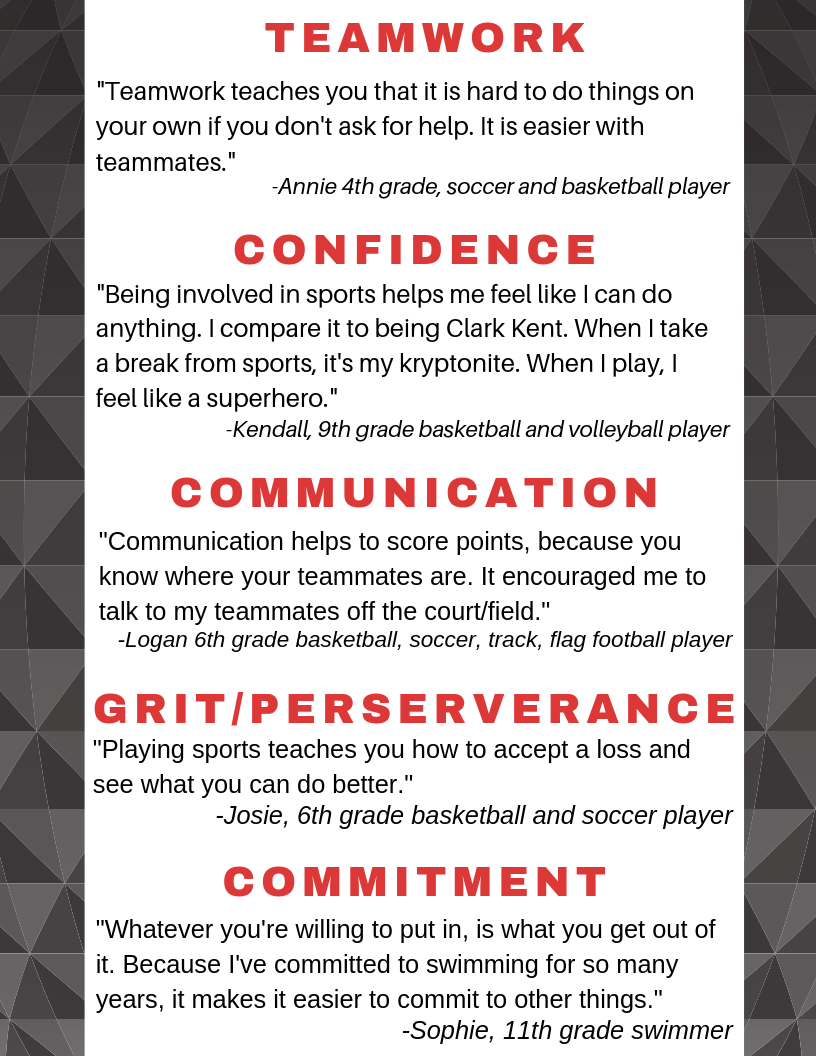
As we help to foster these skills in our female athletes, you can support your daughters by going to their games and cheering them on. Try to point out the positives that you see, which will help to build their confidence. You can demonstrate your own athletic ability or share your sports stories with them. Take your daughters with you to the gym or somewhere you can practice a sport together. If you notice female athletes being recognized on TV or in the community, make sure to point them out. For example, an NFL ad that ran during the Super Bowl featured Sam Gordon, a 15-year-old who started the first girls' tackle football league in the United States. Playing sports can have huge benefits throughout girls' lives, even if they are not going to play in college or professionally. Along with initiatives like National Girls and Women in Sports Day we as parents, coaches, and fellow athletes can work together to keep girls playing and enjoying sports.
Volunteering for MLK Day

Giving the Gift of Technology for the Holidays

- Form Factor (laptop size): The two most common sizes are 11" and 13". The smaller is recommended for students up through 8th grade, while high school students could probably use the screen size upgrade to 13". Smaller units tend to have better battery life.
- Touchscreen or regular screen: About half of all Chromebook models are now touch-capable, and some of them even have a 270- or 360-degree swivel that can turn them into a stand-up or tablet mode.
- Android app compatibility: The models listed as "Stable Channel" in this link can also run Android apps, like the ones on Android smartphones, in addition to Chrome Extensions!
Podcasts for Every Interest
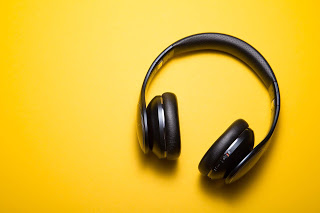
Sam McCormally Completes Fifth Film Score for Documentary "Brave Girls"

Sam McCormally, Siena’s fine arts department chair and music teacher, has just completed his fifth full-length film score, for the documentary “Brave Girls”. A depiction of three young Indian women in a town where conservative culture is the tradition, yet they are trying to rewrite their futures through education and self-determination.
McCormally was approached by Ellie Walton, director, award winning filmmaker, and educator, to create the film score, as they have worked together on several projects in the past. Sam has composed for several dozen short film projects. Walton shared rough edits of the film and they discussed guiding parameters, such as genre, instruments, mood, and pace for the score. Walton and McCormally continued to collaborate until the film was finalized. This entire process took several years, although most of the music was created in the last few months.
McCormally shared his established routine to make sure the score was complete by the production deadline. After work, he would make dinner, put his child to bed, and do the dishes. Then he would enter in his home studio and begin to work on his extra-curricular musical projects. When asked about inspiration for this film, he shared that he drew inspiration for this film score from podcasts and radio programs like Radiolab, This American Life, and Reply All. McCormally also drew from Errol Morris’ films and music from the movie “Pina”.
McCormally used Logic Pro to record, edit, and mix the audio together. He incorporated more acoustic instruments than he has on past projects, since Indian musicians, Rajna and Anjna Swaminathan, were in the score as well. Siena is proud to recognize and congratulate, Sam McCormally, on his successful work as this film’s musical composer.
Tips from a College Admissions Representative
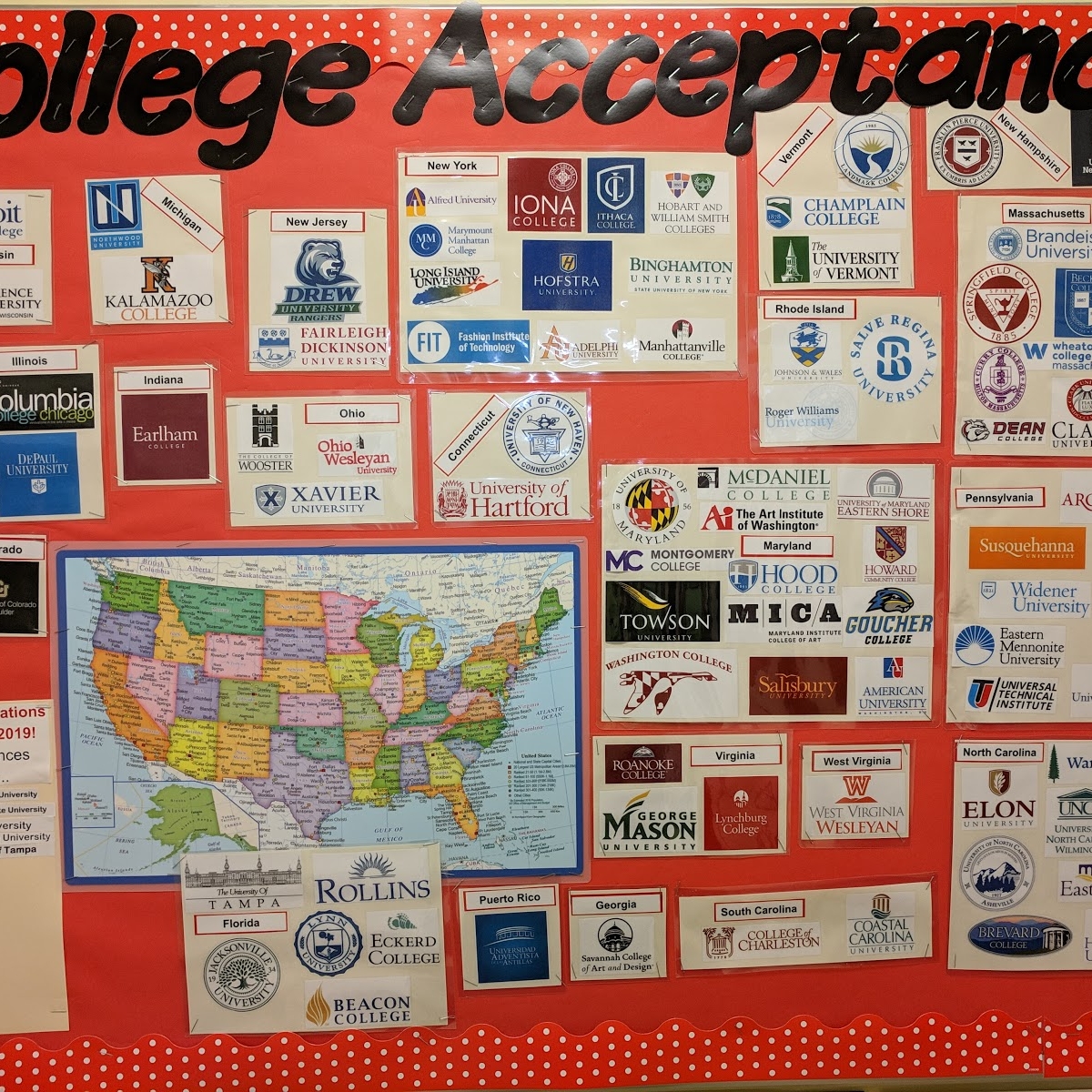
-
Write your college essay about an activity or event that was particularly important to you. Your goal should be that if you dropped the essay on the floor in your school, and forgot to put your name on it, someone would be able to pick it up and recognize your voice. This means that you're fully showcasing your personality and experiences.
-
In your list of activities, highlight your commitment to a few activities that showed how you deeply explored your interests. Colleges also love to see that you've had a summer or after school job.
-
Strategize with the teachers who are writing your letters of recommendation. Explain what you're writing your essay about and what activities you're emphasizing in your application. That way they can also mention them. Colleges like to see continuity in applications.
-
Visit your guidance office and get a list of when representatives from colleges will visit your school. These representatives are responsible for reading applications they receive from your school. Be sure to introduce yourself and explain why you're excited about applying to their college. This will help representatives make a personal connection with you that they'll remember when they read your application.
-
Finally, 2 to 3 weeks after you've submitted your applications, call or email each college to double check that they have everything they need from you to review your application. They'll appreciate your follow through!
Using these tips will really help distinguish you in the college process. Good luck with your applications!
National Adoption Month

November is National Adoption Month, and Siena is celebrating our adoptive families, which make up 20% of the student body. We are honored to have guest blogger Beverly Clarke, a Siena Parent and the Senior Director of Clinical & Support Services at the Barker Adoption Foundation, highlighting Barker and recommending ways that everyone can become involved.
National Adoption Month (November) was originally designated as a time to bring awareness to the now over 100,000 children who are living in the foster care system without a permanent, safe and loving family. Here at Barker, this month holds special meaning as we work tirelessly to find families for these children through our “Project Wait No Longer” program. Through this program we seek to find families for older children (primarily between the ages of 10 – 17), 25,000+ of whom “age out” of the foster care system without a family each year.
When my twins (who are now teenagers) were about 7 years old, they began making up sentences based on their kid-sized understanding of the word “inspiration”. It was fun to discover all the things that are “inspirational” in the life of a 7 year old. My favorites were “I am inspired to eat my broccoli so that I can have a brownie” or “I am inspired to read 3 books so that I can watch an episode of Scooby-Doo”. Listening to them was entertaining but also got me thinking about what I found to be inspirational. Looking back at something I wrote then, I found this paragraph that still rings true today.
“I realize that I am fortunate to feel inspired on a daily basis while working with Project Wait No Longer, Barker’s older child adoption program. I am inspired by the children and teenagers that still have the audacity to hope for a forever family even after surviving years of abuse and neglect at the hands of adults. I am amazed when I see them begin to break down their protective walls, change their behaviors and develop trust for the members of their new families. I am inspired by the parents that come to our program determined to provide loving and stable homes for older children who often times don’t know how to be a part of a family. I am also inspired by the families that stick it out, even when the going gets unbearably tough.”
At Barker, we believe that every child deserves a safe and loving family, and we encourage any family that might be interested in learning more about older child adoption to reach out to us with questions. We also know that there are many ways that everyone can help, even if older child adoption is not the right fit for your family!
During National Adoption Month, please consider helping by:

- reaching out to volunteer with an organization like Barker
- donating to holiday drives that serve foster youth
- connecting us with your community groups or religious communities to schedule information sessions
- donating to programs like Project Wait No Longer
If we work together, we can all make a difference in the life of a child who needs a family.
To learn more about Project Wait No Longer, or ways that you can support kids in foster care, please contact Molly Dunlap at mdunlap@barkerfoundation.org – Barker’s Community & Outreach Specialist, or visit our website at www.barkeradoptionfoundation.org.
To see the story of a few families that took the “leap” into adoption from foster care, please view this link: https://www.youtube.com/watch?v=pQ3PFmUEoTk&t=28s
Guest Blogger: Beverly Clarke is a Siena Parent and the Senior Director of Clinical & Support Services at the Barker Adoption Foundation.
How to Get the Most from Conferences
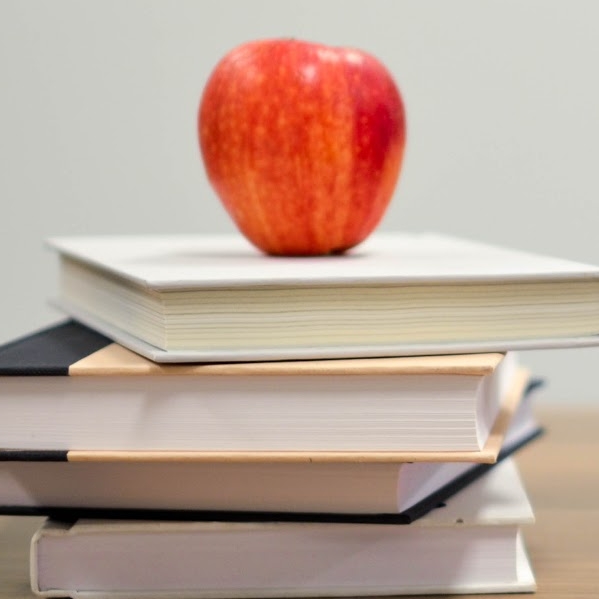
- What are your strongest and weakest subjects?
- What subjects do you like the most and least?
- Is there anything specific you’d like me to ask your teacher?
- What is an important goal for [child’s name] in your class? How have you communicated this to them?
- If there was one tool or strategy you wished [child’s name] used, what would it be? What can be done in class and at home to encourage this tool and/or strategy?
- What should we do to support you at home?
You may also ask teachers what authentic assessments they are providing in their classrooms. Authentic assessments are assignments that give students multiple ways to demonstrate proficiency and real world applications for their skills apart from traditional tests and quizzes.
Following the conference, discuss what you learned with your child by emphasizing positive points and being direct about problems. Make sure to follow through with what was discussed during the conferences at home, especially if an action plan was created.
Conferences are incredibly important to develop a communicative relationship with your child’s teachers. Remember that the goal of each conference is to help your child be successful in and out of the classroom. Be sure to ask lots of good questions, and encourage your student at home, you are an important part of the educational equation to help your child get the most out of their educational experience.
Dyslexia Awareness Month
October is Dyslexia Awareness month! 1 in 5 students have a learning difference like dyslexia, and there are several organizations who are serving and helping this growing population. Read below to find some resources specific to the D.C., Maryland, and Virginia region.
 Decoding Dyslexia, Maryland, is a grassroots movement driven by Maryland families who are concerned with limited access to educational interventions for dyslexia and other language-based learning disabilities in Maryland public schools. Their mission is to raise dyslexia awareness, to empower others to support struggling readers with dyslexia, and to inform policy-makers on best practices to identify, educate, and support students. There are chapters all across the US; you can find your local chapter here. The Montgomery County Chapter of Decoding Dyslexia meets at The Siena School every month! They provide numerous resources for parents and teachers on their website.
Decoding Dyslexia, Maryland, is a grassroots movement driven by Maryland families who are concerned with limited access to educational interventions for dyslexia and other language-based learning disabilities in Maryland public schools. Their mission is to raise dyslexia awareness, to empower others to support struggling readers with dyslexia, and to inform policy-makers on best practices to identify, educate, and support students. There are chapters all across the US; you can find your local chapter here. The Montgomery County Chapter of Decoding Dyslexia meets at The Siena School every month! They provide numerous resources for parents and teachers on their website.
![]() Microsoft is hosting free trainings at their store for local stores for students with dyslexia. Their software helps students read and write. Access articles on their training, learning tools and One Note.
Microsoft is hosting free trainings at their store for local stores for students with dyslexia. Their software helps students read and write. Access articles on their training, learning tools and One Note.
 The DC Capital Area Branch of the International Dyslexia Association (DCIDA) serves dyslexic individuals, their families, the local community of educators and interventionists, and education policymakers.
The DC Capital Area Branch of the International Dyslexia Association (DCIDA) serves dyslexic individuals, their families, the local community of educators and interventionists, and education policymakers.
 WISER (Washington Independent Services for Educational Resources) is another area resource for students with learning differences. Their goals are to improve educational services and promote child advocacy by providing comprehensive resources to children and parents in the DMV area. They are the foremost referral resource for parents and professionals. Some services they provide include testing, tutoring, speech therapy, language therapy, and occupational therapy. They maintain member blogs, speaking events, and publications, which you may access through their website.
WISER (Washington Independent Services for Educational Resources) is another area resource for students with learning differences. Their goals are to improve educational services and promote child advocacy by providing comprehensive resources to children and parents in the DMV area. They are the foremost referral resource for parents and professionals. Some services they provide include testing, tutoring, speech therapy, language therapy, and occupational therapy. They maintain member blogs, speaking events, and publications, which you may access through their website.
 The Learning Disabilities Association of Montgomery County (LDAMC)’s mission is to promote awareness and provide support to maximize the quality of life for individuals and families affected by learning and other disabilities. provides resources for students who have learning disabilities. Access a list of their resources here.
The Learning Disabilities Association of Montgomery County (LDAMC)’s mission is to promote awareness and provide support to maximize the quality of life for individuals and families affected by learning and other disabilities. provides resources for students who have learning disabilities. Access a list of their resources here.
 The Exceptional Schools Fair showcases schools and programs that ensure every child receives an exceptional education. With offerings that range from private day schools to therapeutic services, they aim to equip families and educators with the supports and interventions students need to succeed. This FREE public event is on Sunday, November 17, 2019 from 11am-2pm at the Katzen Arts Center at American University. Visit their website to see the list of schools in attendance. The Siena School, who prepares bright, college-bound students with language-based learning differences, such as dyslexia, to become confident, curious learners who understand their personal strengths and gain the tools and strategies to excel, will be attending the Exceptional Schools Fair, so make sure to stop by the table and say hello!
The Exceptional Schools Fair showcases schools and programs that ensure every child receives an exceptional education. With offerings that range from private day schools to therapeutic services, they aim to equip families and educators with the supports and interventions students need to succeed. This FREE public event is on Sunday, November 17, 2019 from 11am-2pm at the Katzen Arts Center at American University. Visit their website to see the list of schools in attendance. The Siena School, who prepares bright, college-bound students with language-based learning differences, such as dyslexia, to become confident, curious learners who understand their personal strengths and gain the tools and strategies to excel, will be attending the Exceptional Schools Fair, so make sure to stop by the table and say hello!
How to Become Connected With Your School Community

Maybe your child is new to school or you feel distant from parents in the school community. Maybe you are well connected with your school’s community, but you want to learn how to make new families feel more welcomed. Regardless of your situation, here are some helpful ideas on how to get involved at school and build community with other families.
The first big event of the school year that families attend is typically Back to School Night. At this event you walk through your child’s class schedule and meet their teachers. While you are waiting to enter the classroom, why not introduce yourself to a nearby parent? There is a chance that their child is a classmate and might be a great resource for homework help.
If your school offers a Family Picnic Gathering, attend! This is a wonderful way to meet families who have been at the school for years. If you are a returning family, you remember how important this event was to help with the transition to a new environment. Make sure you introduce yourself to the new families and help them get engaged with the school’s community.
Consider attending parent association meetings as a way to meet new school members. There is always time to network prior to the meeting and at the conclusion of the meeting. You will also gain valuable insight from the shared topic of the evening.
The carpool line is a fantastic way to meet school community members. If you arrive early in the lineup and are allowed to leave your car, please do so! Encourage other parents to get out of their cars too, weather permitting. This is a great way to build community with other parents on a daily basis.
Grade level parties are another means of introduction. You may use the school directory to contact the parents of each student in your child’s grade and arrange a time and place to meet. Not enough room at your home to host the entire grade? You can always throw a party at a local park for free!
Another great way to get connected to the school community is to give. There are so many ways to give- time, monetary, advice, and appreciation to name a few. You could provide a donation, volunteer for events, committees or help drive to a sporting event. You can also make sure your child’s teacher feels appreciated, not just during Teacher Appreciation Week. Spread the good news about your school. If you are seeing a difference share that news with others. Our families remain the best referral source.
Lastly, you can volunteer to be a Grade Representative. This will definitely get you connected with every parent in your child’s grade. Grade Reps are a great resource to help you learn about activities related to just your grade.
The start of a new school year is a great time to make new friends and build a community with other parents at your child’s school. It does take effort and engagement to strike up a conversation with a parent that you don’t know, but your school’s community will grow and become a welcoming place for new families.
A Bright Future
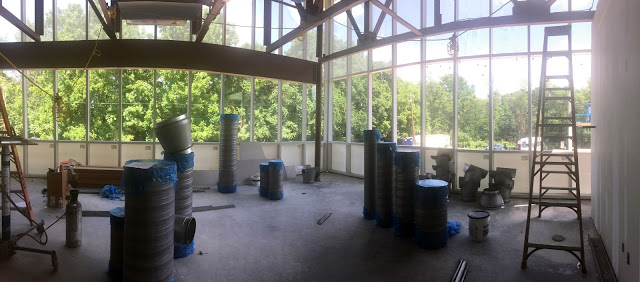
The future of the new wing is looking bright: the windows are in and lighting is being installed in the new rooms! We're enjoying the view from one of the new science labs (pictured above) and wanted to use this blog post to show you some of the new wing's details that aren't visible from outside the building.


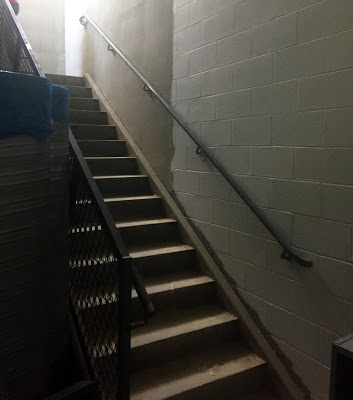

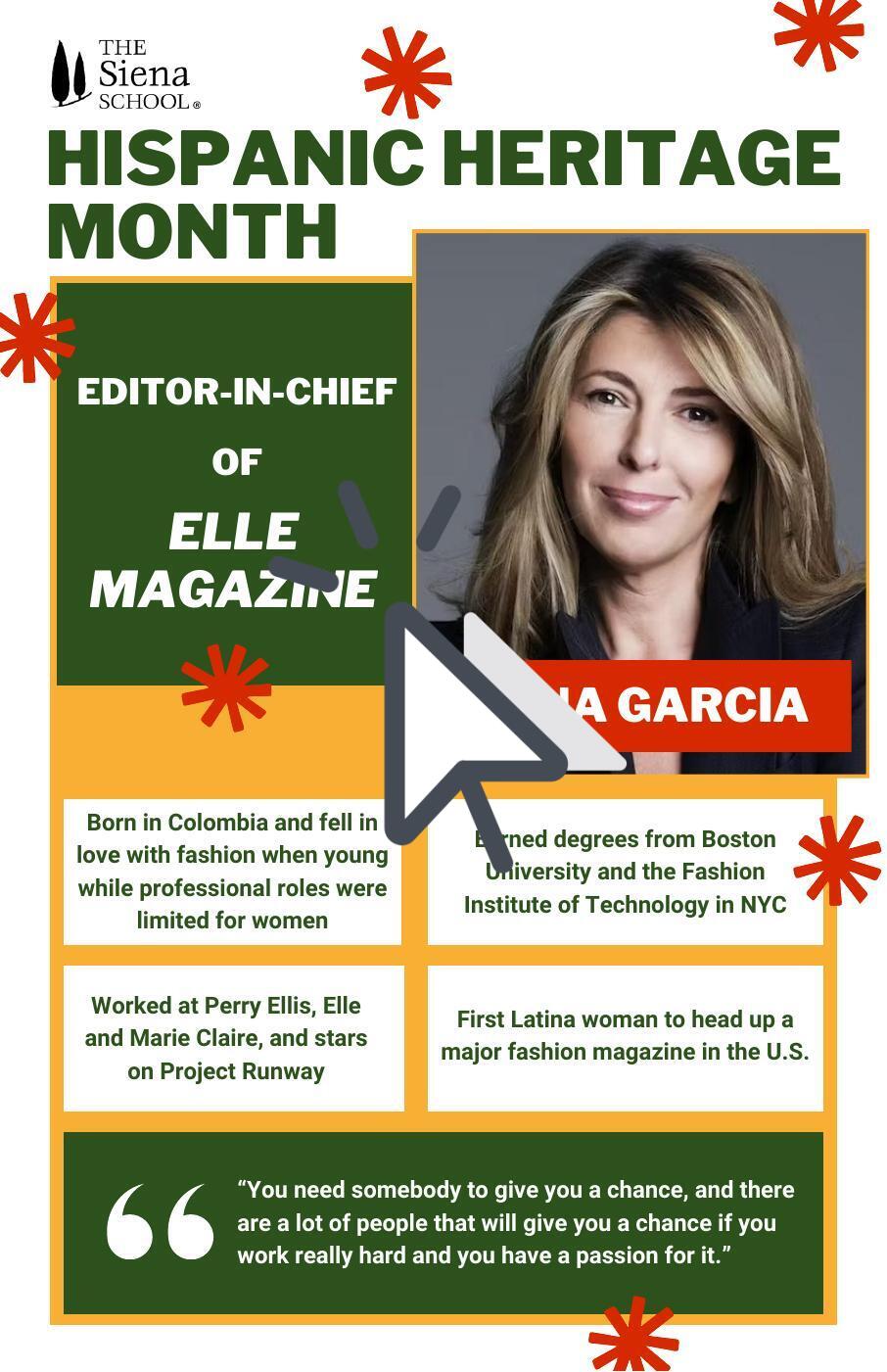

I've used steno pads for writing. The binder is on the top. No smeared pages or dirty sleeves.